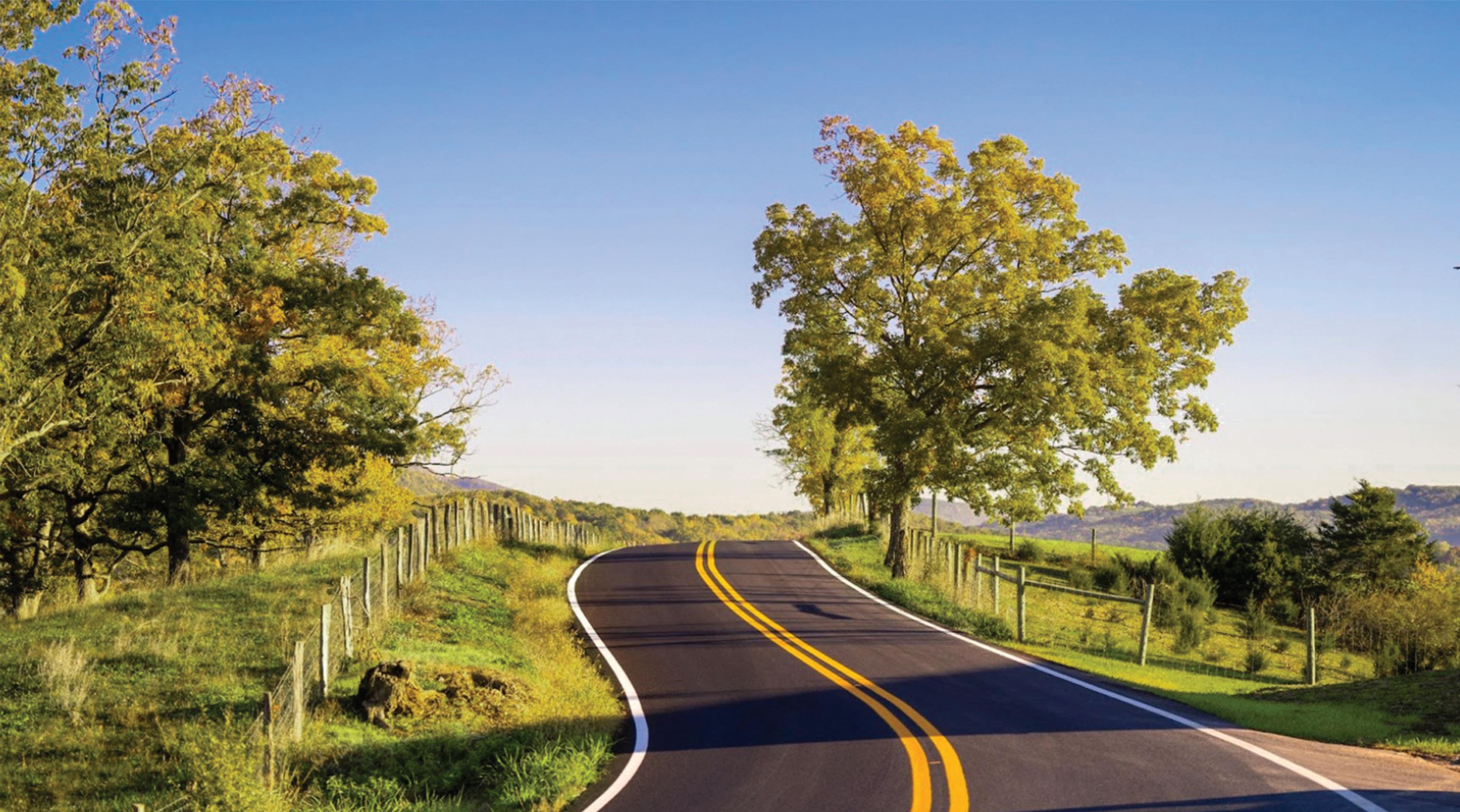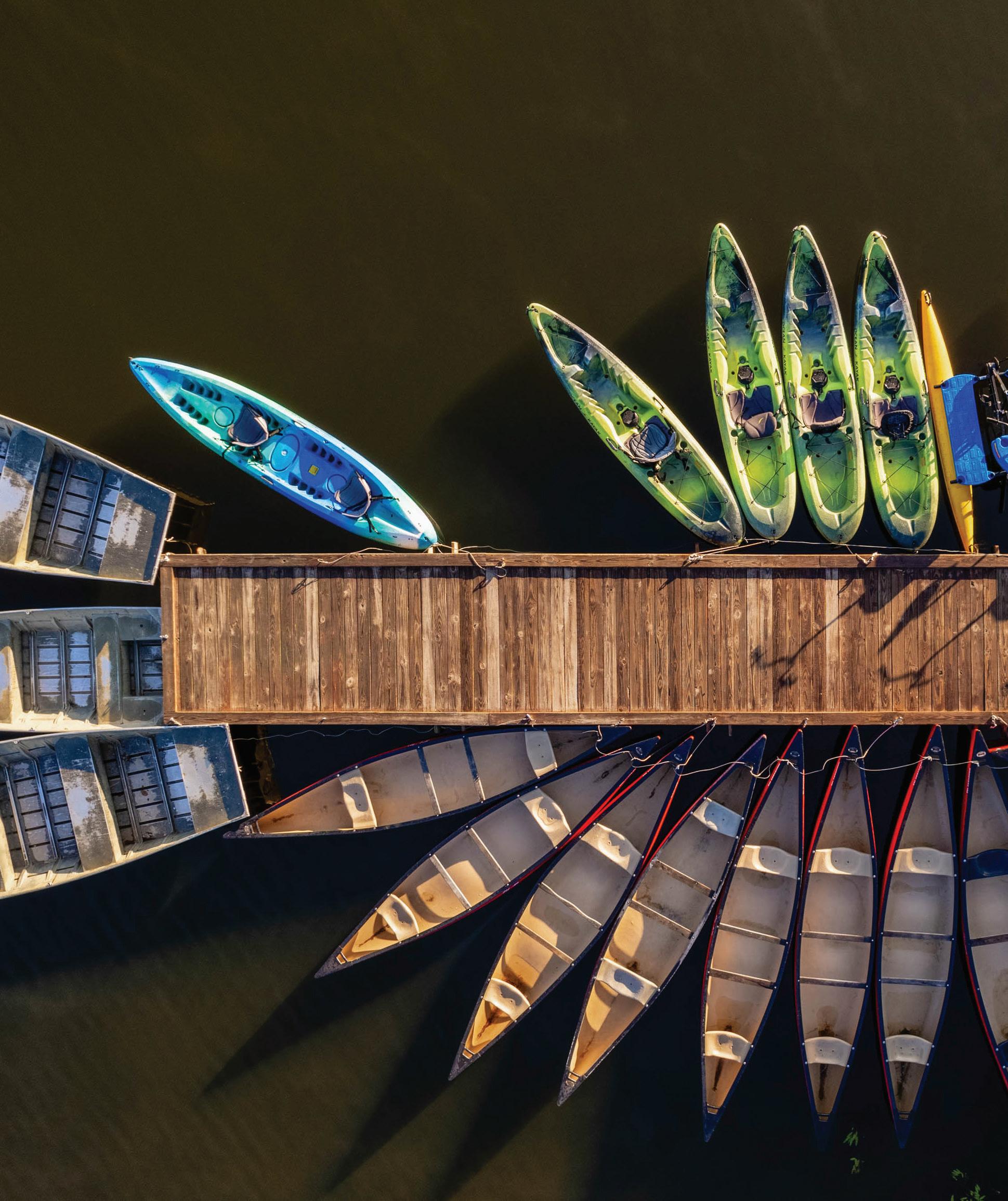




That’s why, we’re fighting to defend our environmental protections — in the courtroom, the halls of government, and our communities.
With four decades of experience and 130 legal and policy experts, we’re standing with our partners and the people across the South to protect the healthy environment we all depend on. Together, we can build a brighter future.
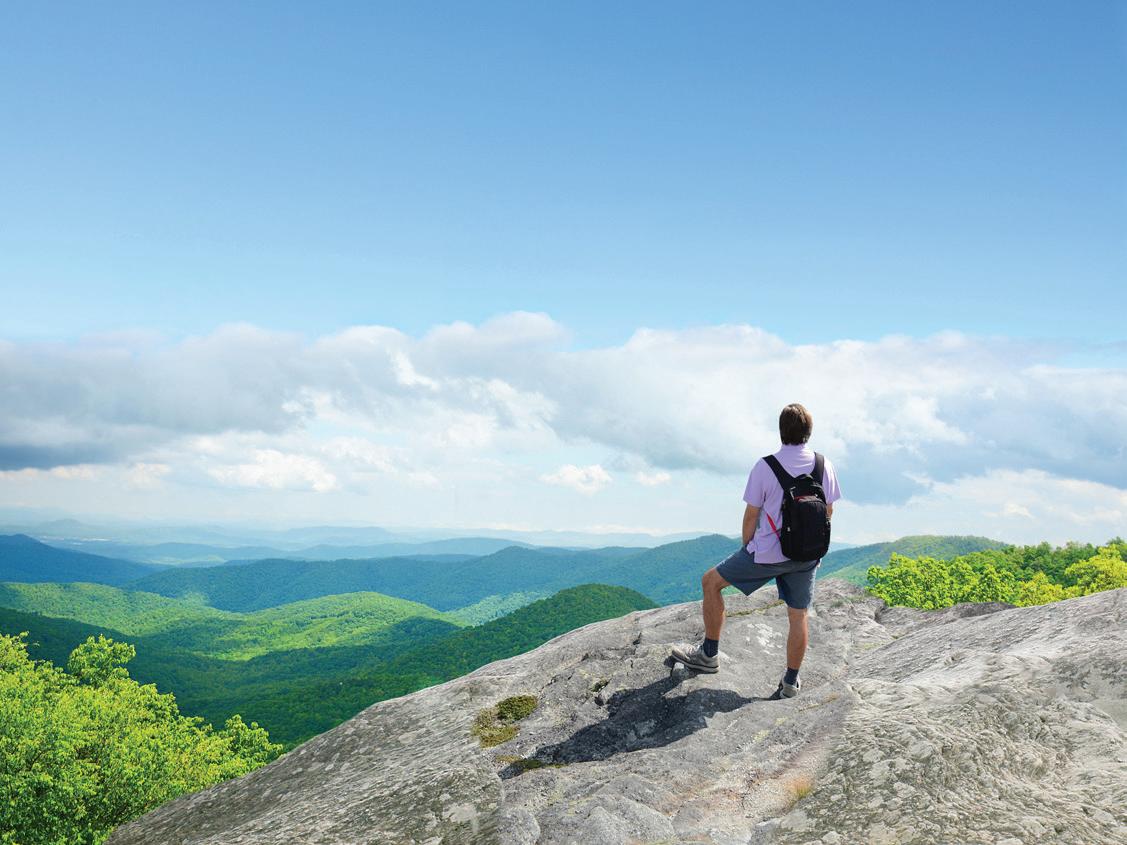


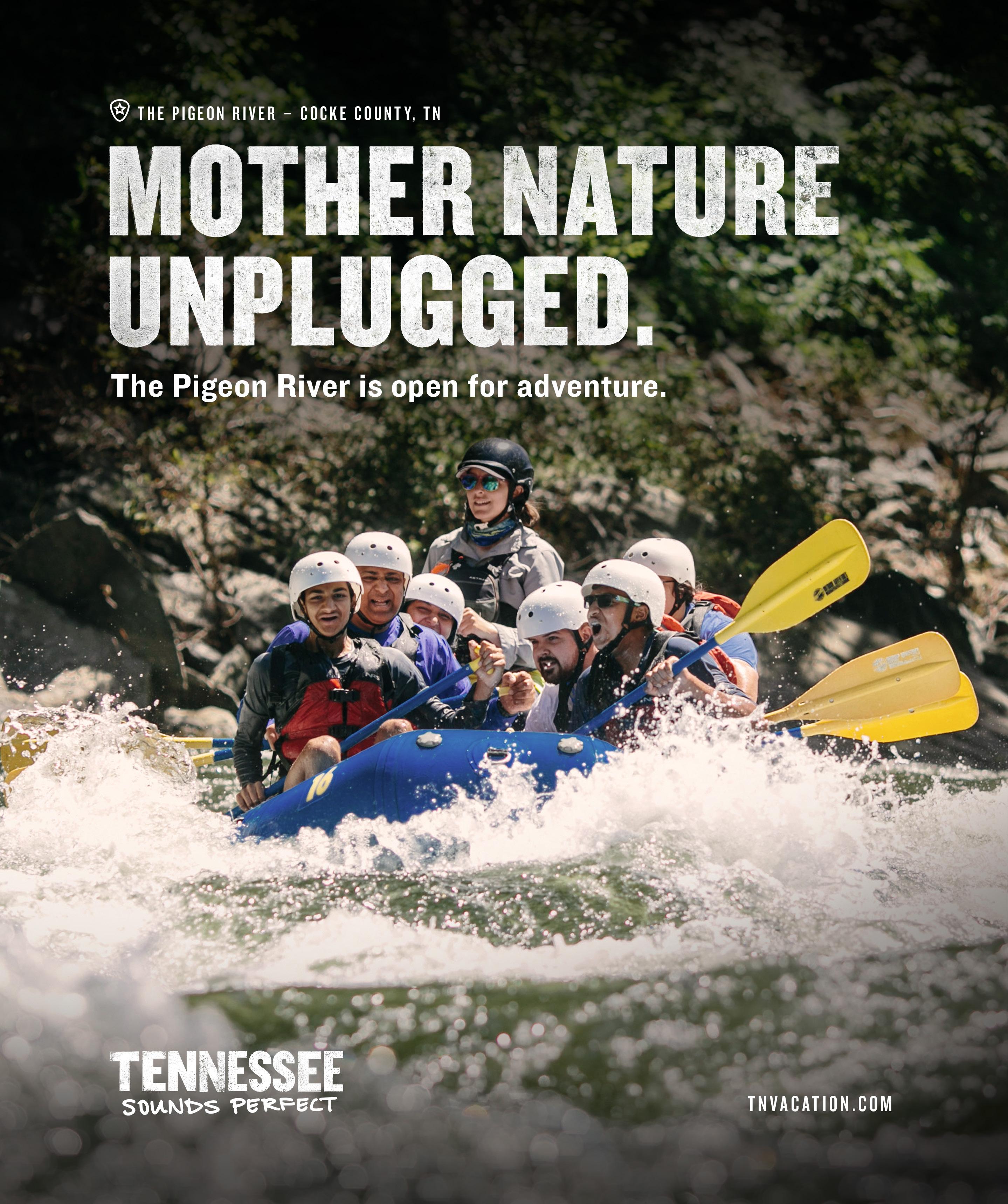
PRESIDENT BLAKE DEMASO blake@blueridgeoutdoors.com
EDITOR IN CHIEF JEDD FERRIS jedd@blueridgeoutdoors.com
PUBLISHER LEAH WOODY leah@blueridgeoutdoors.com
ASSOCIATE PUBLISHER KATIE HARTWELL katie@blueridgeoutdoors.com
SENIOR DESIGNER REBECCA CENCEWIZKI art@blueridgeoutdoors.com
EDITORIAL & PRODUCTION
SENIOR EDITOR WILL HARLAN will@blueridgeoutdoors.com
GEAR EDITOR DOUG SCHNITZSPAHN doug@elevationoutdoors.com
CONTRIBUTORS
DAVE STALLARD
GRAHAM AVERILL
ERIC J. WALLACE
LAUREN STEPP MARY BETH SKYLIS MIKE BEZEMEK
COPY EDITORS
JULIA GREEN, ROBERT MCGEE
ADVERTISING & BUSINESS
SENIOR ACCOUNT MANAGER BUCK BRICE buck@blueridgeoutdoors.com
ACCOUNT EXECUTIVE HANNAH COOPER hannah@blueridgeoutdoors.com
ADVERTISING CONTENT COORDINATOR AMANDA LIVERETTE amanda@blueridgeoutdoors.com
BUSINESS MANAGER MELISSA GESSLER melissa@blueridgeoutdoors.com
DIGITAL MEDIA
ONLINE DIRECTOR CRAIG SNODGRASS webdir@blueridgeoutdoors.com
CREATIVE CONTENT MANAGER SHANNON MCGOWAN shannon@blueridgeoutdoors.com
CIRCULATION INQUIRIES circulation@blueridgeoutdoors.com
ADVERTISING INQUIRIES advertise@blueridgeoutdoors.com
977 SEMINOLE TR PMB294
CHARLOTTESVILLE, VIRGINIA 22901
ASHEVILLE, NORTH CAROLINA
BLUERIDGEOUTDOORS.COM
©2024 Summit Publishing, LLC. ALL RIGHTS RESERVED

GOT A STORY IDEA OR COMMENT? submit@blueridgeoutdoors.com BLUERIDGEOUTDOORS.COM
Meet Charlie Walbridge, an avid kayaker who’s dedicated his life to advancing whitewater safety.
Voices from the South speak up for public lands.
48
Get on the water with our picks for the best new paddling gear.
49 | THE OUT AND BACK
On a charitable river trip, an adventurer learns to slow down.
Our monthly playlist of new Southern songs, including tracks from Wednesday and Old Crow Medicine Show’s Ketch Secor.
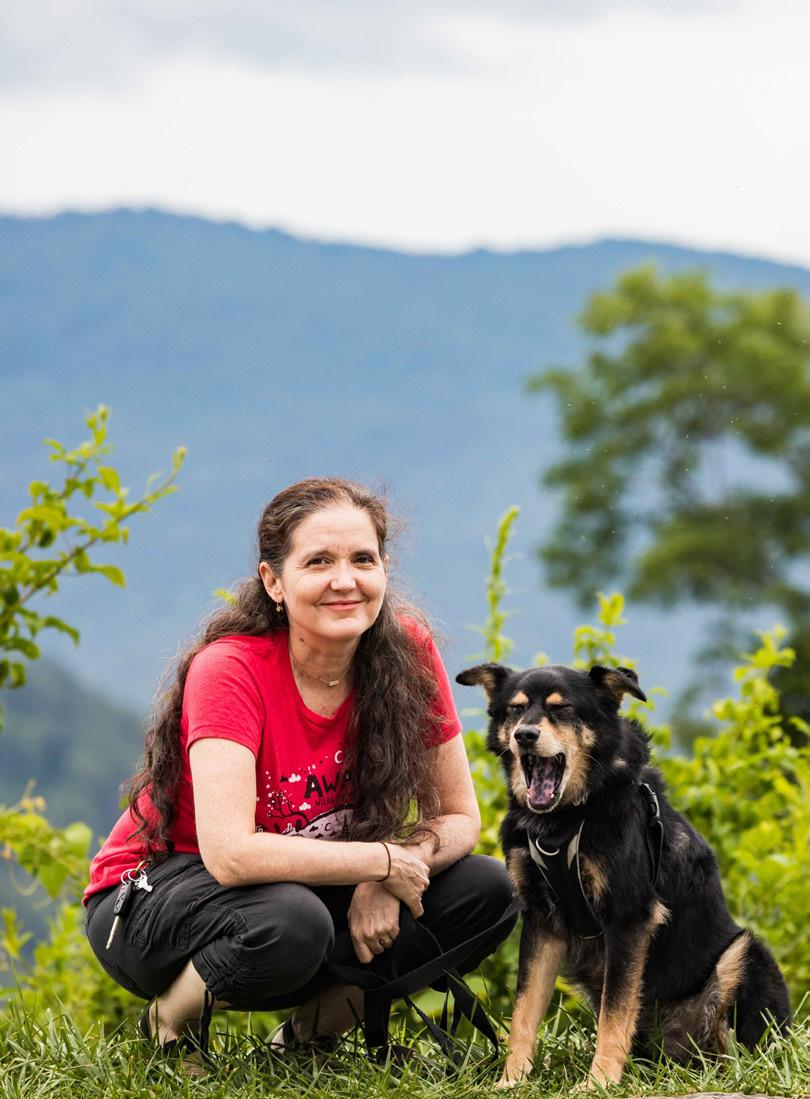

10
Relaxed floats on scenic mountain rivers that offer laidback kayaking adventures for all ages.
16 | WHERE THE PROS PADDLE
Some of the region’s top kayakers share their favorite whitewater runs.
20
Get on the water with these five organizations doing good on regional rivers.
36
Gawk at towering cascades at these four must-visit waterfalls in the Blue Ridge.
After a self-supported trip on a rugged Southern river, an adventurer reveals tips and best practices for overnight kayaking and rafting trips.
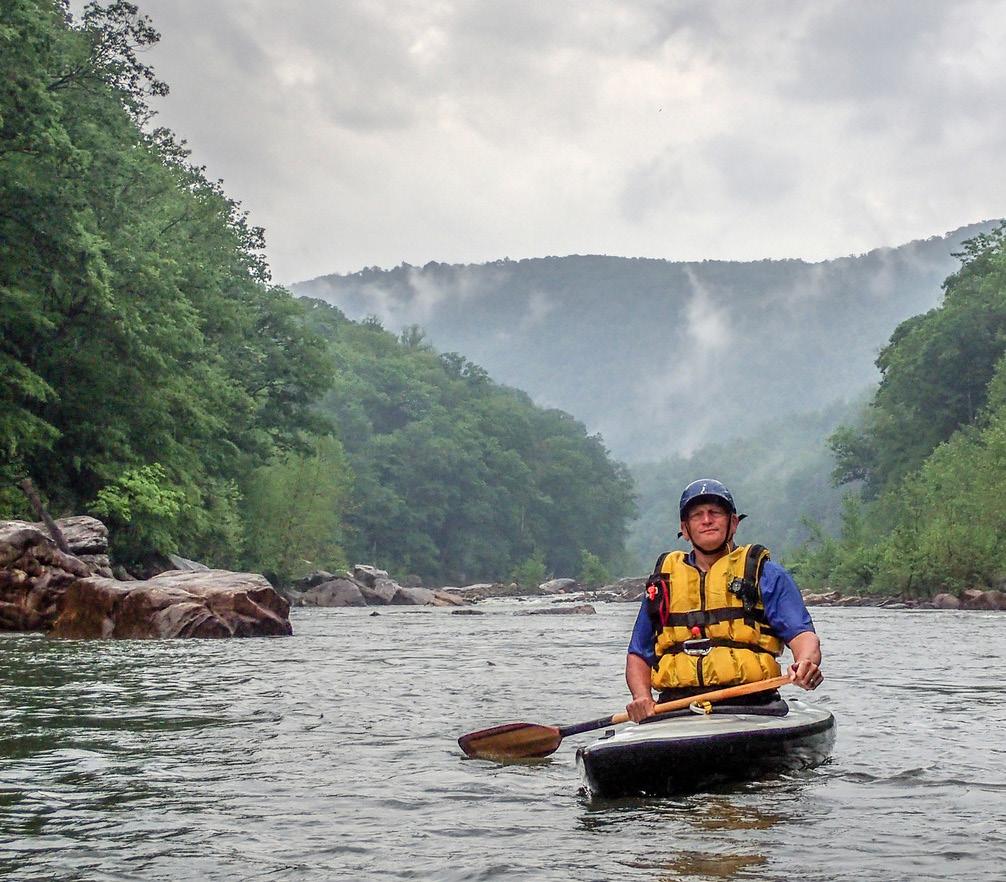
Meet Charlie Walbridge, an avid kayaker who’s dedicated his life to advancing whitewater safety
BY JARRET VAN METER
ESTABLISHED IN 1903 IN HEBRON , New Hampshire, Camp Mowglis is named for the human protagonist of Rudyard Kipling’s The Jungle Book The camp’s logo, a wolf, is a nod to the animal that raised the young boy in the story, teaching him pivotal lessons including a respect for the immense powers of nature. True to its promotional imagery, Camp Mowglis served a similarly edifying role for Charlie Walbridge, who grew up in New York City, not knowing if there “was dirt under the concrete,” and his summer camp experience laid the foundation for a lifetime of outdoor adventure. Camp Mowglis was where Waldbridge got his first taste of whitewater, on Walker’s Falls on the Saco River, and where he began honing his storytelling ability, around campfires and in his cabin. These two pursuits, paddling and storytelling, would serve as the catalysts toward Walbridge’s unique career that included runs as Safety Chair for both the American Canoe Association and American Whitewater. Today, more than six decades removed from his summers at Mowglis, he
slalom course on Ouleout Creek in New York when he capsized, failed to roll up, and caught his foot under a submerged boulder. He was held under by the current for more than six minutes and died.
The incident served as the subject for Charlie Walbridge’s first published report, which ran in the November/December issue of The American Whitewater Journal. In addition to laying out the facts of the event, the report included an Analysis section, and a Comments section. It’s a mix of first-person reflection and journalistic reportage: informative, empathetic, and highly accessible.
Two years later, Bob Taylor, a top paddler in West Virginia, drowned while paddling the Upper Gauley. His death served as the subject of Walbridge’s second report, published in the same journal. It included detailed descriptions of the rapid to which Taylor succumbed, his athletic prowess, and a hand-drawn map.
and techniques. In 1986, he took on the role of Safety Chair, the same title he held for ACA, for American Whitewater.
All the while, he continued to publish reports. In the 1990s, American Whitewater created a database as a means of collecting the raw, public-provided reports that Walbridge ultimately shaped into his Journal stories. Now, he primarily receives reports through Facebook and email. His skill is using his expertise and knowledge of rivers and safety measure to imbue cut-and-dry information with narrative texture.
is still considered a preeminent voice in whitewater safety and is using his unique skillset to improve awareness and knowledge in the paddling community.
Walbridge attended Bucknell University where, along with his roommate, he started the school’s outing club. It was a different era of paddling, and he remembers that nobody wore life jackets during his first collegiate trip on nearby Penn’s Creek with some friends. It wasn’t the cleanest run, and one member of the party lost his camera, “but nobody got too beat up.”
Walbridge graduated from Bucknell in 1971 and in the coming years more slalom events and competitions began to take shape, providing a means for paddlers of all skill levels to meet people and find community. Paddling was still seen as relatively safe because, Walbridge says, “the people who did it were very conservative.”
Everything changed for Walbridge, and subsequently for the sport, on the morning of October 4, 1975. Ahead of a scheduled race, paddler Gene Bernardin was working his way through a practice run of the
The popularity of the two reports yielded an invitation for Walbridge to serve as Safety Chair for the American Canoe Association in 1977. At the time, the ACA was trying to turn back several proposed Coast Guard regulations like the use of level flotation in whitewater boats. The problem was that the proposed regulation was formulated from the Coast Guard’s observation of large boats on large bodies of water, rather than small boats on smaller, moving water. Walbridge and his paddling comrades stepped in to lend their expertise.
“And they listened to us,” says Walbridge of the Coast Guard.
As Safety Chair of the ACA, he also expanded his efforts to include people outside of the paddling community, giving swift water training demonstrations for fire academies in Ohio and Pennsylvania, and putting on large, public safety symposiums on the Potomac and James Rivers in the late 1970s. ACA Commodore Merle Garvis asked him to put together a new river rescue course in the 1980s, and Walbridge, along with collaborator Wayne Sundmacher, developed the course that was ultimately adopted by the ACA, focusing on in-water skills
“He's a storyteller,” says Kevin Colburn, the National Stewardship Director at American Whitewater. “He tells the stories of what happened, I believe, because he thinks that it gets deeper into our psyches, and it just has more of an effect on helping the paddling community learn by telling somewhat evocative—short, concise, but evocative—stories of these experiences that people had in our community.”
Walbridge has flirted with writing fiction on occasion, but the forays always garner two quick truths: he was no Kipling, and “reality is so much more interesting.” At age 77, his work isn’t finished. He still gets out on the rivers near his home in West Virginia and is still using storytelling to promote water safety. While many of his previously published reports detail water fatalities, his newest book, "Whitewater Rescues: True Stories of Survival, Bravery, and Quick Thinking," published in 2024, is a compilation of the “Near Miss” incident reports he has compiled over the years in his database.
“These are pretty inspiring,” he says of the stories in the newest book. “They're pretty good, pretty uplifting stories.”
As the sport grows in ambition, Walbridge hopes that, through telling trues stories, he can help foster a buffer of awareness between paddlers and complacency.
“Face it, paddling is so much fun, it's easy to forget what we're dealing with,” he says. “The forces are incredible.”

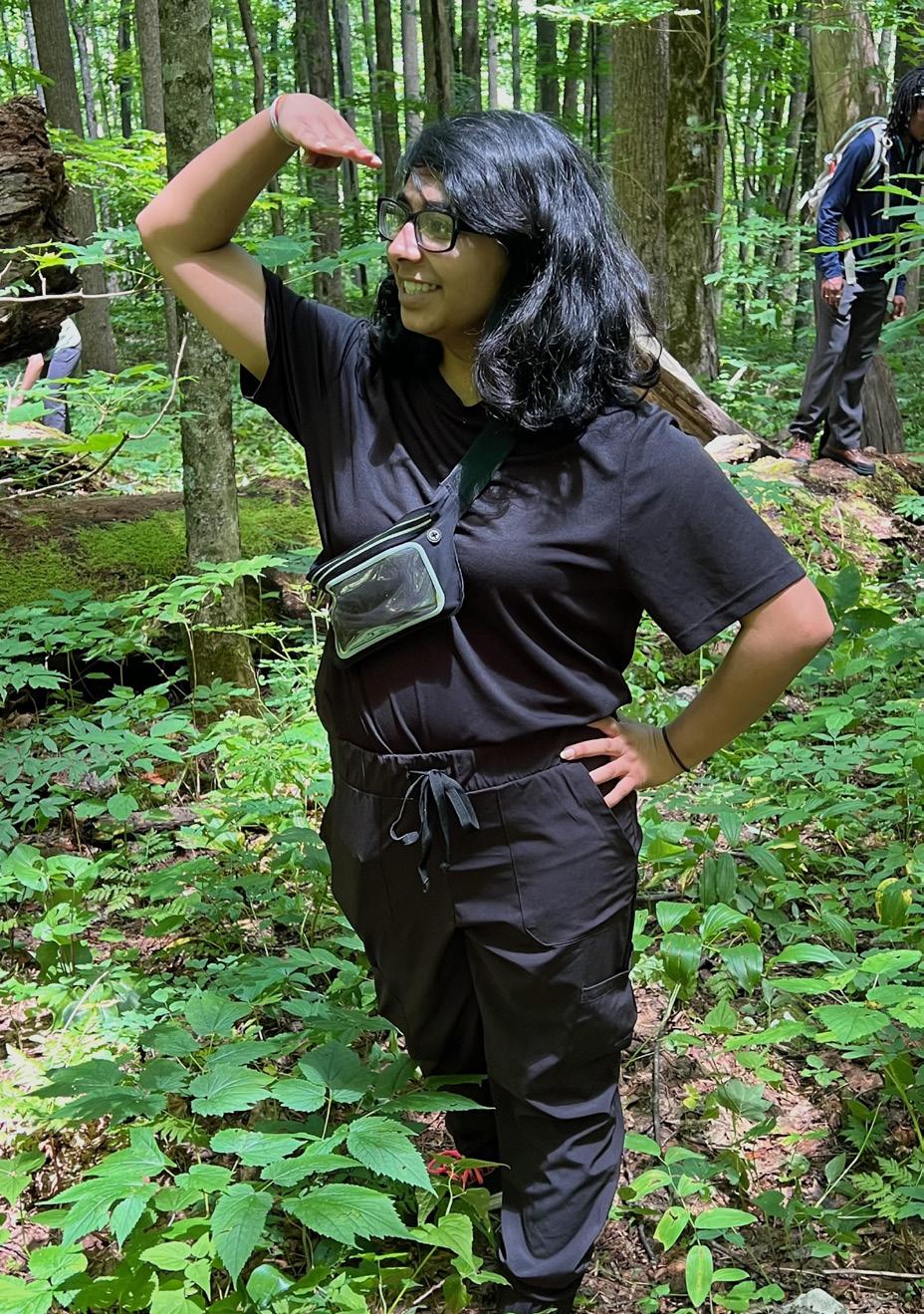
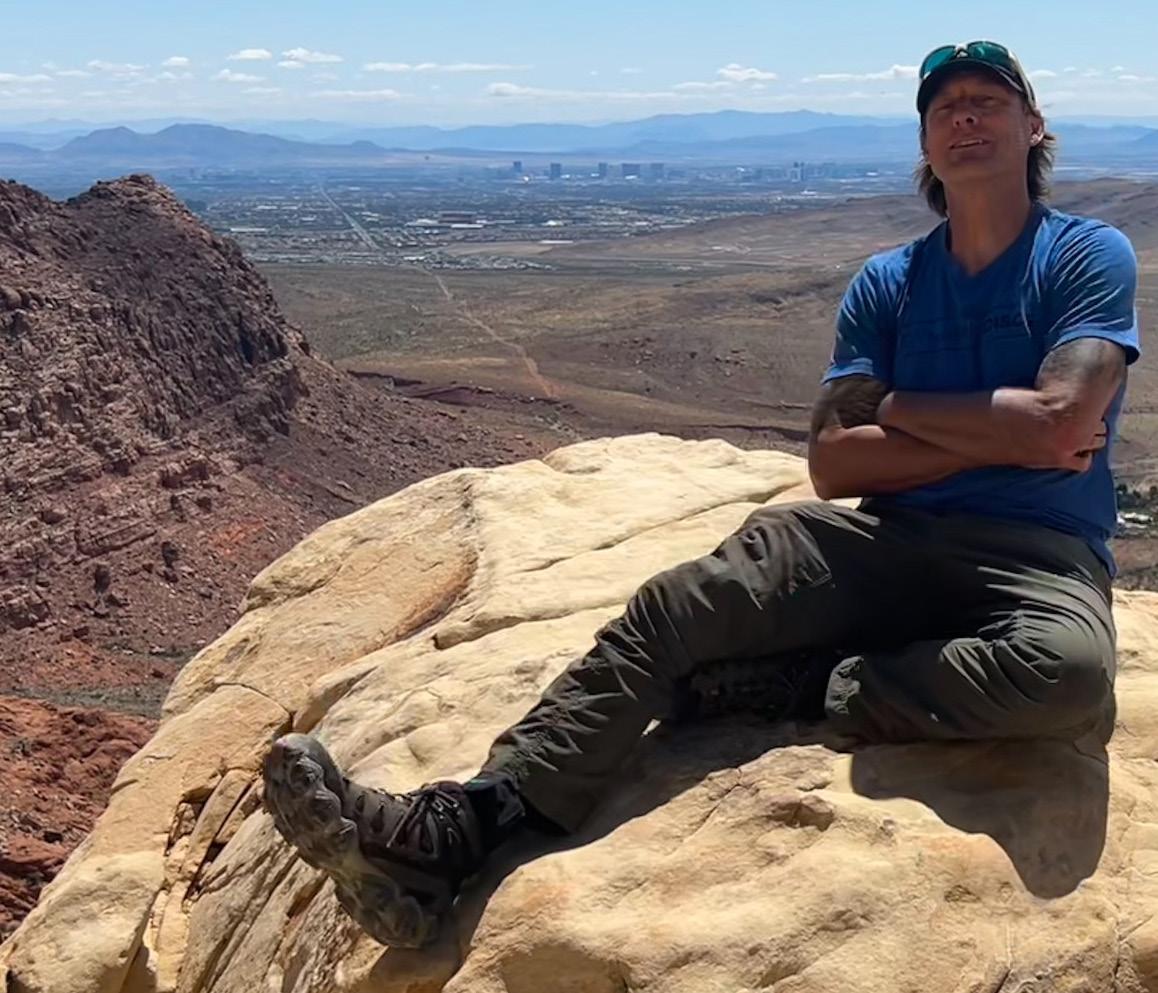
Voices from across the Southeast share their greatest hopes and fears for national parks and forests
BY FRANCES FIGART
LOVE AND FEAR ARE strong human emotions. Both are heightened for many when it comes to public lands—places of refuge for the human spirit. The Southeast is home to 39 million acres of public lands— from the cranberry glades of West Virginia to the cypress swamps of the Okefenokee. Public lands are a shared national treasure. Now more than ever, in a time of deep division, they are common ground. We come together in our national parks and forests to cherish the wild and beautiful landscapes that we have protected together.
I asked public lands visitors from across the Southeast what binds them to the public lands they love, and what they fear for themselves and for our nation if those lands are no longer protected.
DEEYA,
ENVIRONMENTAL SCIENCE STUDENT, FLORENCE, S.C.
“From our people to our landscapes, diversity is the best thing about the U.S. I want future generations to have the same opportunities I did to play in nature and admire Mother Earth’s diverse beauty. The talk about privatizing our public lands makes me scared not only for myself but for our future generations. I’m worried that our lands would be cut down before more people can see America’s natural beauty.”
“Public lands are the places we can go to see what the world was like before humans altered the environment so significantly that it would be unrecognizable to an early human ancestor. We need these places to know how things should be if nature, and humans as well, are to survive and flourish. What I most fear is that humankind will alter our
world to such an extent that much of nature will cease to exist.”
.
“Public lands help me to connect with the wild that used to be everywhere. They are a refuge, a place of calm and curiosity. A place for the mind to take a break. I fear that the wild places will disappear completely, leaving no space for calm. Leaving no place for nonhuman living beings to live. I fear for the ultimate slow destruction and suffering of all living things.”
QUINT, CONSERVATION RESEARCHER, ATHENS, GA.
“Public lands are that rare expression from our government that ‘we're all on this little blue marble together.’ They are a refuge from our daily hustle and bustle, a reminder of geological time so
different from the 24-hour news cycle, constant stimulation from the built environment habitat we have created for ourselves.”
“My love of the outdoors has been escalated by Hurricane Helene’s decimation. To heal, I must be in the few sanctuaries left where we can remember we are all interconnected. Public lands are not just scenic backdrops. They are alive and they anchor our humanity.”
“Our diverse public lands transcend the transactional mindset and represent a time beyond ownership, extraction, and exploitation. My fearful expectation
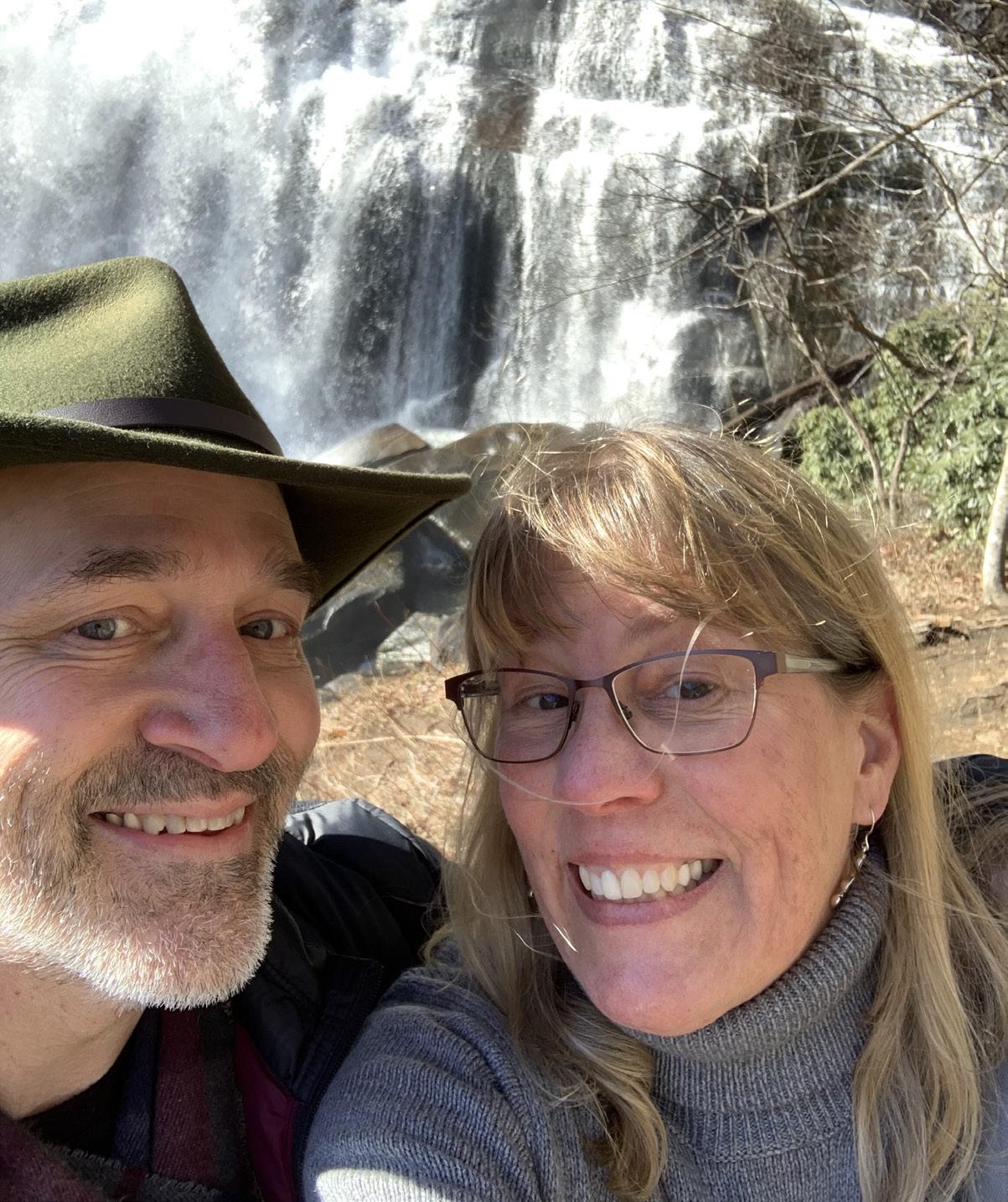
is that greed-driven powerbrokers will leave us fragmented, privatized remnants of public lands, ignorantly destroyed forever.”
“Public lands are refuges for biodiversity and for the human spirit. Their role in preserving biodiversity is clear, but accessibility to people—for recreation, inspiration, education, exploration, rejuvenation—is equally important, itself a kind of preservation. A huge fear we have is the radical undermining of public lands by eliminating funding while opening preserved natural areas to corporate exploitation. It is deeply disturbing to see the administration
take a wrecking ball to what has aptly been called ‘America's best idea.’”
“I love any place that privileges the wild free-living animals and gives us humans a chance to immerse ourselves in natural areas in non-interfering ways. When a real estate developer is president, everything looks like a potential golf course or country club. If public land managers are told to 'manage' the lands primarily for humans, then we have ‘wildlife refuges’ and national forests where sentient beings are seen as ‘game’ to be hunted and trapped.”

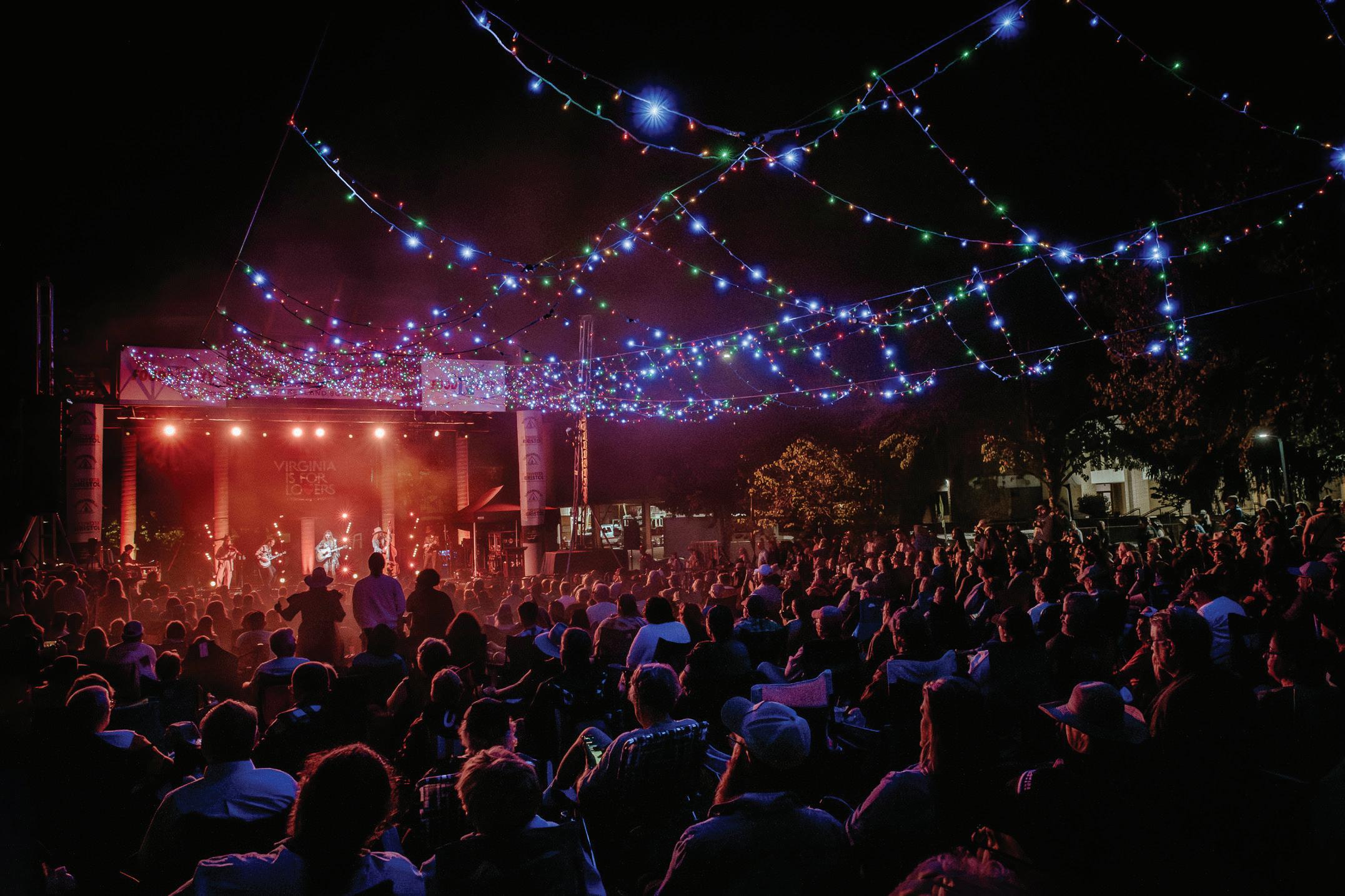

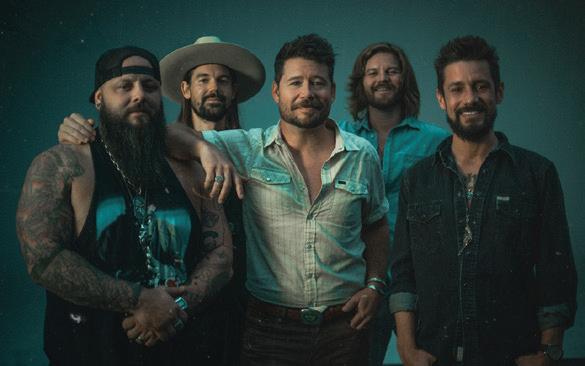
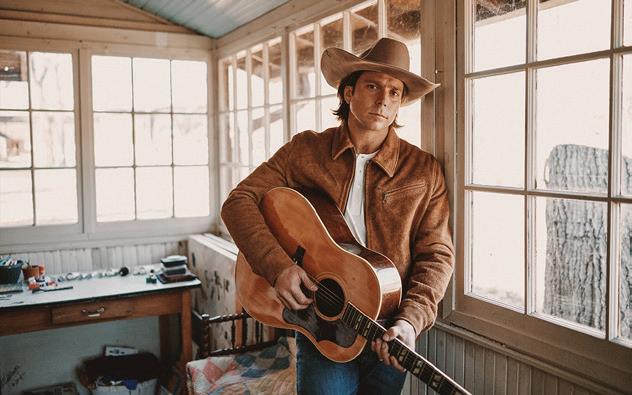
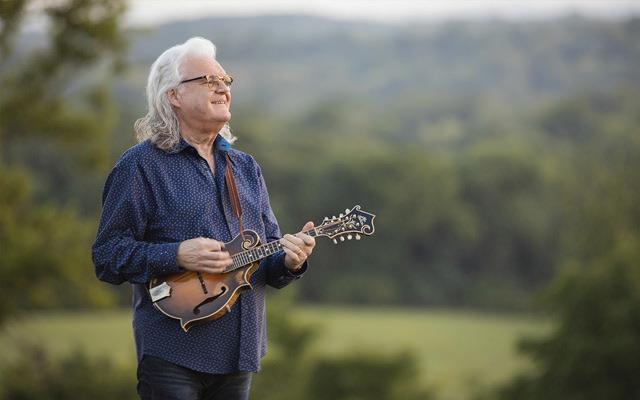
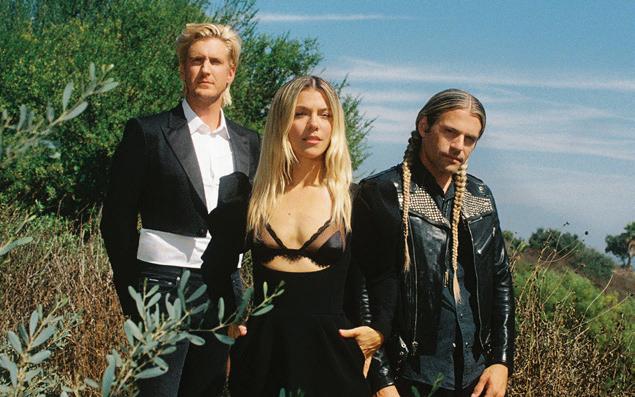

WILDLIFE AND HABITAT ADVOCATE, ASHEVILLE, N.C.
“Public lands we preserved for their beauty and ecological significance are the last best places for wildlife and natural processes to exist in our human-dominated, over-developed, and technology-driven world. I fear they will be liquidated and sold to the highest bidder all for the sake of a greasy buck.”
RETIRED BIOLOGY PROFESSOR, JOHNSON CITY, TENN.
“Our public lands provide us with the ability to hike, fish, botanize, and birdwatch on vast acreages of varied landscapes. Many of our public lands were acquired because of and after they were degraded by irresponsible extractive processes. Some of these problems have been ameliorated over the years but
we still suffer from management directed primarily toward tree farming and mining. Current proposals for public lands may set us back centuries.”
PHOTOGRAPHER, ROANOKE, VA.
“In these politically charged times, there's profound medicine in standing beside a mountain stream where the only sounds are of rushing water and wind through the trees. In these spaces, political differences fade as we reconnect with our humanity and relationship to the natural world. My greatest fear for public lands is that they will lose protection and suffer irreparable damage. I want my daughter to continue to be able to experience wild nature, and public lands are the only real chance that she will have to do so.”












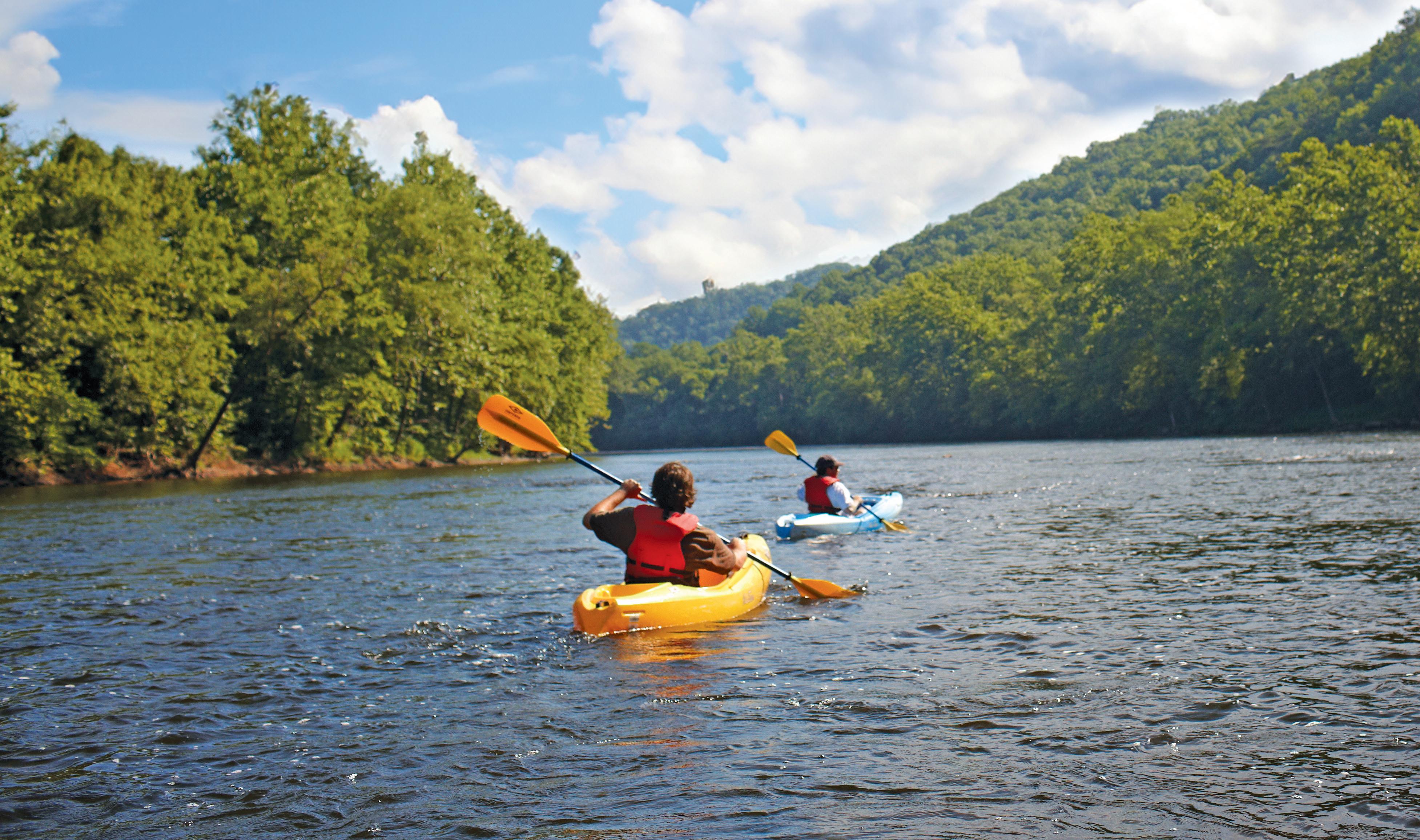













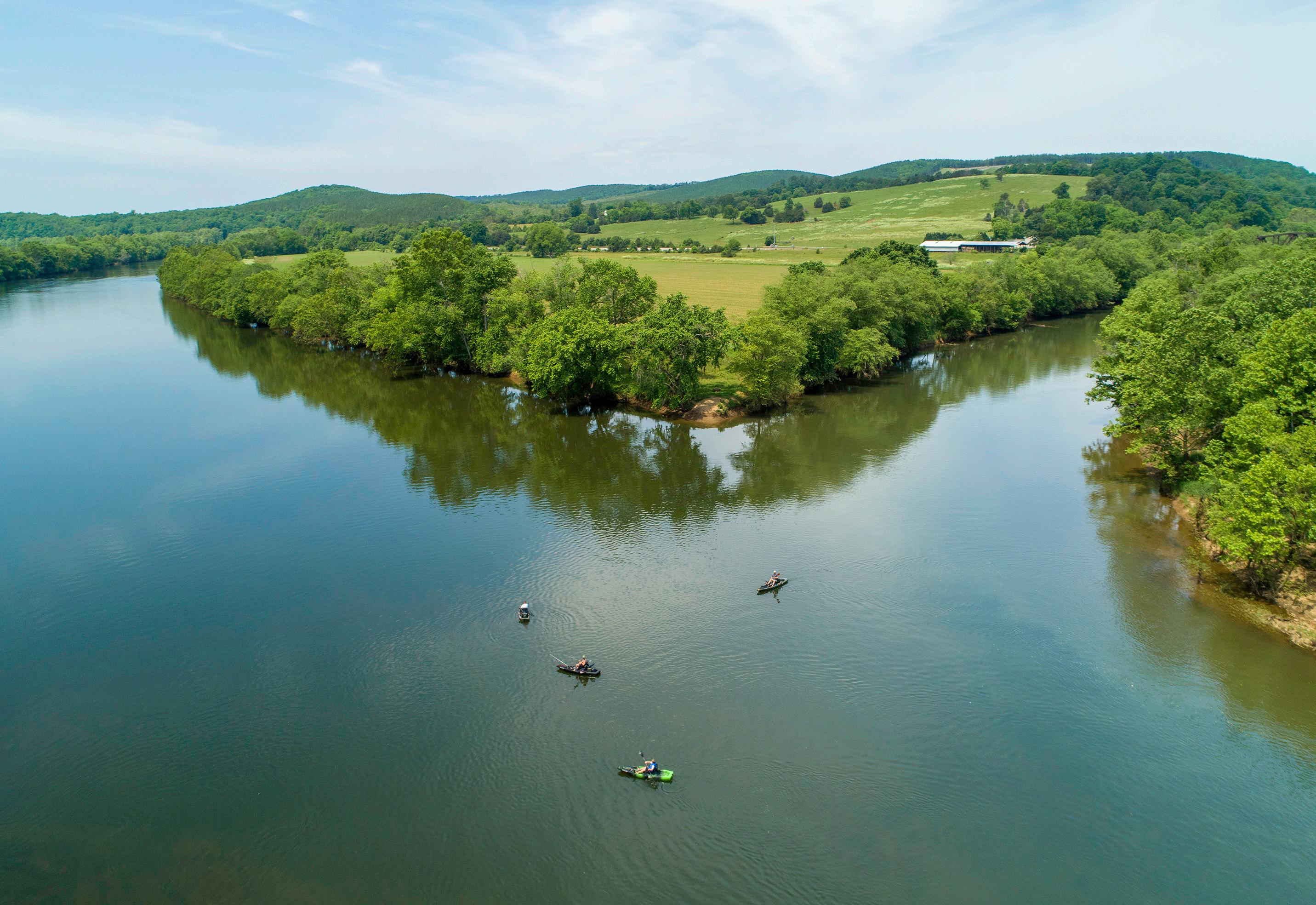

BY ERIC J. WALLACE
These relaxed floats on scenic mountain rivers offer laidback kayaking adventures for all ages
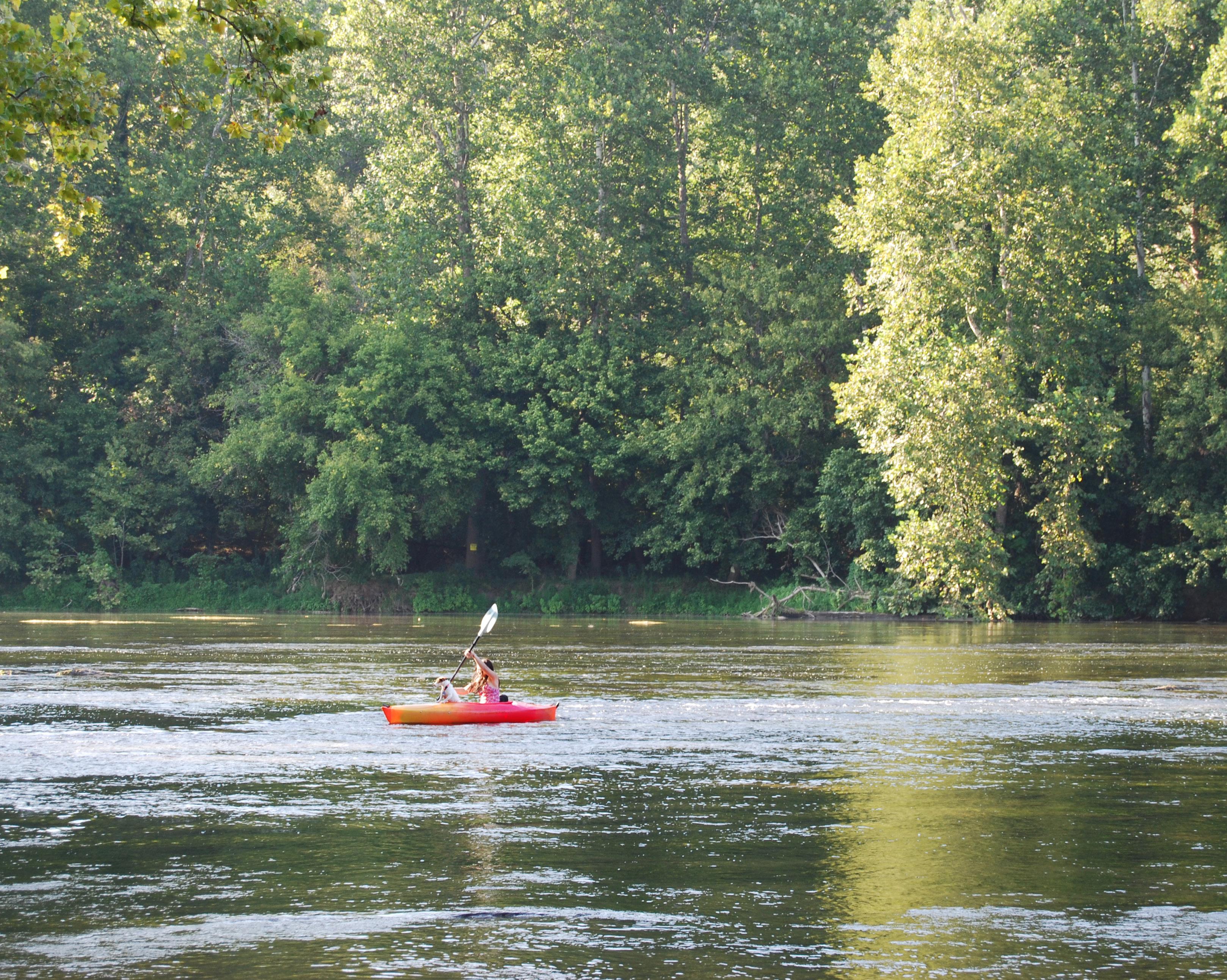
SUMMER
FUN, IT'S HARD TO beat a canoe or kayak float down a long, breezy span of smooth and scenic mountain river. Soak up rays and near-endless eye candy as you drift past a hit parade of Blue Ridge cliffs, riparian forests, looming peaks, farmland, and wildlife. Cool off in hidden swimming holes. Break out the snorkel gear on clearwater days and get a workout exploring freshwater ecosystems filled with startlingly colorful rocks and fish. Pack the cooler with choice beverages and snacks and find a sweet gravel bar to post up on for an epic riverside picnic. If this sounds like your kind of fun, we’ve got four paddle-ready Blue Ridge rivers worth exploring.
Revel in a gentle and scenic 8-mile float on the Potomac through a meandering corridor
of protected lands along the Chesapeake and Ohio Canal National Historical Park. Put in near Shepherd University at the Princess Street boat ramp by a set of Antebellum-era stone pillars that once held a covered wooden bridge and railway crossing. This stretch of river is about 600 feet wide and flows at a smooth, steady pace through lush, densely forested banks flanked by the Elk Ridge mountain range to the east. Development is remarkably sparse and occasional sections of riffles bring an added fun factor. Look for an 18th century packhorse crossing known as Boteler’s Ford, which is home to a pause-worthy gravel bar. Don’t miss the 1834 stone aqueduct on river left at the mouth of Antietam Creek a few miles above the takeout at Dargen Bend Boat Ramp. Guide: Longtime area outfitter and outdoor shop Shepherdstown Pedal & Paddle offers shuttles within 20 miles of town, a range of guided trips, and DIY canoe or kayak rentals.
thepedalpaddle.com
Post-Float: Book a posh and spacious stay about four miles from the put-in at the Antietam Inn. The five-suite, 19th century Victorian turned boutique hotel sits in the heart of the historic 18th century village of Sharpsburg. Pair house brews with delish wood-fired pizzas and smoked-meat handhelds at Potomac Ridge Brewing, or head to Press Room 129 in downtown Shepherdstown to sample a delightful menu of local-focused New American cuisine that changes weekly and feels like something you’d expect to find in Asheville, North Carolina.
This mellow-ish eight-miler begins in Bent Creek at the Virginia Department of Wildlife Resources boat ramp beside the US 60 bridge and ends at 1,561-acre James River State Park. The route
THE SHENANDOAH RIVER HAS MELLOW STRETCHES OF FLAT WATER FOR RELAXED SUMMER PADDLING.
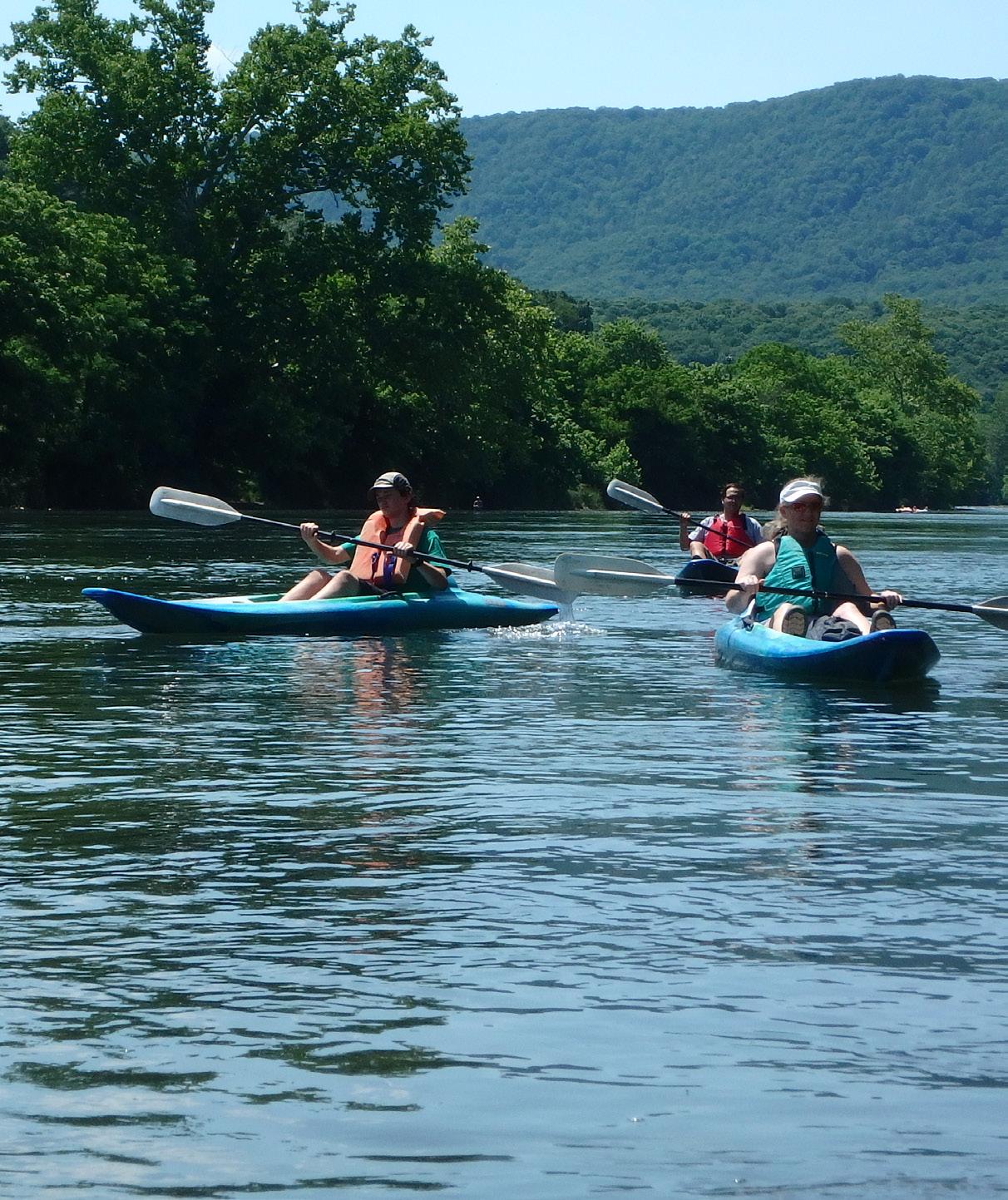
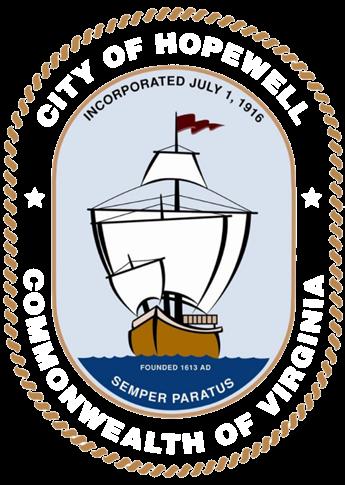
AT VIRGINIA'S 1,561-ACRE JAMES RIVER STATE PARK (PICTURED HERE AND BELOW), PADDLING OPPORTUNITIES ARE ABUNDANT.





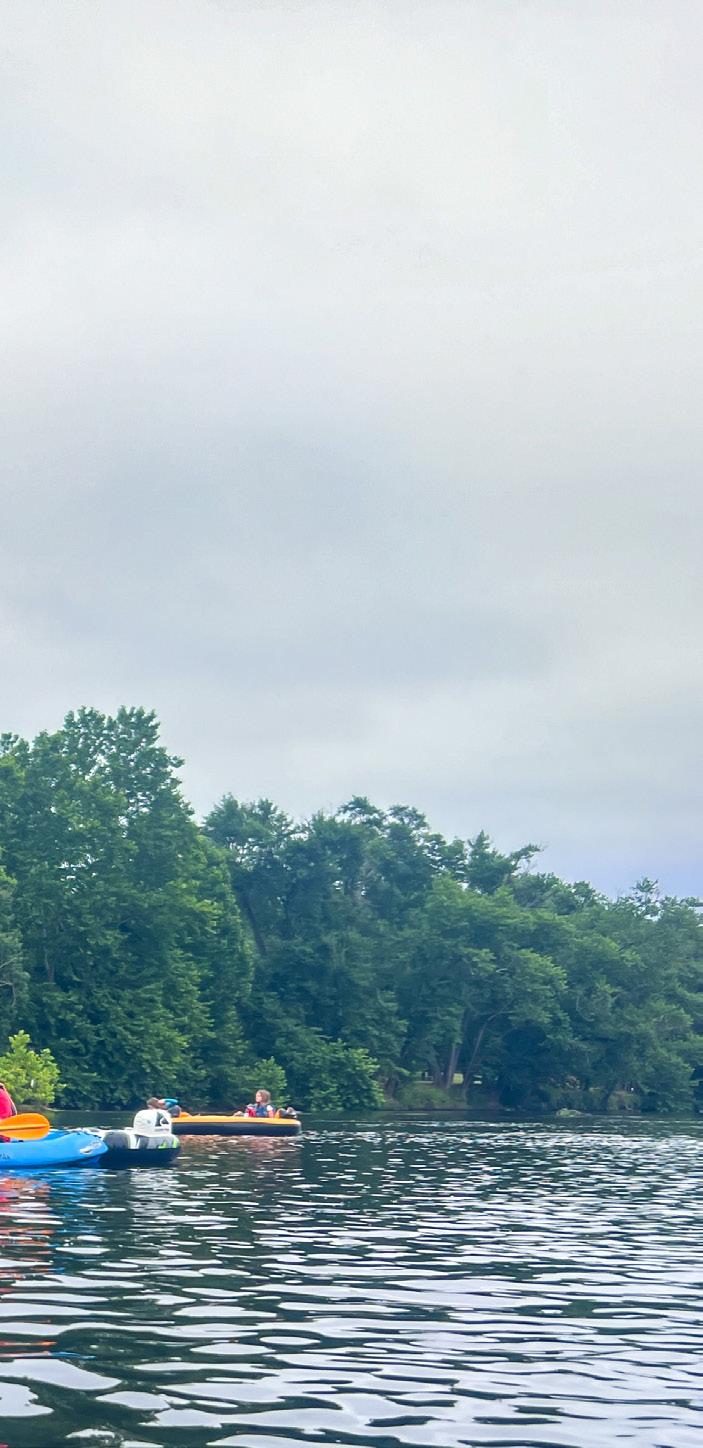
ferries paddlers along a gorgeous— and extremely rural—corridor lined with high, forested hillsides, broad swaths of ranch-like cow pastures, and a sprawling, English estatestyle horse farm. The section varies between 400 and 600 feet in width and flows along at a lazy river pace with occasional riffles here and there to keep things lively. Strings of midsized, wooded islands offer nifty, creek-like cut throughs and plenty of beaches or gravel bars for lounging. Mild depths and rocky, boulder-strewn bottoms make for exquisite snorkeling, especially just below the put-in.
Guide: The state park’s onsite outfitter Outdoor Adventures offers canoe and kayak rentals and shuttles throughout the warm months . dcr.virginia.gov/state-parks/ james-river-livery
Post-Float: At the state park, pitch a tent or park your RV in a beautiful riverside campground lined with mature weeping willows and sycamore or spring for a lux, Western-style cabin. The latter are
sprawling, full-family affairs. They’re equipped with full kitchens, working stone fireplaces, resort-style bathrooms, and wi-fi. A 20-minute drive delivers you to Bonfire Burgers & Bourbon in downtown Amherst for wood-fired Southern cuisine paired with an impressive fleet of craft cocktails and regional brews. Follow with beers and live music at nearby Loose Shoe Brewing Company.
Shenandoah Valley kayak enthusiasts praise the six-mile span from Simpsons Landing to Eastham Park as one of the region’s most treasured runs. Here you’ll pass through dense, undeveloped riparian woodlands in the scenic Page Valley, catching intermittent views of peaks in Shenandoah National Park to the east and Massanutten Mountain Range to the west. With very little bankside development and maxing out at a sparse 300 feet wide, the waterway feels incredibly wild and secluded.
by larksome runs of small riffles, the segment is a perfect destination for chillaxed family paddlers.
Guide: Front Royal Outdoors boasts a full range of rentals, guided trips and shuttle services in and around town. frontroyaloutdoors.com
Post-Float: The public boat ramp at Eastham Park sits on the southern outskirts of downtown Front Royal about a mile from the entrance to Skyline Drive and Shenandoah National Park. Find top-tier tent and RV sites in a fantastic riverside campground about eight miles south of the takeout in 1,600-acre Shenandoah River State Park. While the area lacks a true, destination-worthy hotel or inn, Airbnb options abound. Couples or small families will love the Wizard’s Chalet—a lavishly equipped, cabin-style A-frame tucked into the woods with a full kitchen, two bedrooms, multiple outdoor sitting areas and a hot tub. Celebrate the day’s adventure at Element with creative seasonal New American fare in a C h o o s e y o u r C h o o s e y o u r




The western North Carolina waterway is famed for its numerous high-octane whitewater sections and languorous, fam-friendly spans near the city of Asheville. But its oft overlooked headwaters are staggeringly beautiful—and 100 percent beginner appropriate. The give-or-take eight-mile passage from the Headwaters Outfitters’ put-in at the north and west fork confluence to the company’s campground off Hannah Ford Road is about as scenic as they come. What’s more, at just 100 feet wide, the river not only feels wild and secluded but is unusually calm at normal levels. Glide through nearmagical tree tunnels at an elevation of around 2,500 feet on the eastern border of Pisgah National Forest enjoying loads of light riffles and
small sandy islands that make for perfect picnic spots.
Guide: Headwaters Outfitters provides kayak rentals, multiday guided trips, and shuttle services throughout the upper French Broad Paddle Trail. frenchbroadoutfitters.com
Post-Float: Camp about five miles from town at the takeout or head a bit north for more urbane accommodations in Brevard. Book a modern, treehouse style cabin at Pilot Cove. Units are perched along a high hillside on the border of Pisgah National Forest and equipped with chic amenities like walk-in glass showers and large decks with soaring eastward views of town. Grab craft brews a couple hundred yards away at MTBcentric Pisgah Tavern, then head to Vescovo Neighborhood Eatery downtown. The chef-driven concept brings inspired, farm-to-table takes on Italian staples and great cocktails in a hip and intimate 50-seat room.

For paddlers keen to embark on a multi-day float, here’s a sampling of some of the Blue Ridge region’s wildest water trails.
Treating paddlers to portions of two Virginia Scenic Rivers, the Upper James River Water Trail combines stretches of the James and Maury Rivers, rolling by the pastoral Virginia countryside and tracing the edges of the George Washington National Forest. The blueway includes nearly 62 miles on the Upper James River, along with 12 miles on the Maury River just outside Lexington, dishing up experiences for a range of skill levels.
The longest free-flowing blackwater river in the United States, the tannin-tinted Edisto River is a birder’s paradise. Situated along the Atlantic Flyway, the
waterway provides vital habitat for threatened species like bald eagles, wood storks, and red-cockaded woodpeckers, along with more than 200 species of freshwater and saltwater fish. For paddlers, the Edisto River Canoe & Kayak Trail traverses a 62-mile stretch of the river’s main stream, connecting two state parks and weaving through birding hotspots like the National Audubon Society’s Francis Beidler Forest, home to the largest cypresstupelo swamp on the planet.
The Youghiogheny River is legendary for churning whitewater. But the rapid-riddled waterway is also ideal for more extended float trips, courtesy of the Youghiogheny River Water Trail. Extending nearly 75 miles from Confluence to McKeesport, the blueway is a wild tour of Pennsylvania’s Laurel Highlands, sluicing through state game lands and nature reserves, in the shadow of Pennsylvania’s highest peaks.



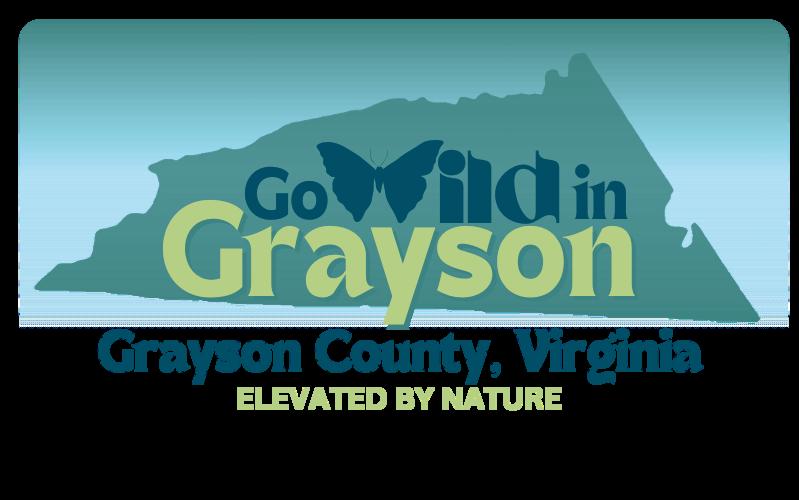

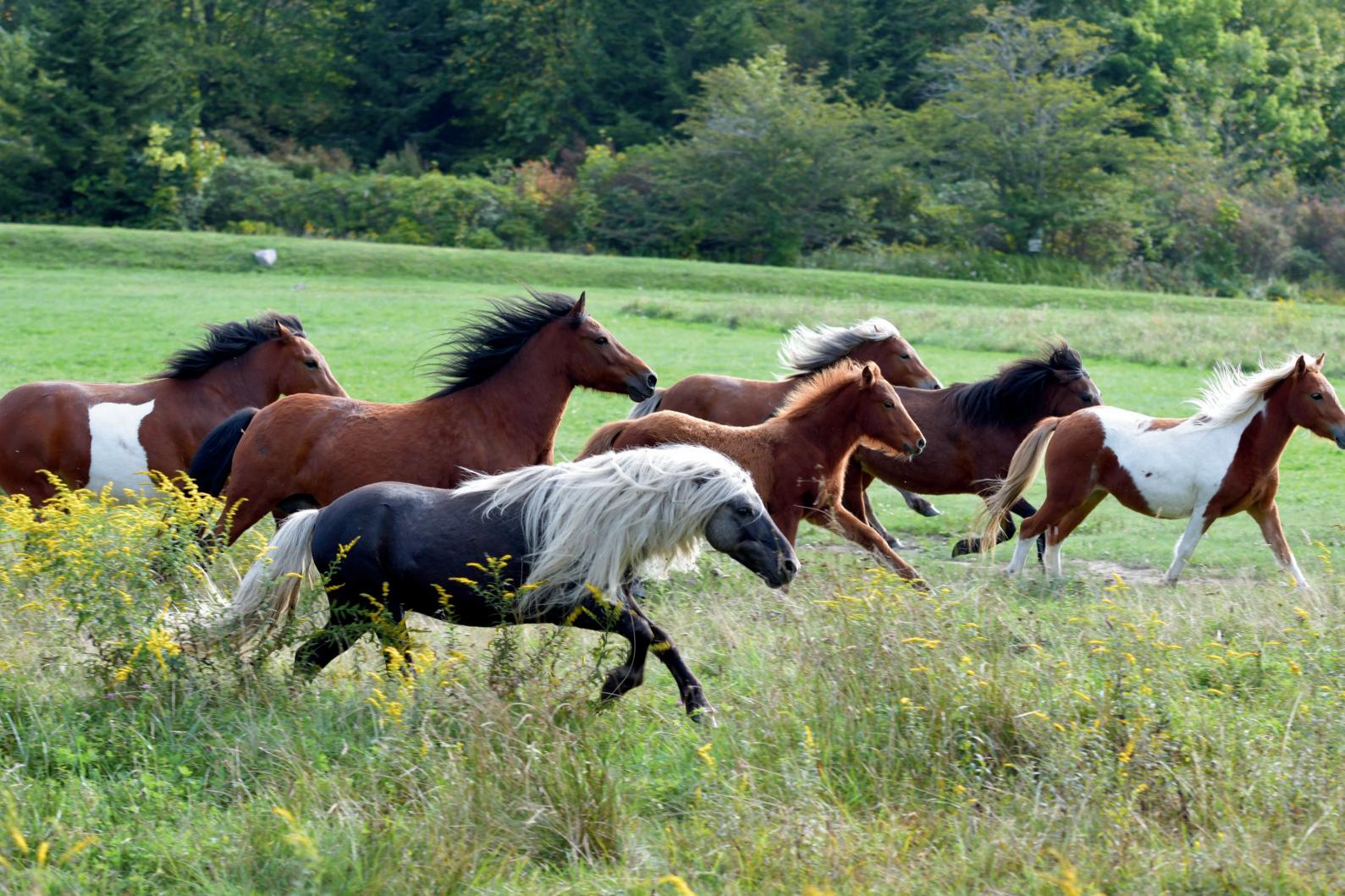





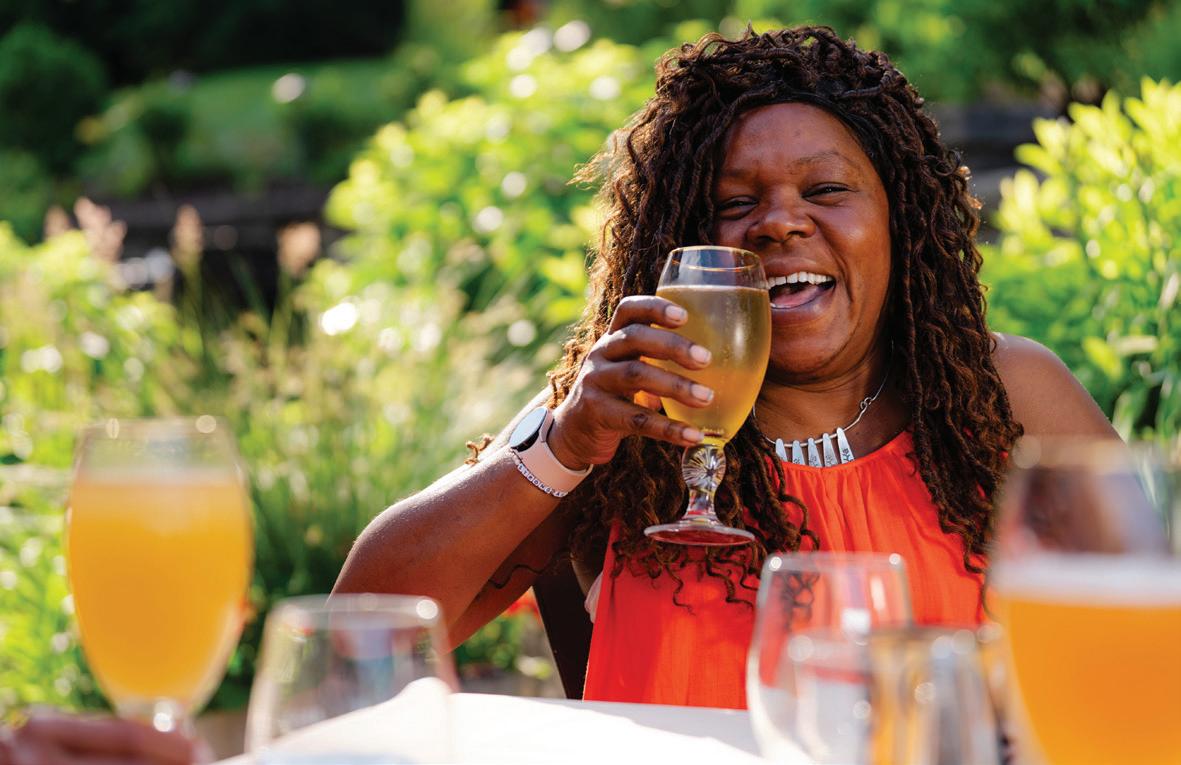


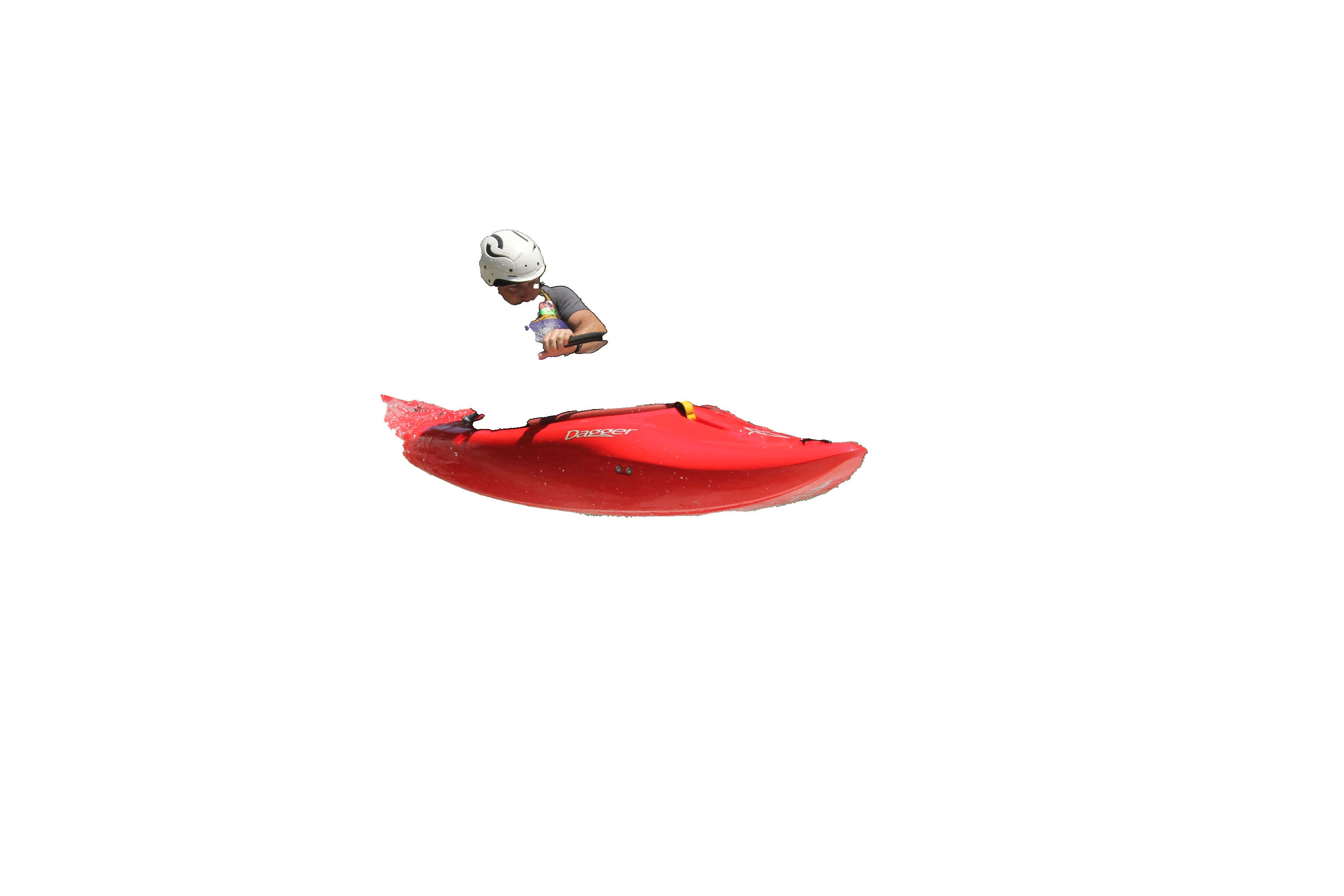

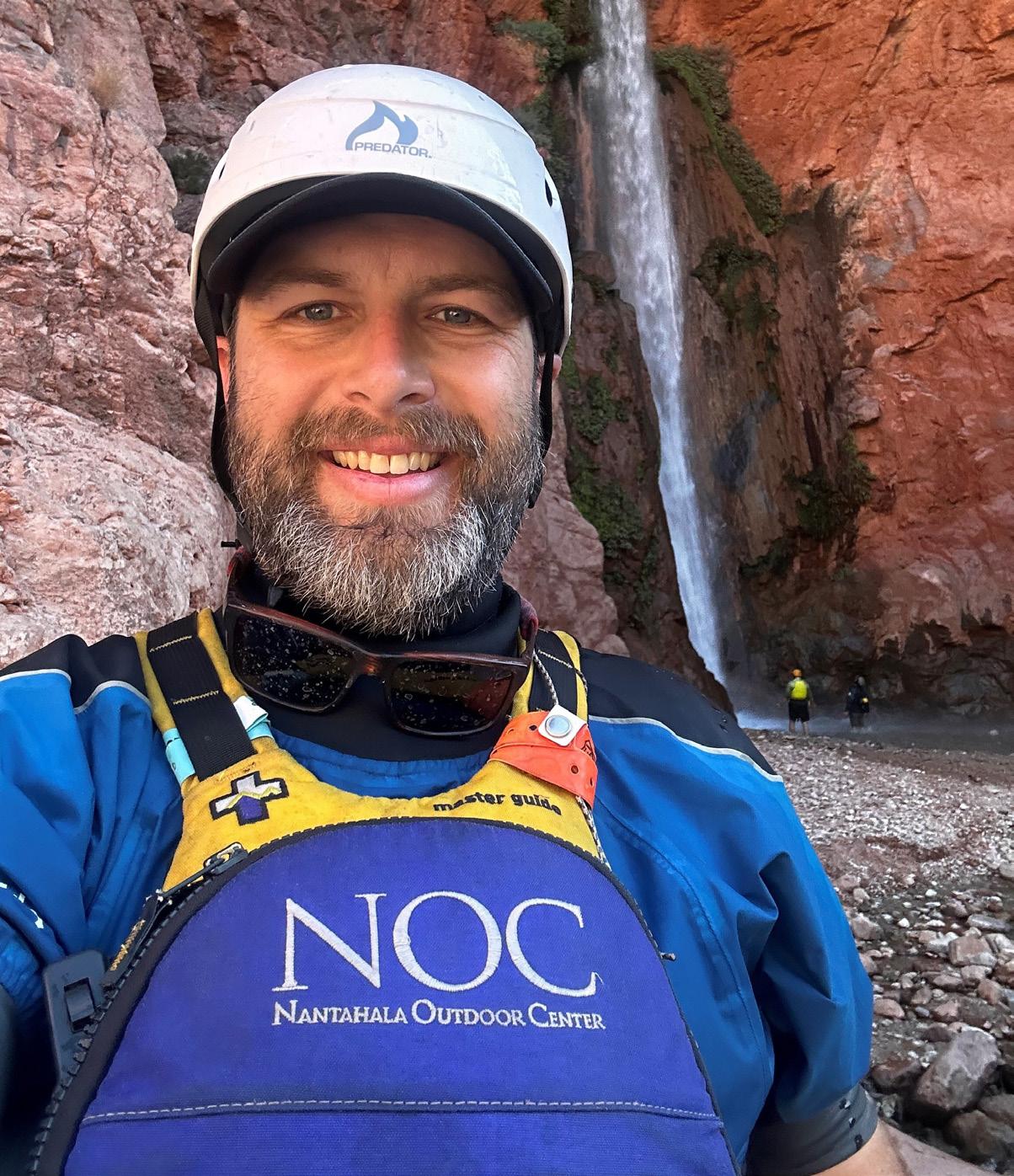
KAYAKING ENTHUSIASTS FROM around the nation and beyond revere the Southeast as a top spot for whitewater paddling. Hundreds of scenic rivers pour through wild lands in the high canyons, hills, and valleys of the Appalachian Mountains—and offer ample opportunities to paddle raging, rollercoaster-esque rapids. And with nearly as many dedicated outfitters spread across the region,
it’s easier than ever before to enjoy them. BRO asked three longtime regional pros about their favorite spots for backyard training, whiteknuckle thrills, and fun outings with aspiring learners.
Nantahala Outdoor Center director of outpost operations, Steven Foy, caught the whitewater bug as an undergraduate in Texas A&M
University’s outdoor recreation program.
“We took a four-day instructional fieldtrip to learn about [swift-water] paddling on North Carolina’s Nantahala River,” he says. The area’s natural beauty was stunning, “but I just fell in love the sport, like instantaneously. It turned into an addiction basically overnight.”
Foy came back to work as a seasonal guide for NOC after graduation. He spent some years gigging around the country at paddling and skiing hotspots, then settled down in Asheville around 2016.
In terms of whitewater, “this region is astounding,” says Foy. Devotees can access learning opportunities with skilled instructors on exciting but accessible waterways like the Nantahala, then build skills and advance to some of “the craziest stuff you’d ever consider doing.”
Ledges Whitewater Park on the French Broad River is Foy’s preferred spot for a quick pre- or post-workday outing. The public whitewater park is one of seven in Buncombe County and sits just 10
miles north of downtown Asheville.
“It’s a great little set of [Class II] rapids with some super fun playspots,” says Foy. He’ll catch a killer workout doing upstream attainments then come back and surf the wave features. “It’s a perfect spot to go out, enjoy yourself, and keep your skills in shape.”
Foy calls the upper span of Pigeon River just downstream of the Waterville Power Station in Hartford, Tenn., a gem for up-and-coming whitewater hounds. NOC offers guided rafting trips for kids as young as 8 on the section and he says “it’s a great introduction for kayakers looking to take on their first true Class IIIs.”
The rapids are splashy and approachable, and the shuttle from Hartford is quick, making it easy to catch multiple runs. “And you can boat scout,” says Foy. All of which creates a stellar playground to build skills and safely up your game.
Emily Jackson may as well have been born with a paddle in-hand. As the daughter of legendary Olympic
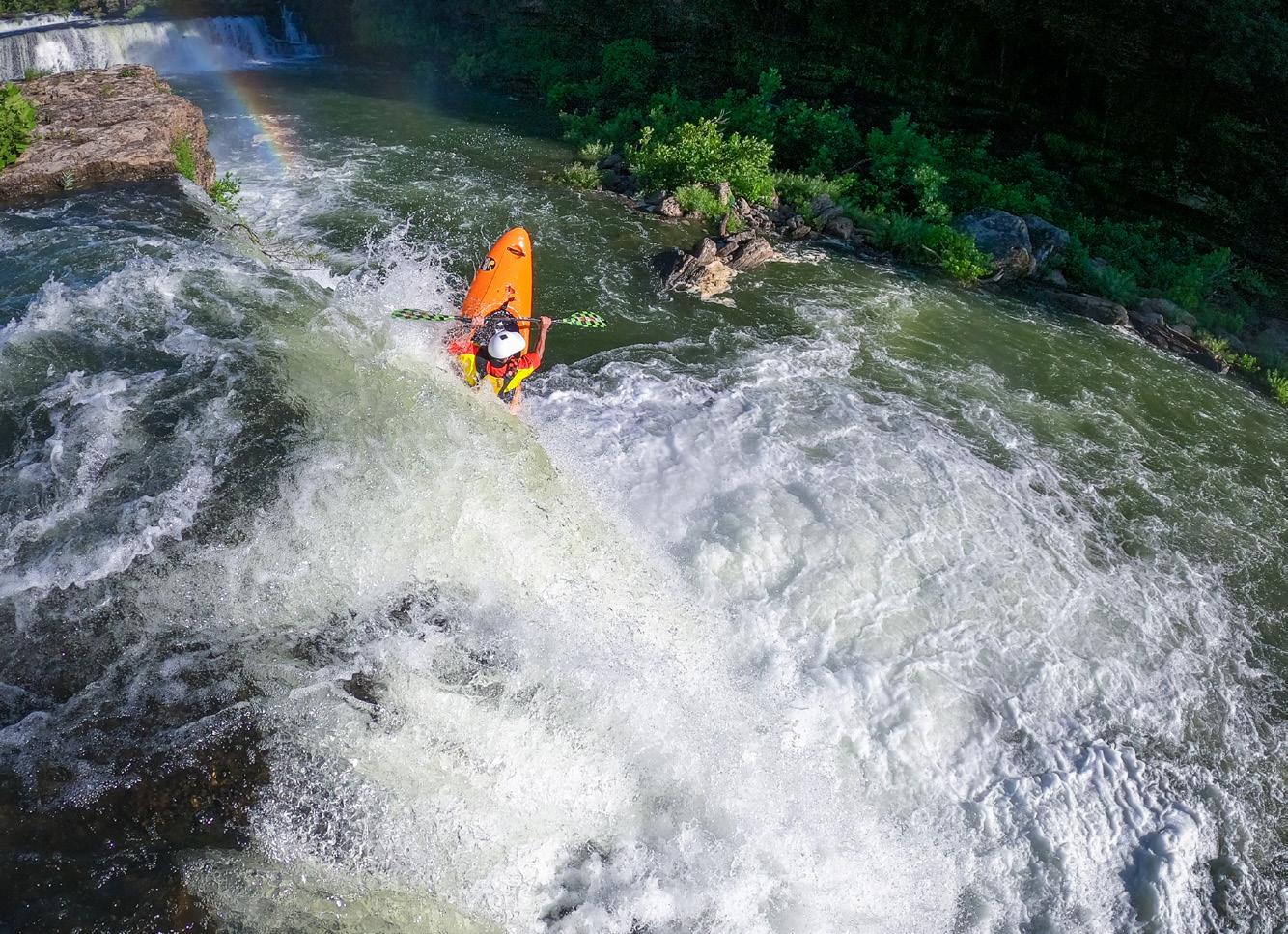
whitewater champ, Eric Jackson, and sister of Red Bull-sponsored superstar, Dane, her life centered around the sport from the get-go.
“We lived in an RV and followed my dad around to competitions all over the world,” says Emily, now 35. The Jacksons got their kids on the water super early, “so we had a pretty privileged upbringing in terms of instruction and being able to paddle in awesome places.”
And Emily excelled. She made the U.S. junior team at 13, won her first junior world championship at 17—and went on to claim multiple International Canoe Federation World Cup championships and podium spots. She now calls Rock Island, Tenn., home and works as a marketing director for her dad’s company, Jackson Kayaks, when she’s not out competing.
Rock Island State Park’s famed Caney Fork Gorge whitewater haven brought the Jackson family to Tennessee in the early 2000s and it’s within a quick drive of Emily’s home. The mile-ish-long, pro-grade section is split into two runs below Great Falls Dam and the Tennessee Valley Authority Powerhouse. It’s chock full of ripping Class IVs and Vs spread across challenging rapids and a sequence of stunningly gorgeous waterfalls.
The park hosted the 2006 U.S. Kayaking Freestyle World Championships and Emily calls the gorge a “playboater’s paradise.” What’s more, after a rain event, as many as two-dozen falls pour from
its sheer limestone cliffs “and you’ll look around and feel like you’re somewhere like Hawaii or Costa Rica—it’s that beautiful.”
For paddlers looking to level up their Class III skills or tackle their first serious Class IVs, Tennessee’s Ocoee River is hard to beat. The waterway flows through the Cherokee National Forest about an hour northeast of Chattanooga and is regulated by a trio of dams above its namesake lake.
The upper section is home to the relentless—and perma-grin inducing—1996 Olympic slalom course at the Ocoee Whitewater Center. “There are a ton of great features in there, so it’s a great spot to park and play all day long,” says Emily.
The Middle Ocoee, meanwhile, begins below the TVA #3 dam and brings a five-mile stretch of about 20 Class III and Class III-plus rapids. Emily loves how “you can race the entire run in less than 30 minutes, or pick a spot to hang.”
Anne Sontheimer discovered the joy of paddling as a teenager attending an outdoor-focused private school in Gettysburg, Pa. Programming centered around canoeing, but a family member heard about her interest and invited her to try whitewater kayaking at the NOC’s Bryson City outpost.
Sontheimer took a lesson with former Olympian Wayne Dickert—and got hooked. “I loved the combination of natural beauty, excitement,
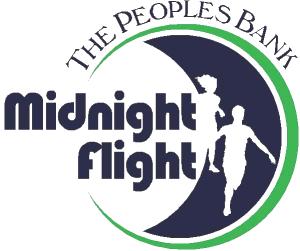
Friday, August 15, 2025 Anderson Area YMCA
1 MILE AT 8:15 PM 5K AT 9:00 PM
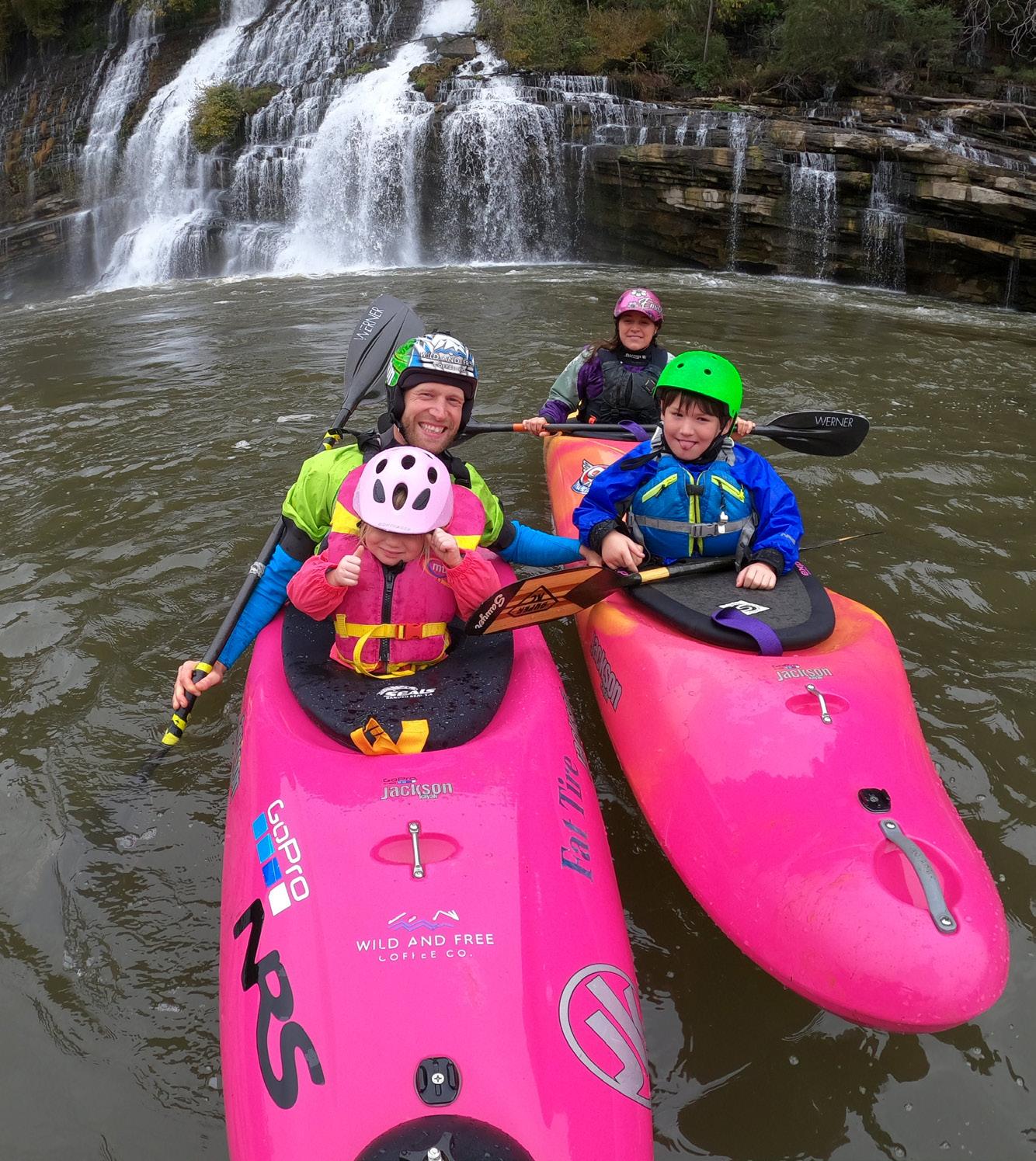
adrenaline.” she says. Experiencing the area’s tightknit community of whitewater enthusiasts iced the cake. She took a job at an onsite restaurant in 1994, trained to become a guide, and graduated to leading trips on the Chattooga River within a few years.
Three decades later, Sontheimer has led kayak and rafting adventures at countless international destinations and helped train hundreds of paddlers and certified instructors at the NOC.
For a fun full day on the water with kids or newer paddlers, Sontheimer will jump on the Nantahala River near Bryson City, starting at the National Park Service Launch Site just below the Duke Energy Hydro Station and floating to the commercial takeout below the center.
The swift-moving eight-miler churns through gorgeously isolated peaks in the Nantahala National Forest and brings mildly challenging
but manageable Class IIs and II-pluses. The section has “helped introduce more high-level paddlers to whitewater than probably anywhere in the country,” says Sontheimer. “And it’s an absolute blast for everyone.”
Sontheimer calls northeast Georgia’s Chattooga River her favorite for whitewater. And that’s quite a distinction coming from someone who’s run virtually every bucket list spot in the region.
The Chattooga “is free-flowing and super remote,” she says. It pours for about 50 miles through the Chattahoochee-Oconee National Forest near the border of South Carolina and was the first Southeastern waterway to be designated as a national Wild & Scenic River. And it has stretches for a range of skill levels. Section III brings 13 miles loaded with intermediate-friendly Class IIs and IIIs, while Section IV offers 8.5 miles of advanced-level Class IVs and Vs.



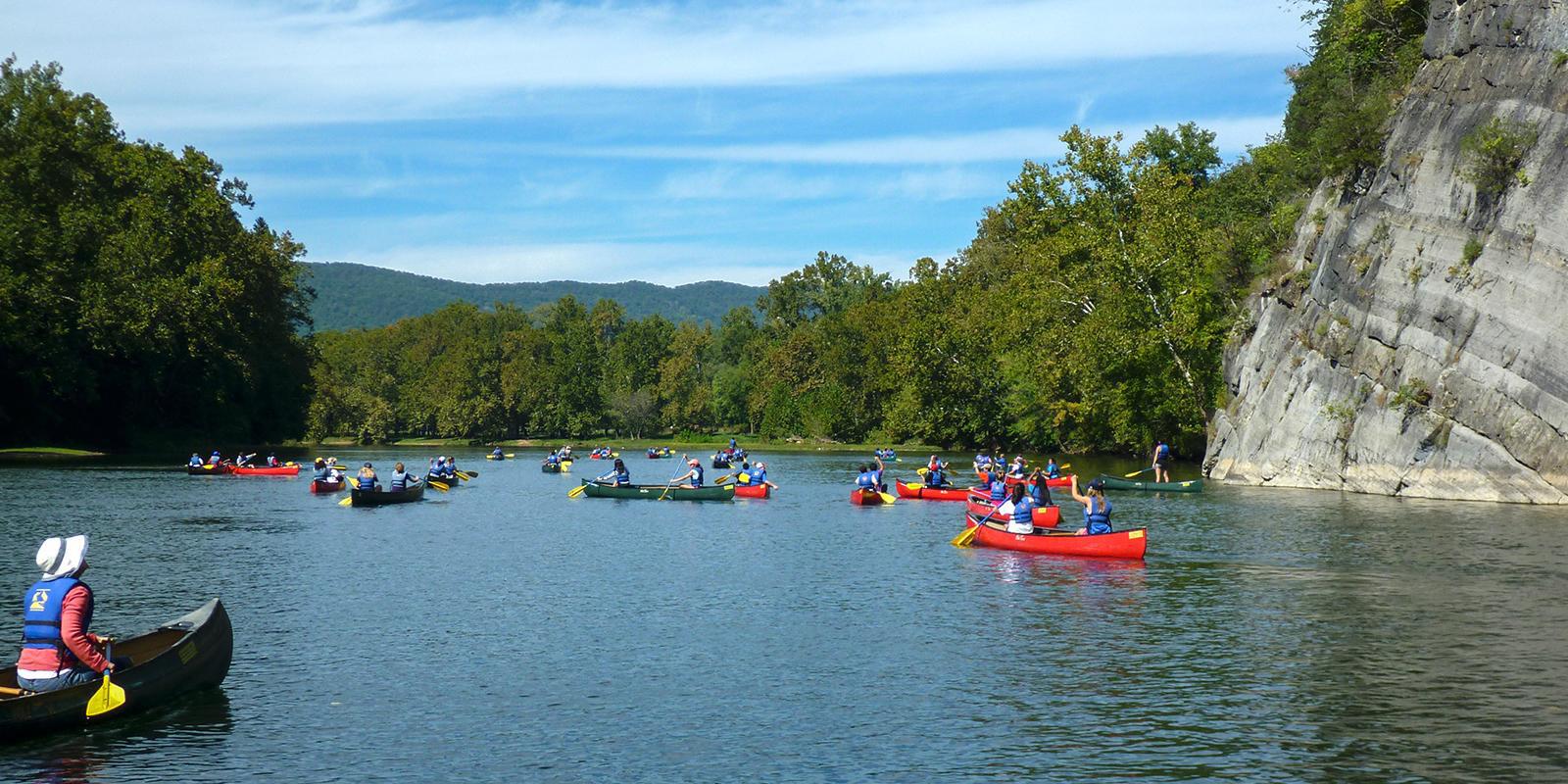

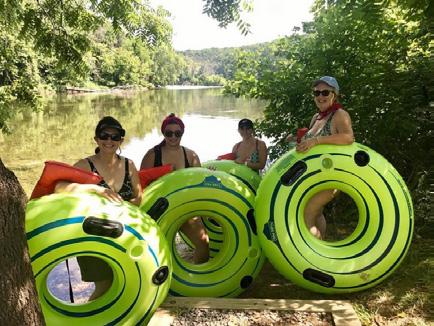
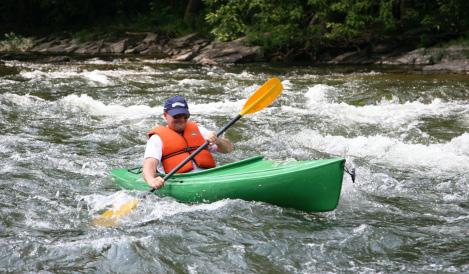

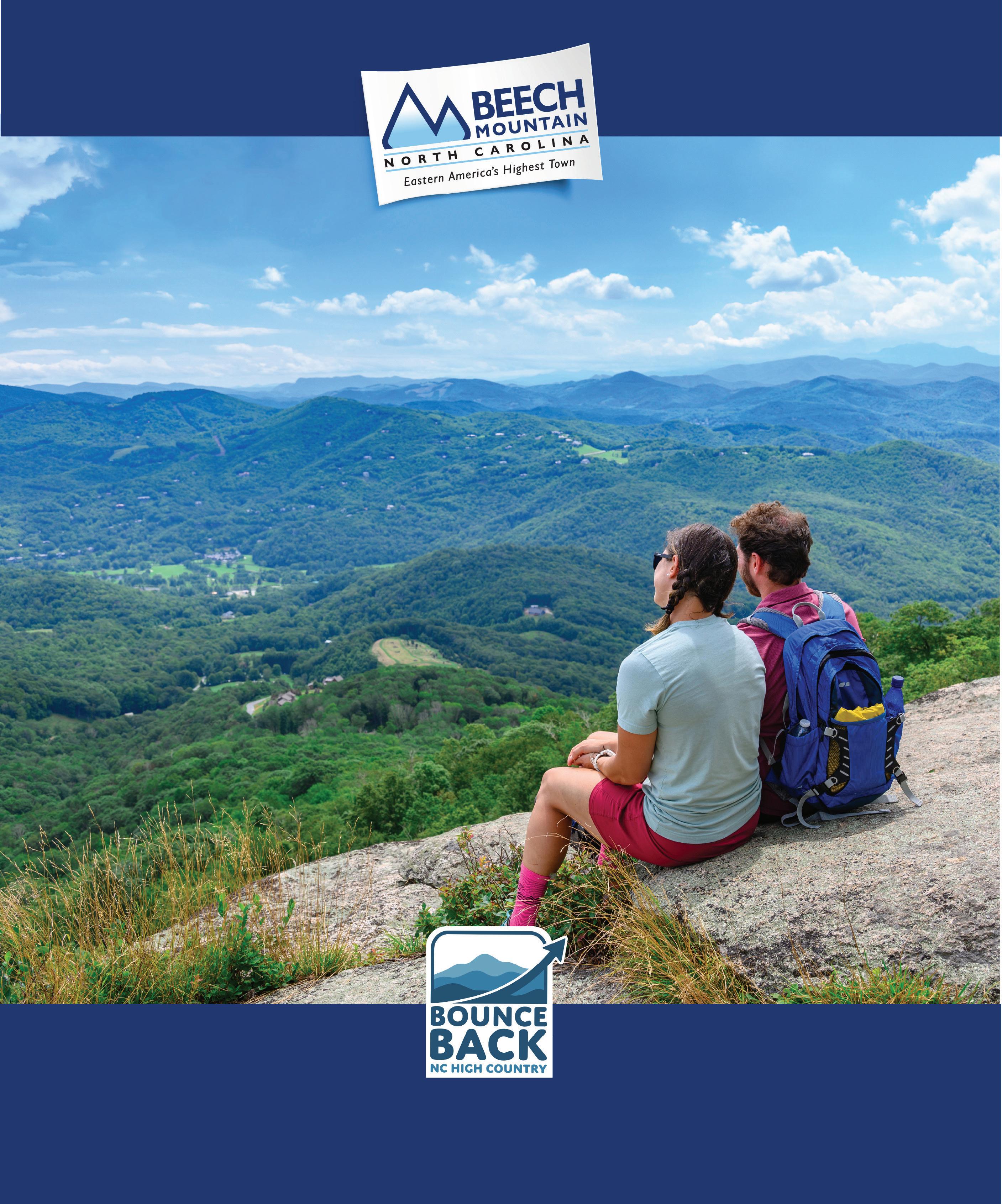

BY LAUREN STEPP
5 Organizations Doing Good on Regional Rivers
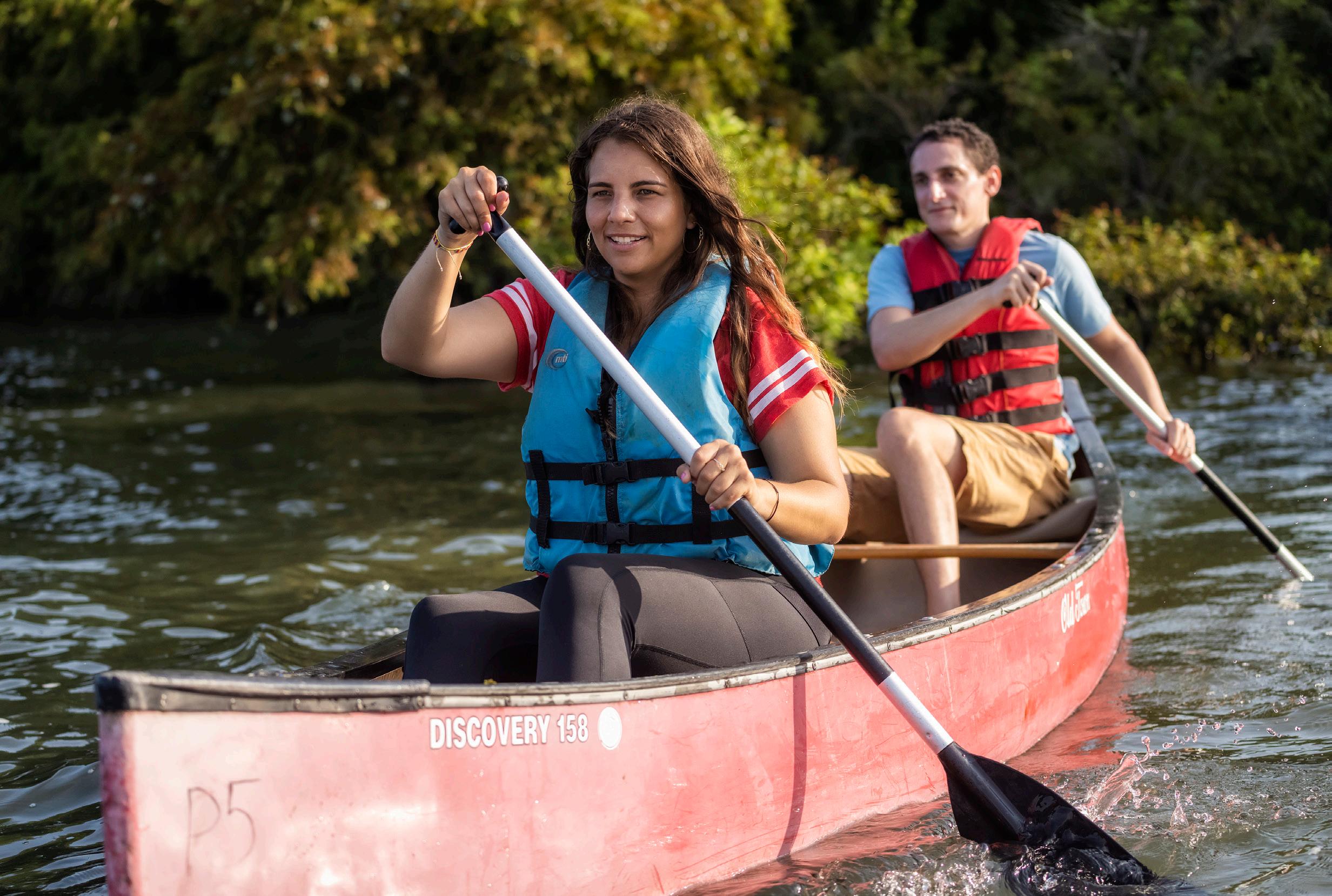

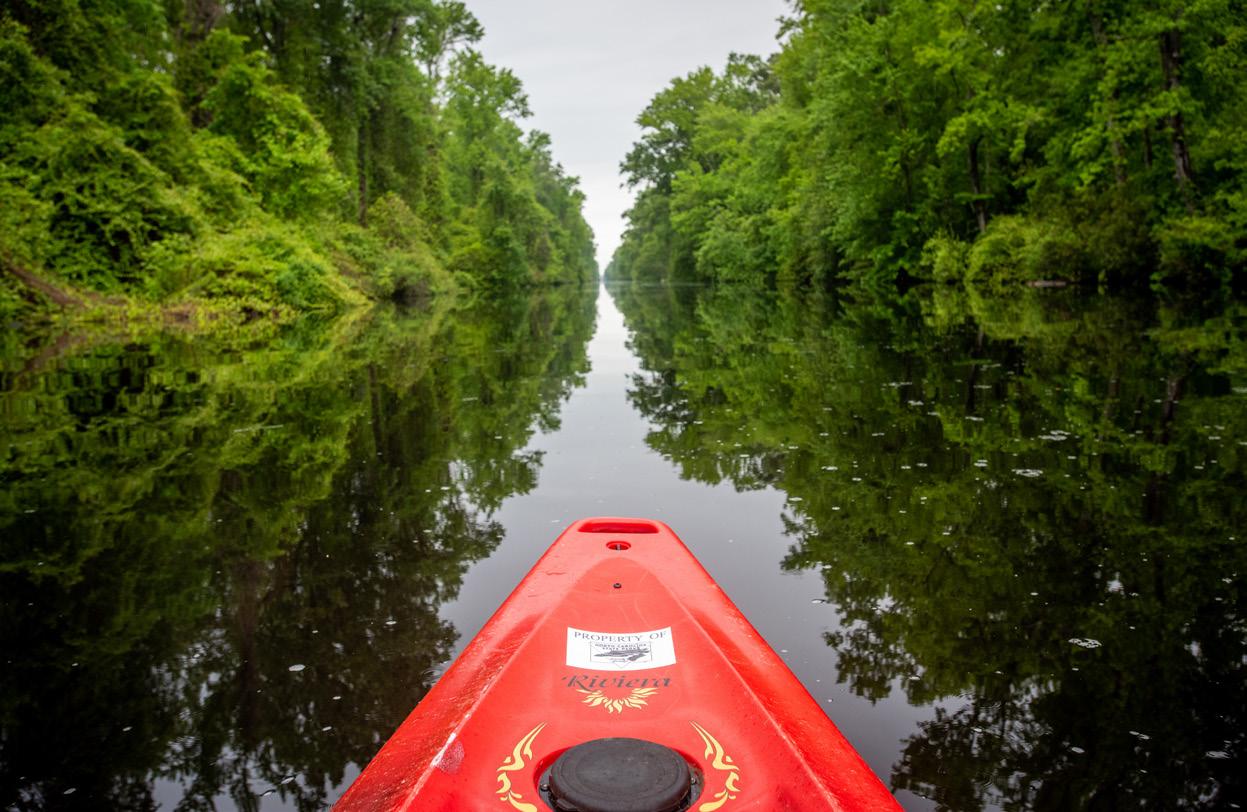
IF YOU THINK PADDLING IS JUST about relaxing floats or chasing whitewater thrills, think again. Across the Southeast, charitable outfits are hitting the water for a cause.
From environmental nonprofits installing green infrastructure to river cleanup crews hauling literal tons of trash, these groups are combining paddling with a greater purpose.
Jack Lyle’s River Kids: Getting Nashville’s Youth Out on the Water For many kids living in Nashville,
Tenn., wild places exist only in books or on screens. Jack Lyle’s River Kids is changing that one paddle stroke at a time.
Launched in 2019 by the Tennessee Scenic Rivers Association (TSRA) in partnership with the Sierra Club and Preston Taylor Ministries, this initiative introduces inner-city youth to the wonders of nature through paddle sports.
“We think every kid deserves to spend time in the great outdoors— to discover a turtle or a heron, to



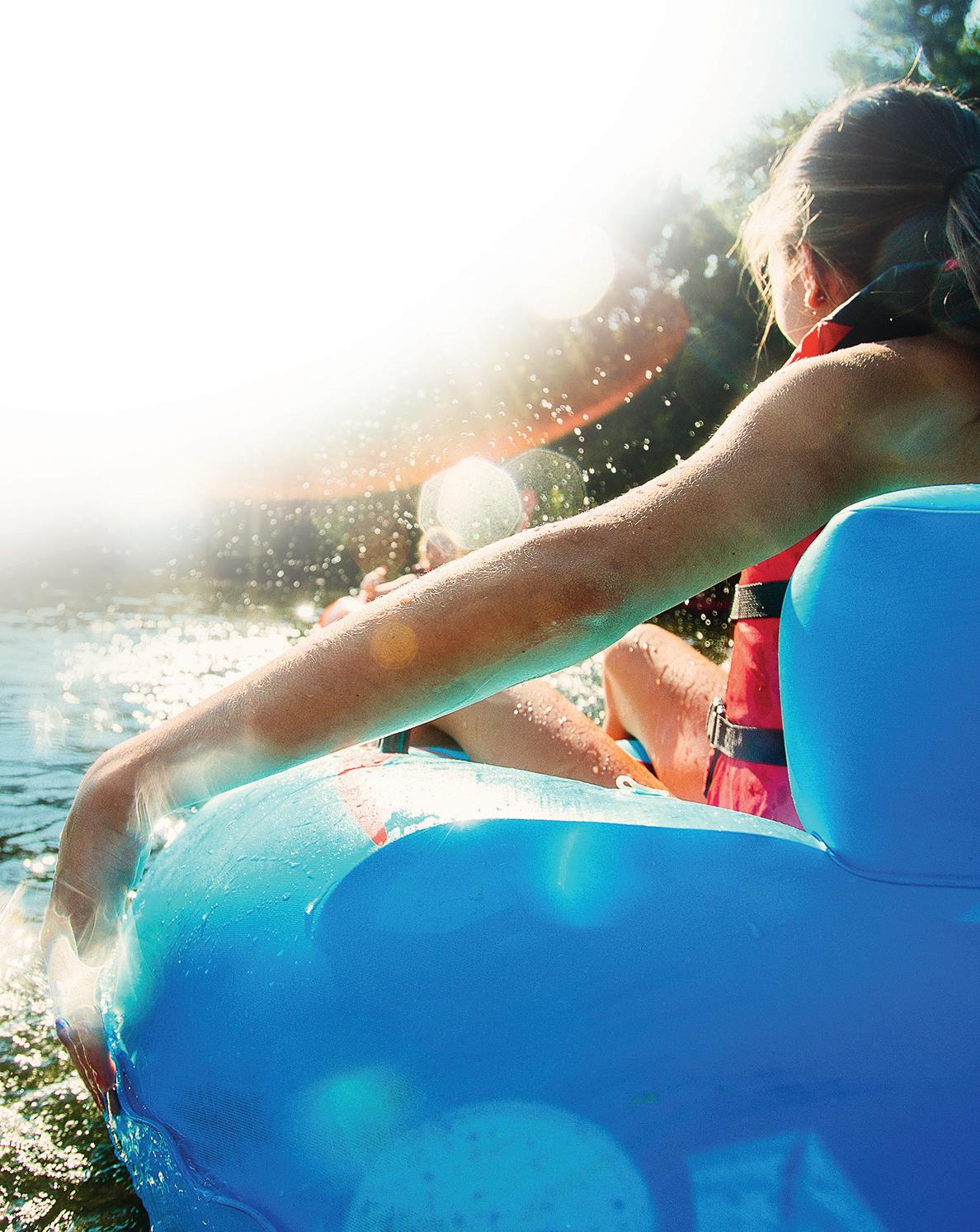
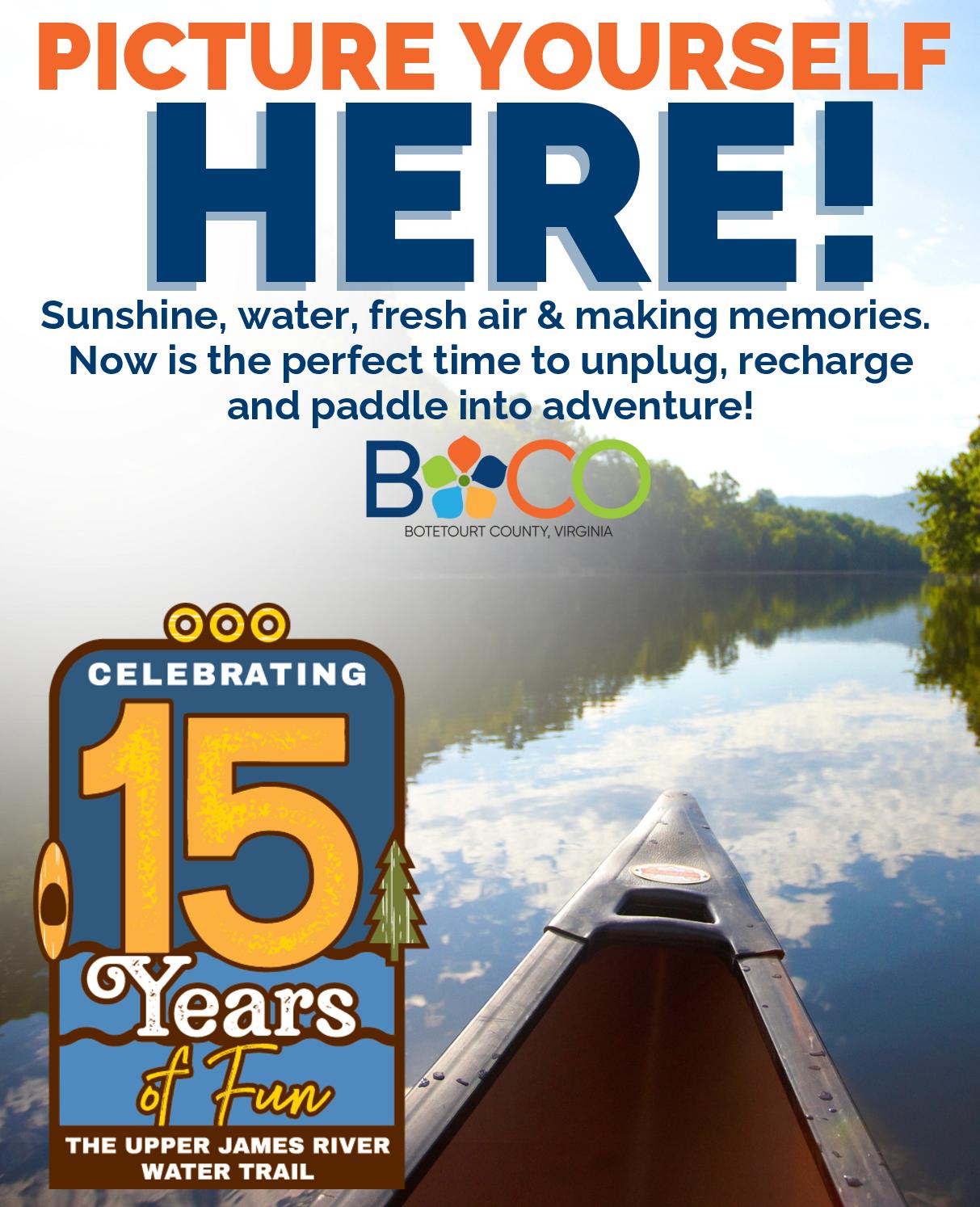
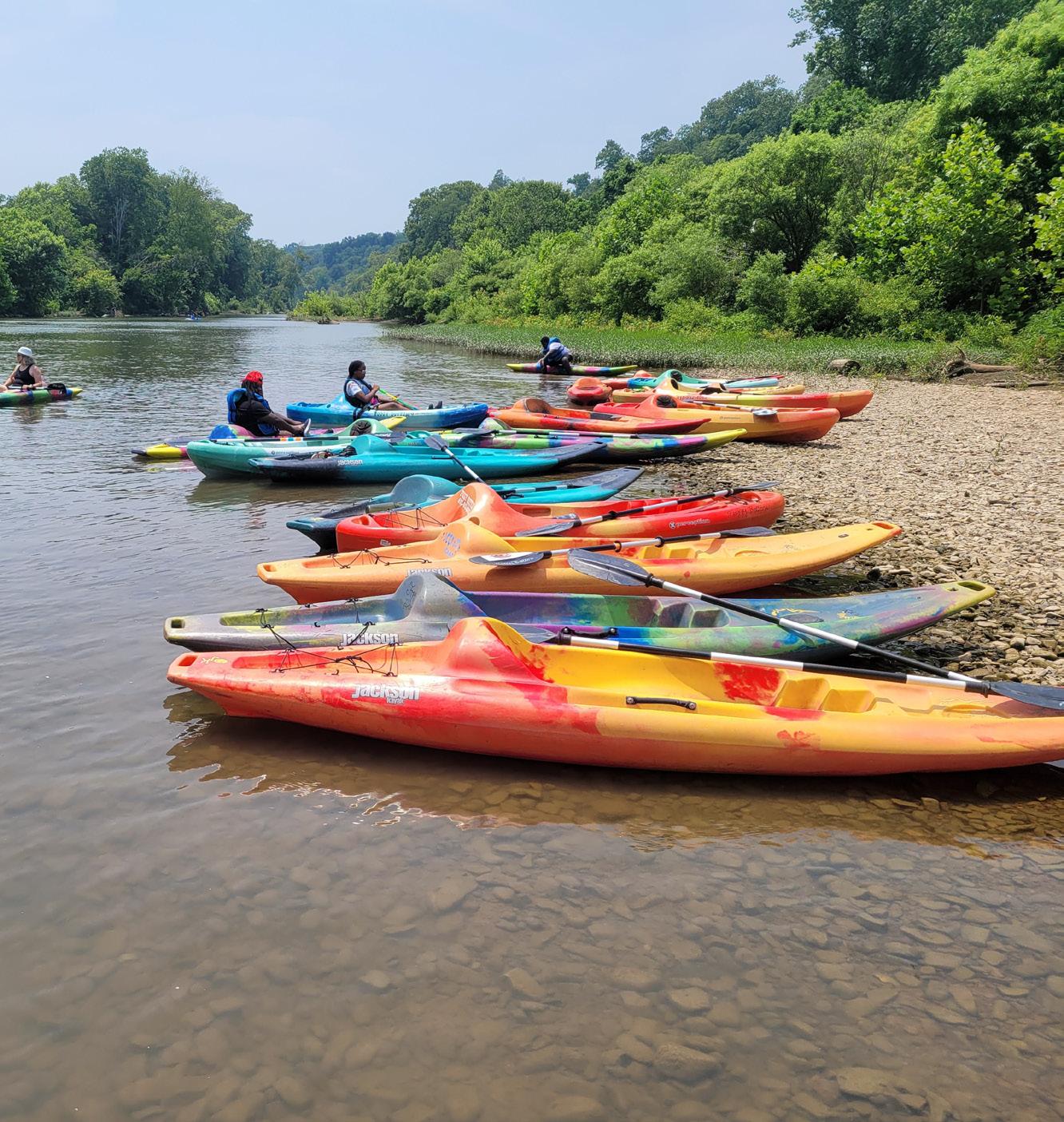
bodysurf a riffle, to splash with friends and laugh,” says program coordinator Mary Buckner. “Sunshine, fresh air, and healthy exercise recharge our inner strength and nourish our spirit.”
Each year, TSRA hosts three River Kids events within a one-hour drive from Nashville. The first outing takes kids to Couchville Lake, where they learn boat control, safety, and self-rescue. Next, they head to the scenic Harpeth River, where they practice river-running skills, such as eddy turns, peel-outs, and ferries. The final adventure may involve an advanced river trip or a stand-up paddleboarding clinic on Percy Priest Lake, depending on water levels.
According to Buckner, most participants are pretty nervous around water. But “facing the challenge of learning a new skill builds confidence and self-esteem,” she explains. Plus, it’s loads of fun.
For more information, see paddletsra.org.

RiverLink: Defending an Ancient Waterway in Asheville, North Carolina
At 325 million years old, the French Broad River has survived volcanic upheaval, ice ages, and the rise and fall of entire civilizations. But today, one of its biggest threats is far more mundane: sediment.
“Sediment is the number one pollutant in the French Broad River,” says Renee Fortner, director of programs at RiverLink, an environmental nonprofit in Asheville, N.C. “Excessive sediment smothers breeding habitats for fish and other aquatic life, and it binds to pollutants like bacteria and heavy metals, transporting them throughout the watershed.”
Rapid urbanization is a major culprit here. As rainwater rushes over impervious surfaces like rooftops and roads, it picks up debris and dumps it directly into the river. Climate change only exacerbates the issue, bringing
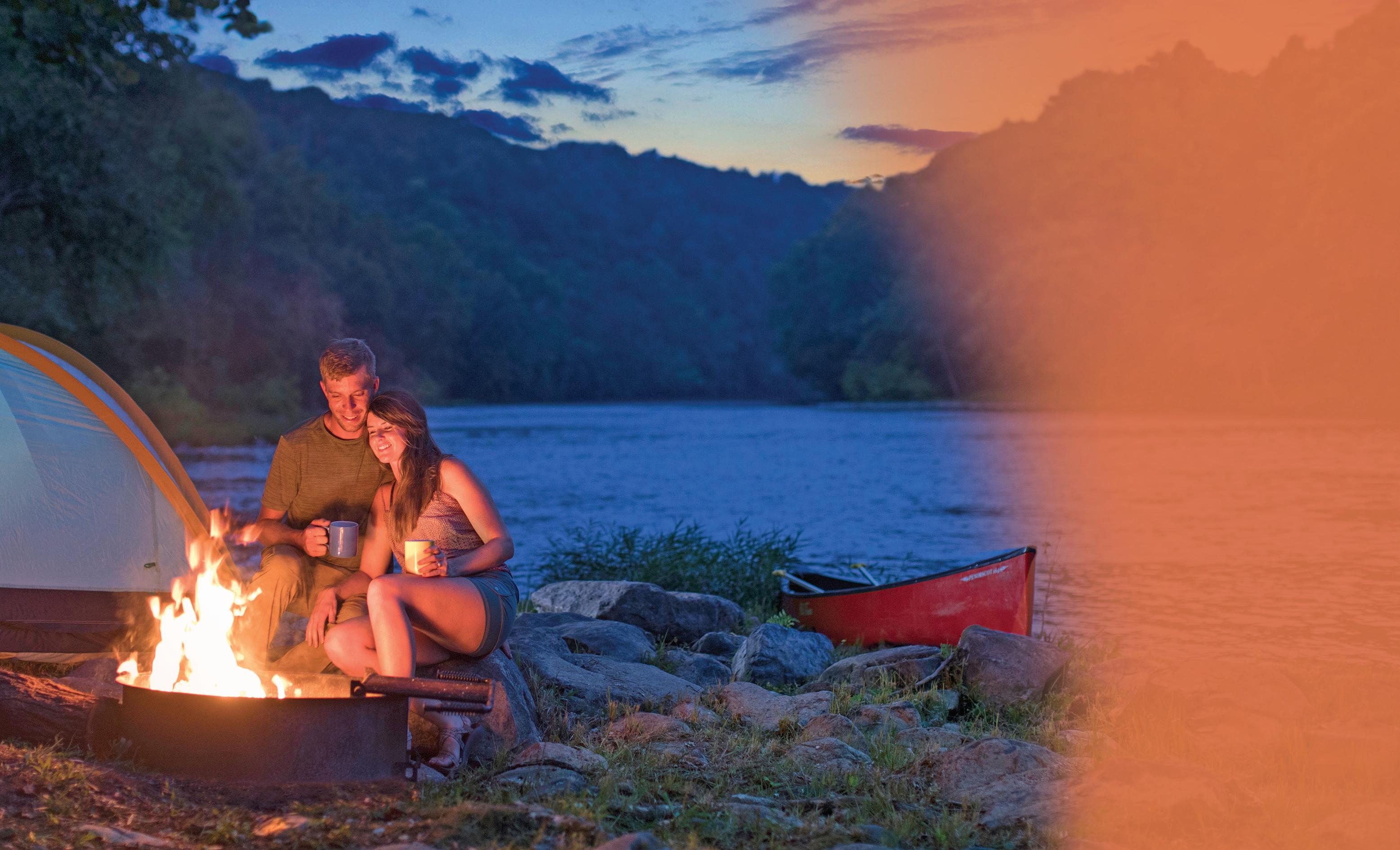

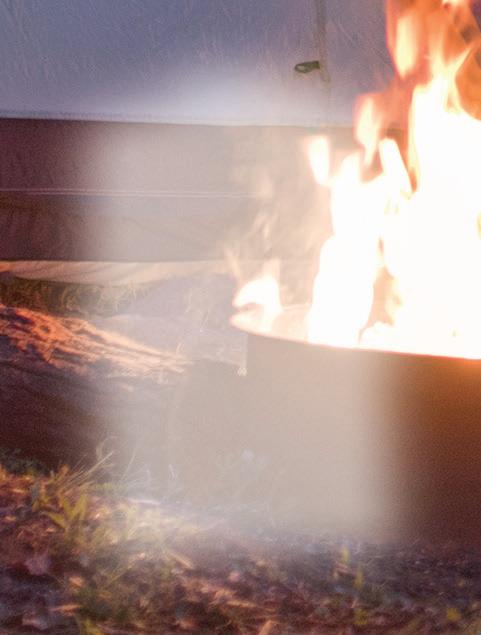

James is more than a river flowing through the Blue Ridge Mountains. It flows through time, touching hearts, changing lives, sharing experiences with all who visit… like the kind of adventure you tell your friends about on Monday.









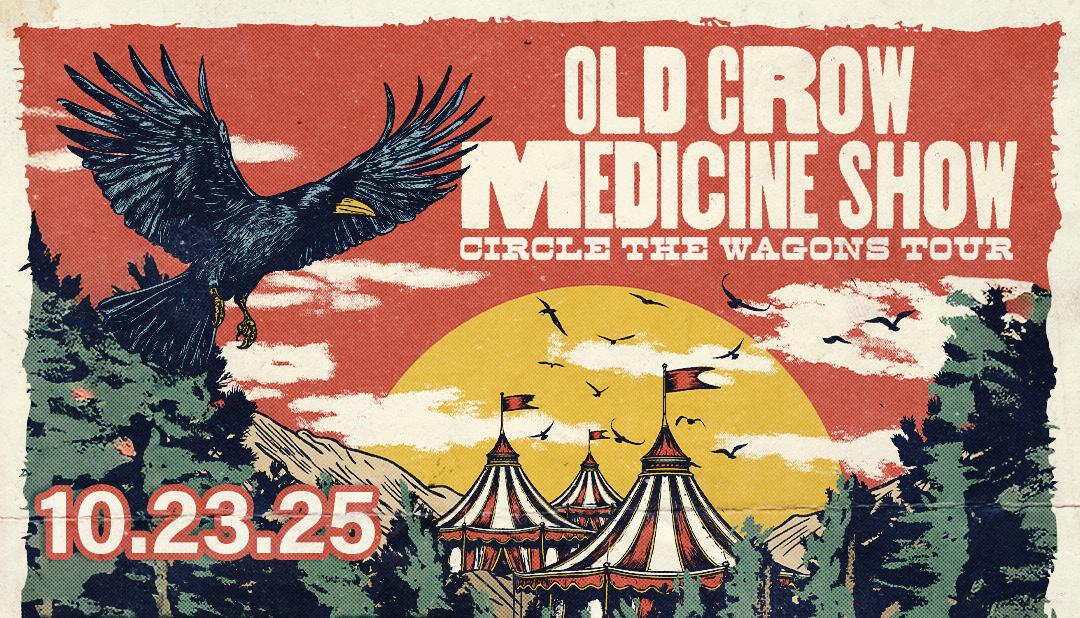


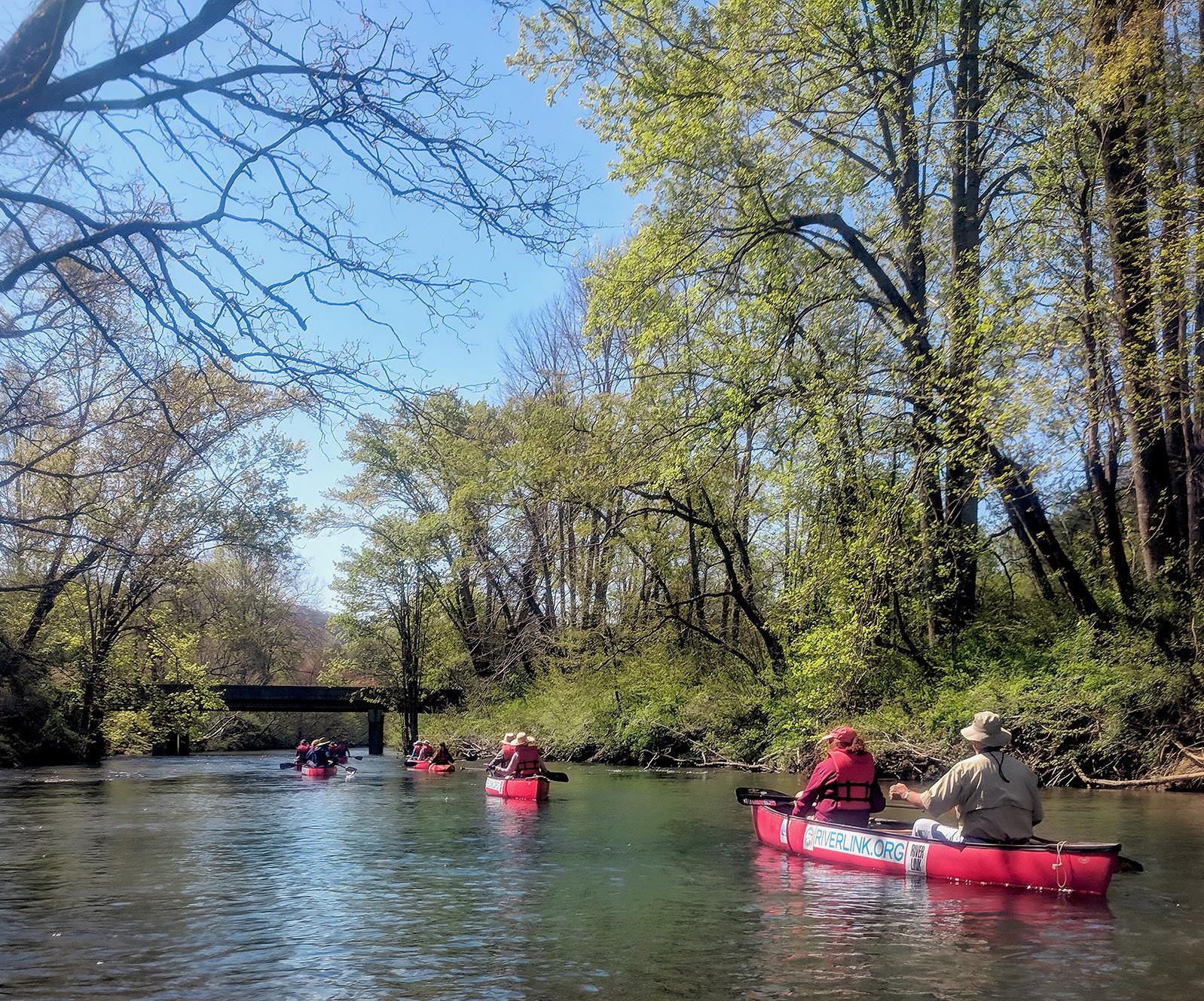
more intense storms that contribute to streambank erosion.
In response, RiverLink collaborates with municipalities, schools, and landowners to install green infrastructure, such as rain gardens, bioswales, and permeable pavement. The organization also spearheads fullscale stream restoration projects aimed at stabilizing riverbanks and enhancing water quality.
“Since February of 2025, RiverLink and our volunteers have restored two miles of streambanks that were damaged and eroded from Helene,” says Fortner, adding
that more than 130 locals have attended hands-on workshops to learn how to repair streambanks themselves. “There’s a great interest in protecting water quality while also building resilience to future storms.”
Friends of the Reedy River: Cleaning up Greenville’s Watershed
In the late 1700s, Greenville, S.C., sprang to life on the banks of the Reedy River. The waterway quickly became the city's lifeblood, fueling a booming textile industry. But as the city has grown, so has the water pollution.
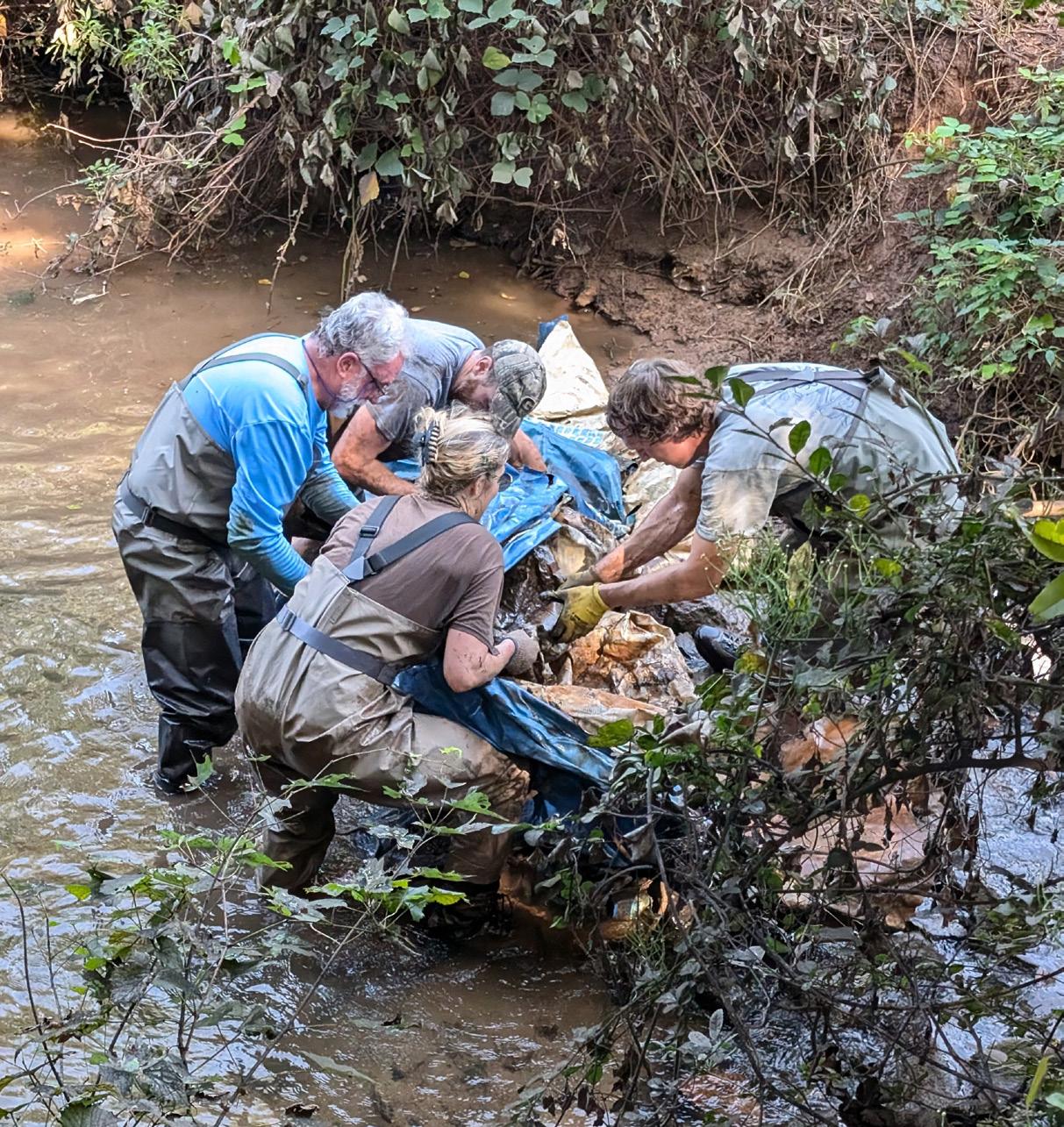
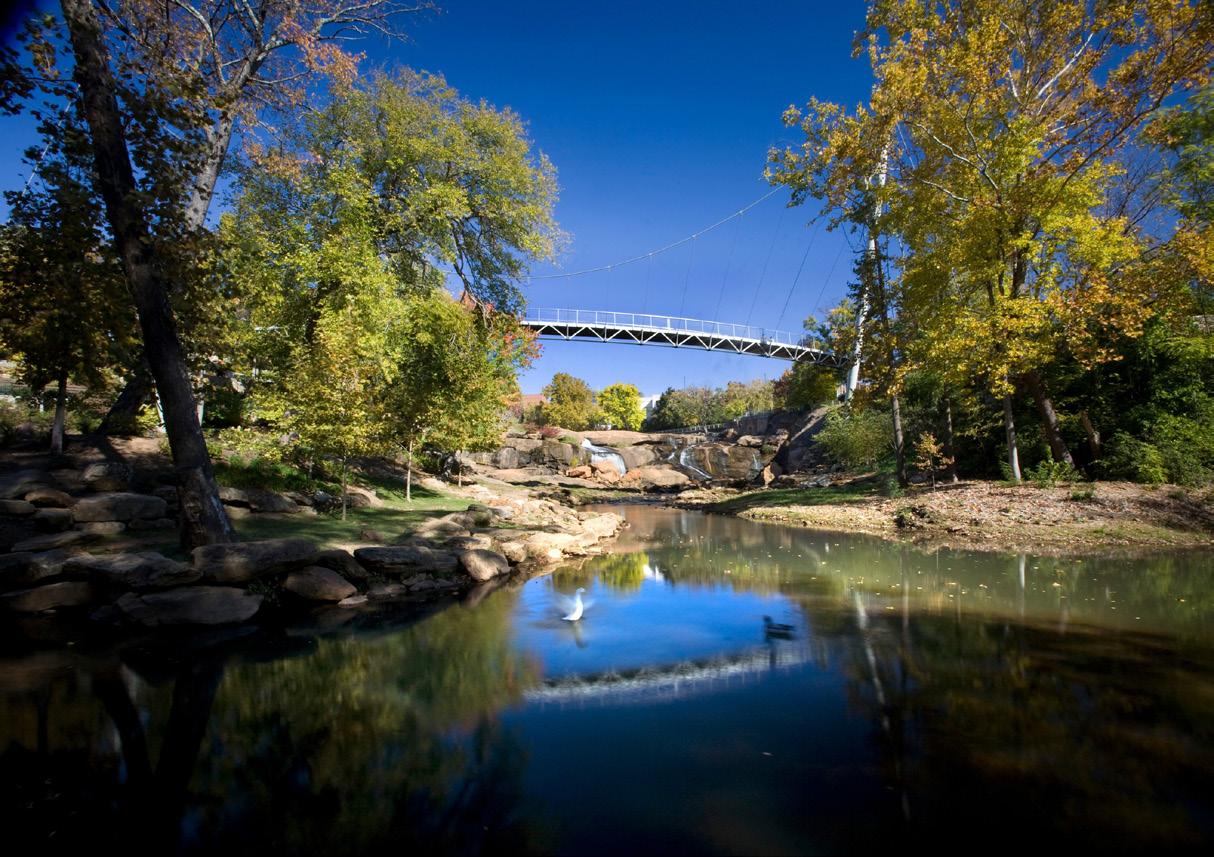
“The Reedy River is significantly challenged by the impacts of current and historical urbanization in our watershed,” says Josie Newton, a watershed scientist project coordinator with Friends of the Reedy River (FoRR).
FoRR is tackling these challenges head-on by hosting two river cleanups each year—one in the spring and one in the fall.
“Volunteers help us remove large quantities of litter, ranging from household trash—like plastic and glass bottles, styrofoam cups, clothing items, old shoes, and other things that could blow out
of residential trash cans or be dumped on roadsides—to tires, some of which date back to the 1950s or earlier,” says Newton.
During a river cleanup earlier this year, Greenville residents removed 8,100 pounds of trash in less than three hours.

“Our volunteers truly make all the difference,” says Newton. “We couldn’t do the work we do without our hardworking volunteers who consistently show up, time and time again, to improve our river.”
For more information, see friendsofthereedyriver.org.

Nolichucky Outdoor Learning Institute: Teaching Water Safety in Erwin, Tennessee
In the world of whitewater, the difference between a close call and a tragedy often comes down to training. That’s where the Nolichucky Outdoor Learning Institute (NOLI) steps in.
Founded in 2018 by Army veteran and seasoned paddler Scott Fisher, NOLI is a comprehensive outdoor school dedicated to teaching folks how to safely enjoy the great outdoors. In addition to classes on everything from backcountry navigation to wilderness medicine, the institute offers swiftwater and flatwater rescue courses that prepare paddlers to keep their cool when the current takes a turn.
“Topics include accident prevention, non-technical
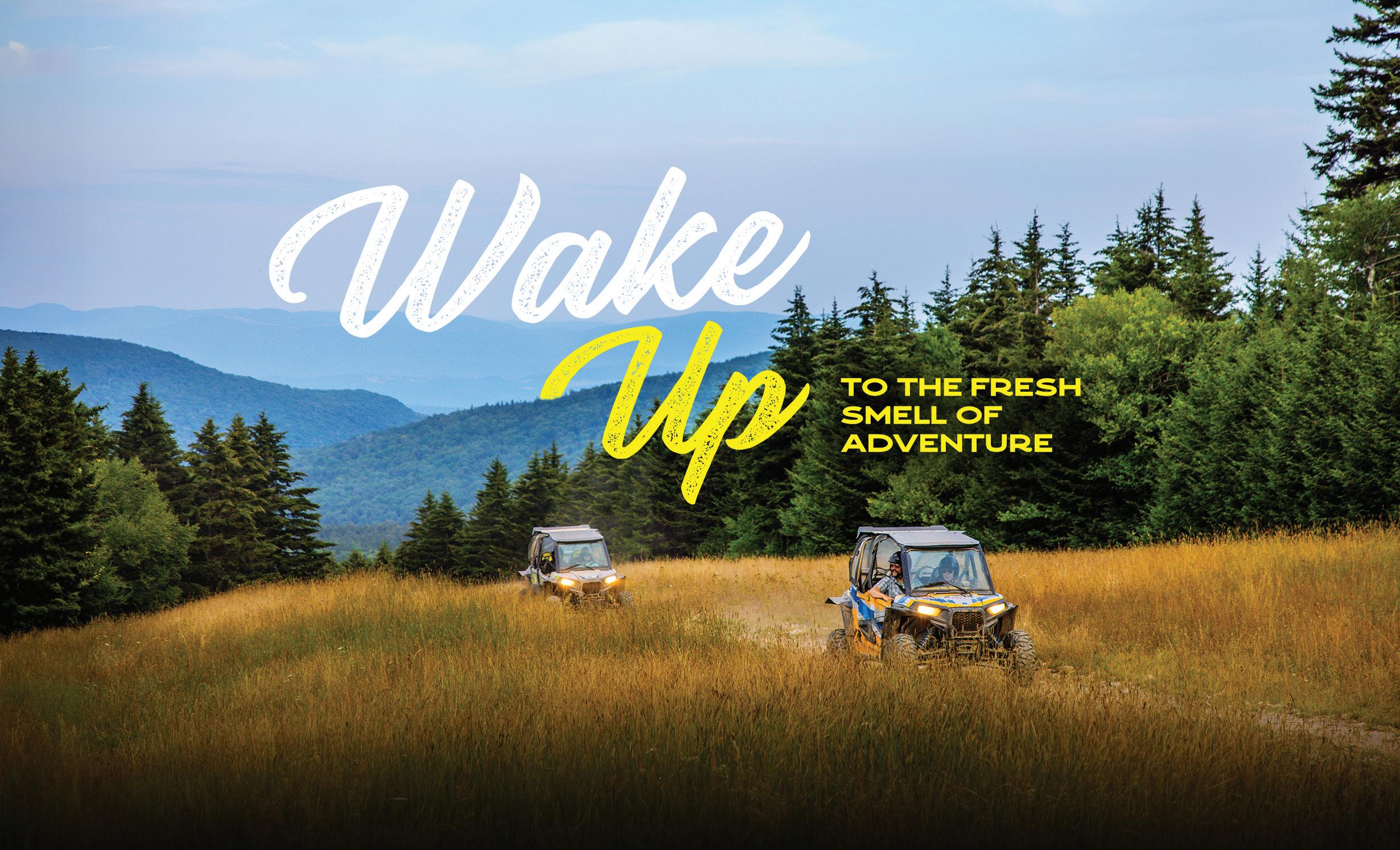
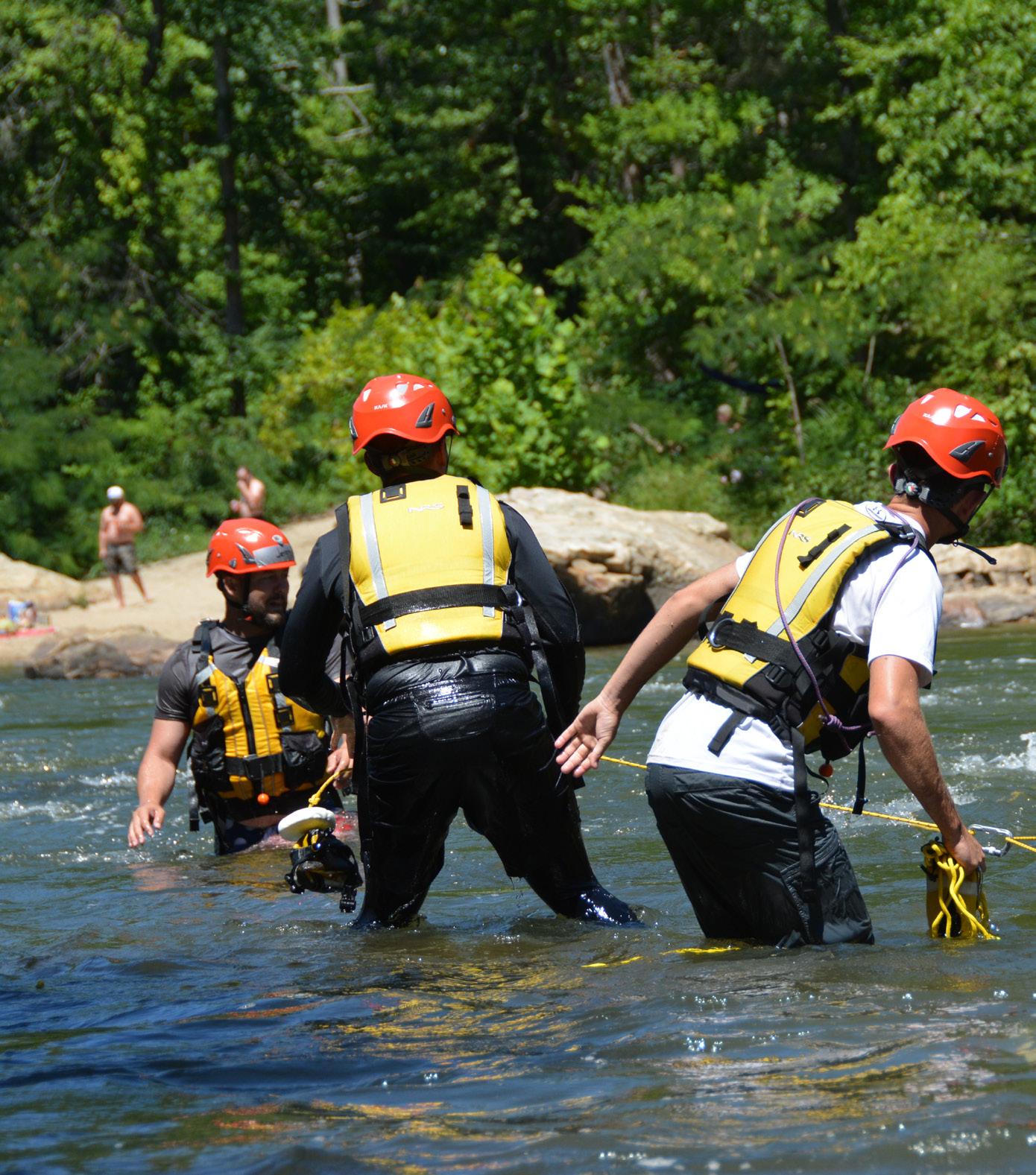
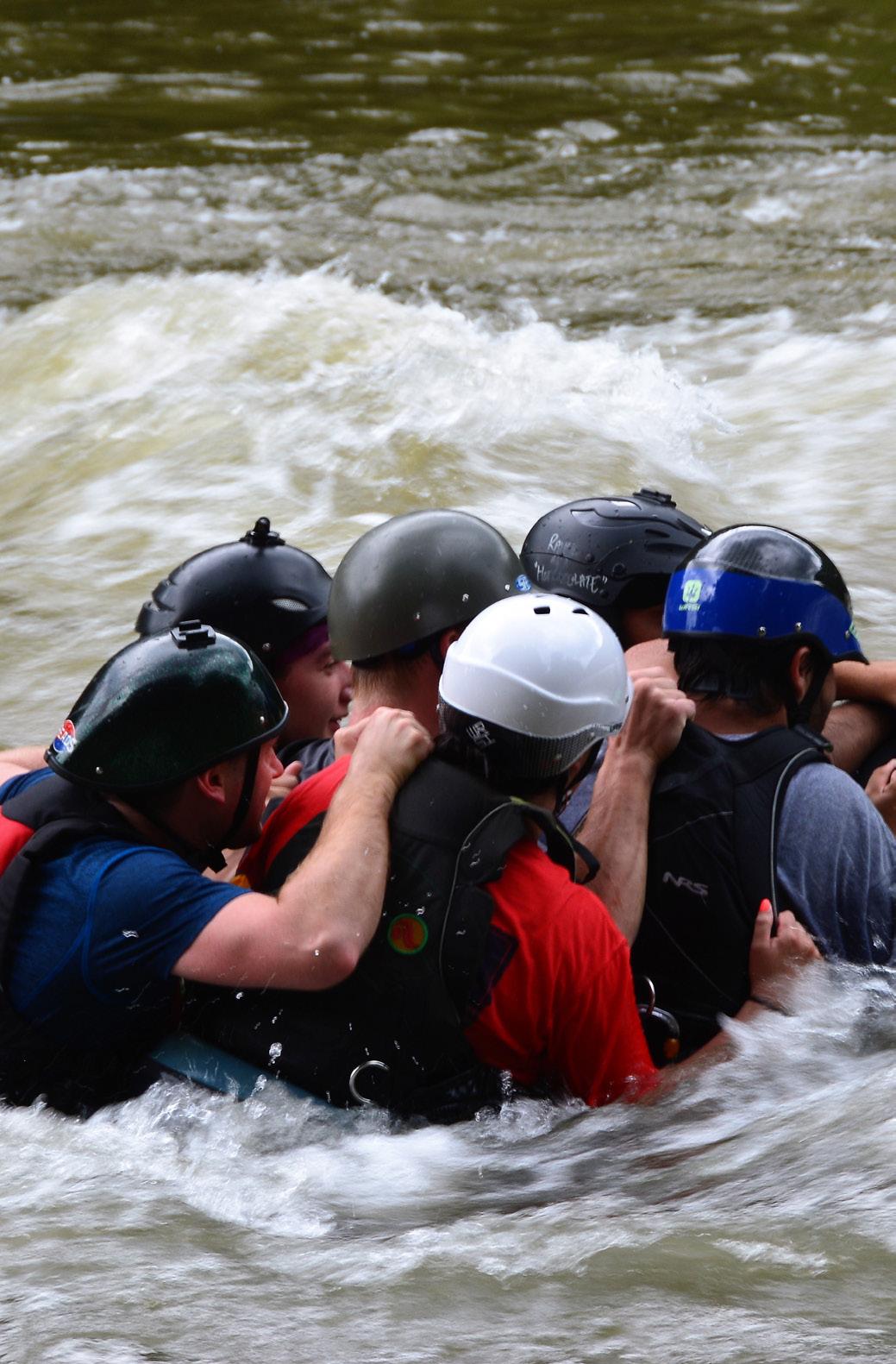
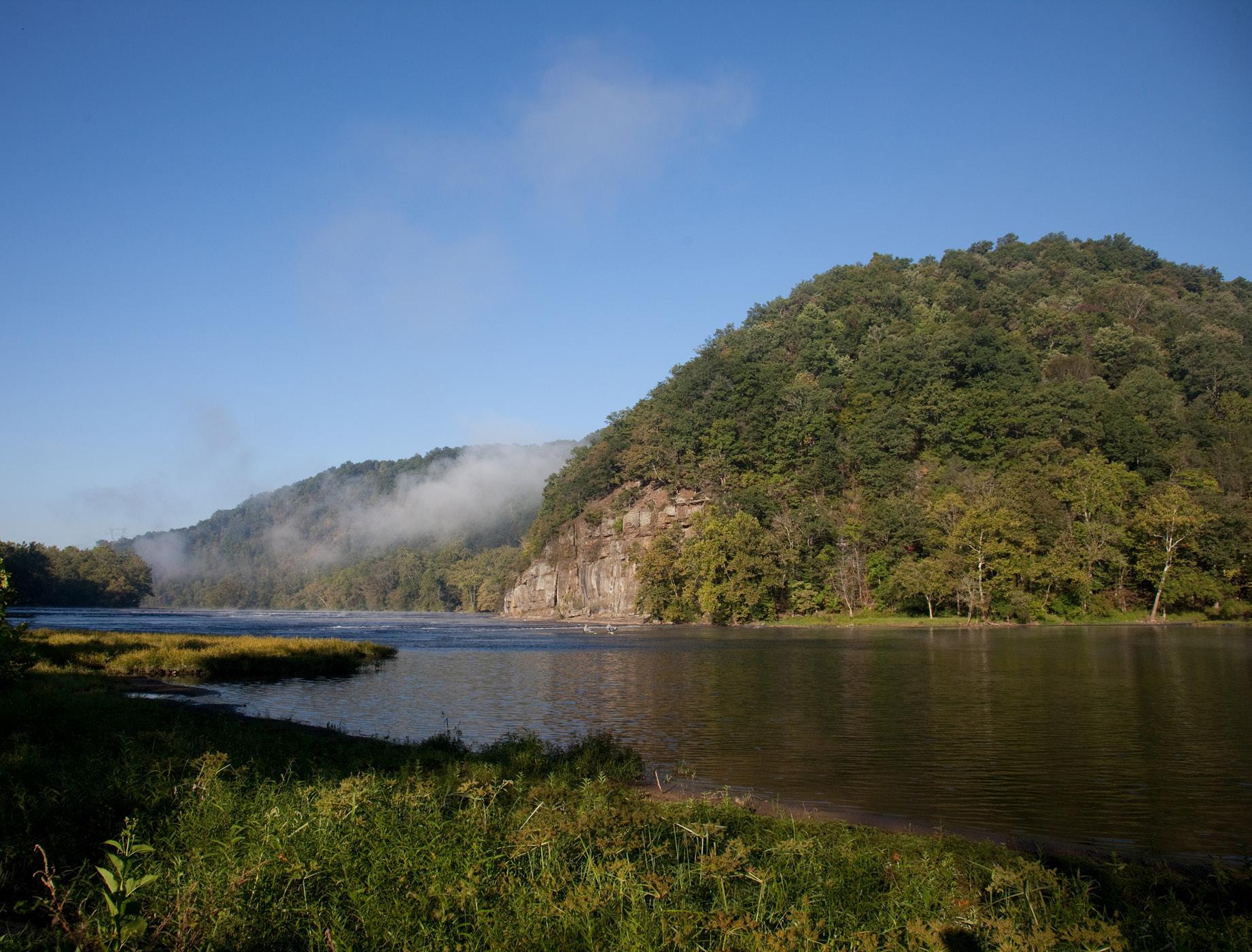
and technical rescues, scene management, and a variety of other practical techniques that will help recreational paddlers and professional rescuers keep themselves and others safe,” says Fisher. “Realistic scenarios provide an opportunity for our participants to assess the situation, make decisions, assume key roles, and practice their skills, both individually and within a team context.”
According to Fisher, these courses have saved dozens—if not hundreds—of lives.
“We routinely hear from students who have successfully conducted real-world rescues,” he says. “These stories are why we do this training.”
For more information, see nolilearn.org.
New River Land Trust: Preserving Riverfront Acreage in Southwest Virginia Clean water starts with healthy land. That’s why the New River Land Trust (NRLT) has spent more than two decades conserving the forests, farms, and open spaces flanking


the New River—one of the world’s oldest rivers and a vital drinking water source in southwest Virginia.
According to executive director John Eustis, the organization works with private landowners to establish conservation easements— voluntary legal agreements that restrict development while allowing continued private ownership. These agreements, he says, help safeguard against major threats like “sprawling, poorly planned development” that can degrade water quality and fragment critical habitats.
To date, NRLT has protected roughly 28 miles of New River frontage in five counties and roughly 58,000 acres across the Virginia portion of the river's watershed. In the Mountain Lake area of Giles County, for instance, the trust has worked with private


landowners and state and federal agencies to conserve more than 4,000 acres.
“This area is a critical headwater for the New River and the Little Stony Creek drainage,” says Eustis. “It is an area that is extremely rich in natural resources, including highconservation value forest, rare birds, rare plant species, cold water that supports native brook trout, and a unique high-elevation ecosystem.”
Protecting properties like these ensures the New River will remain wild for generations to come.
“The New River region is a special place rich with natural and cultural resources,” says Eustis. “As such, it is well deserving of a concerted conservation effort.”
For more information, see newriverlandtrust.org.

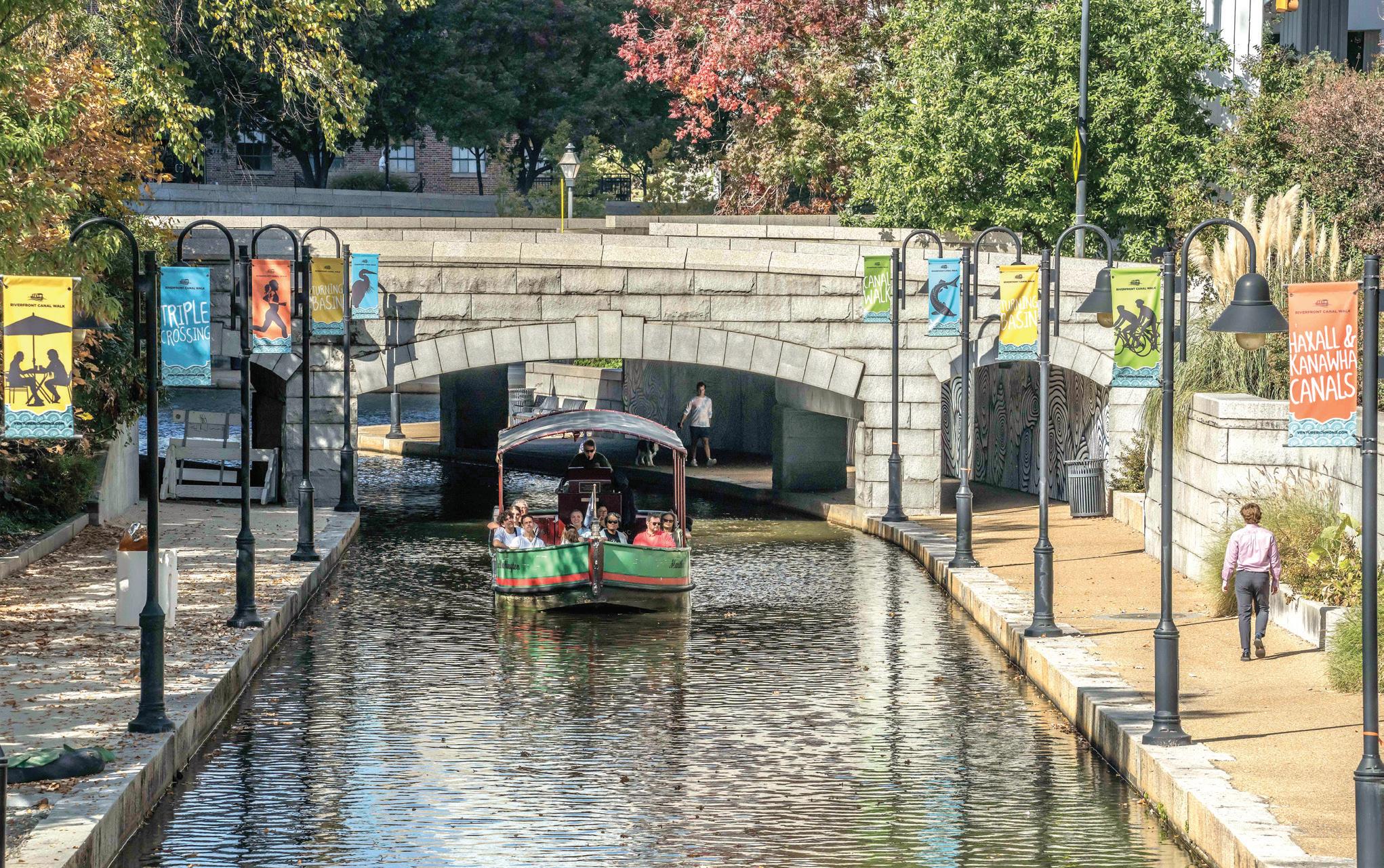

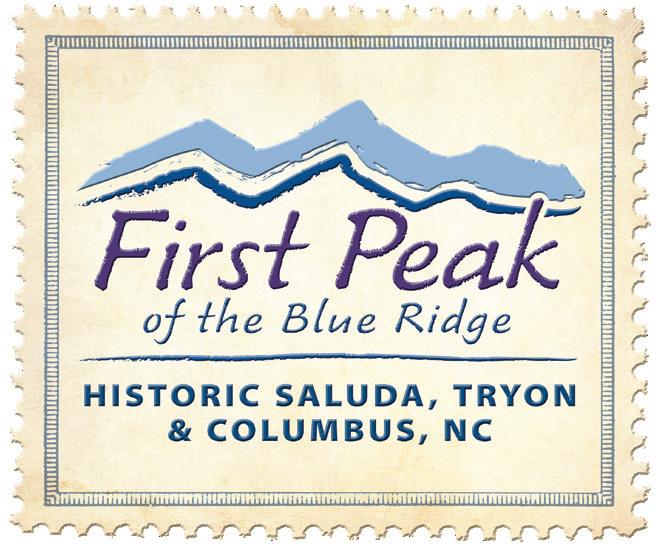
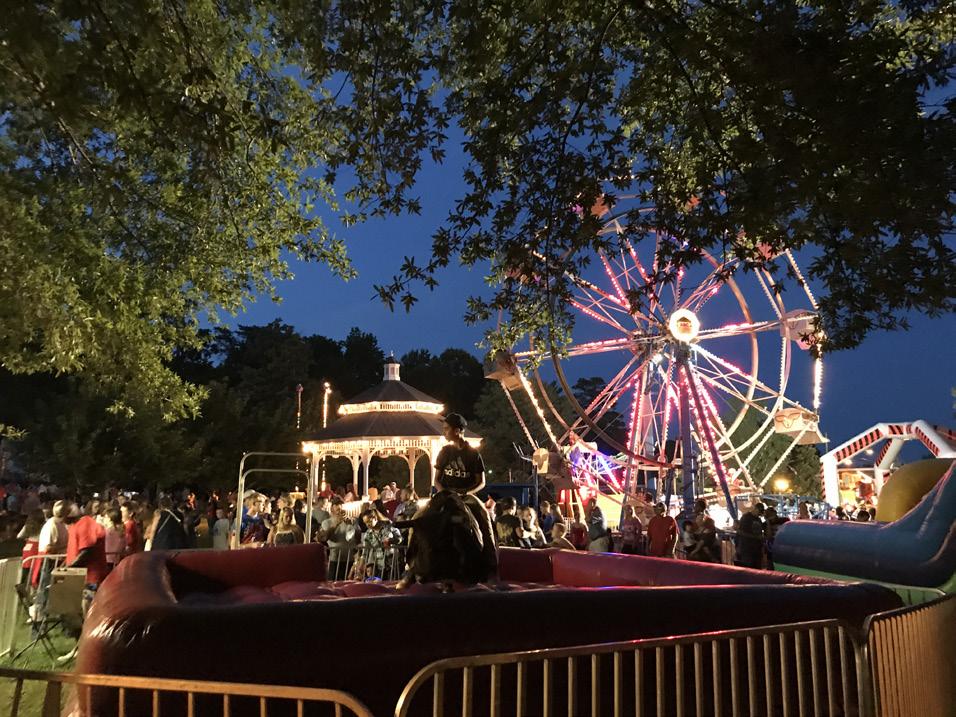
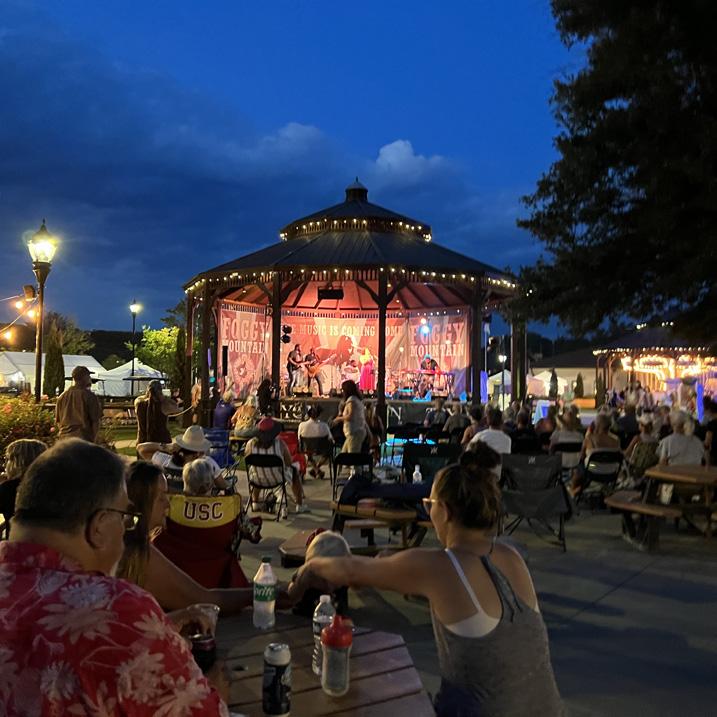



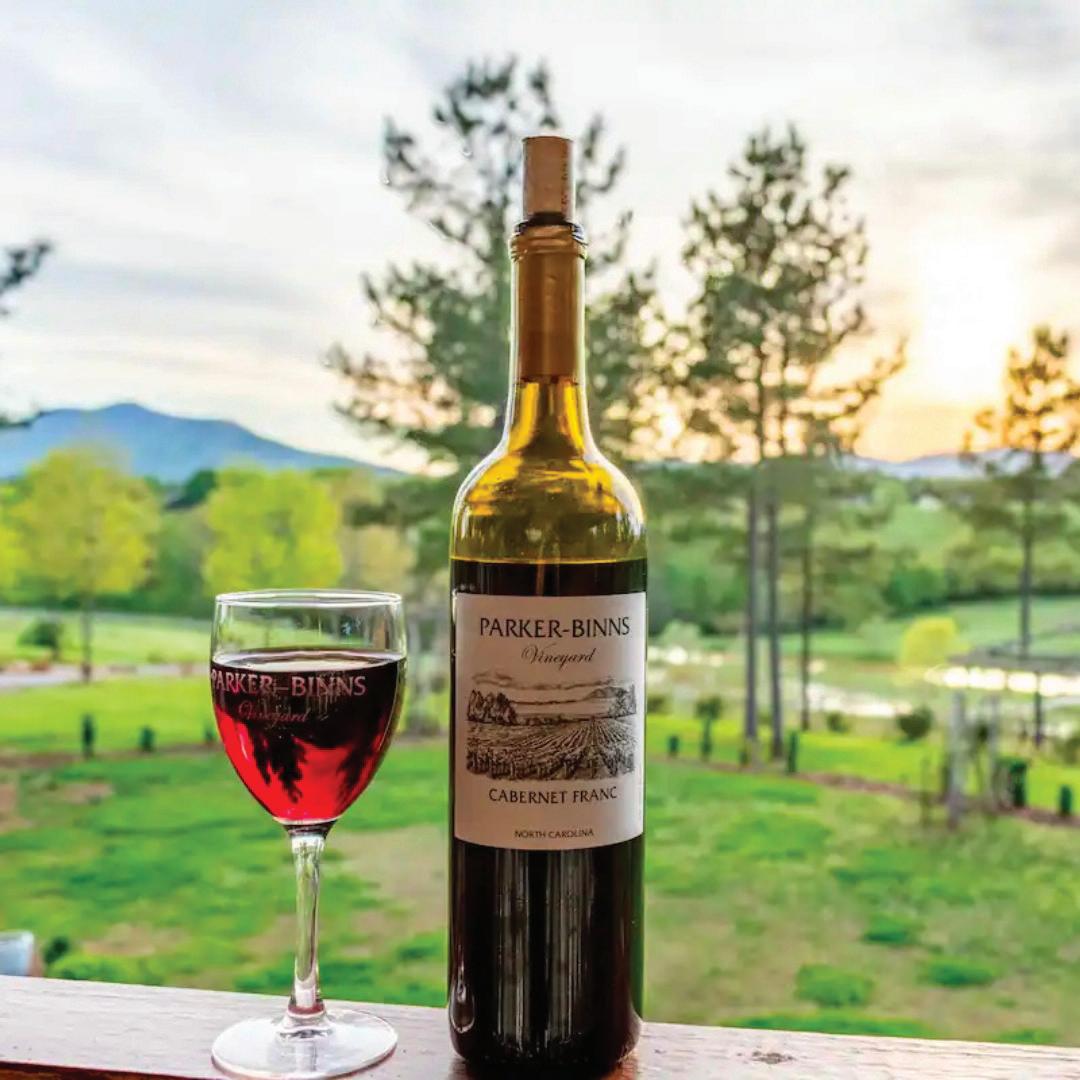





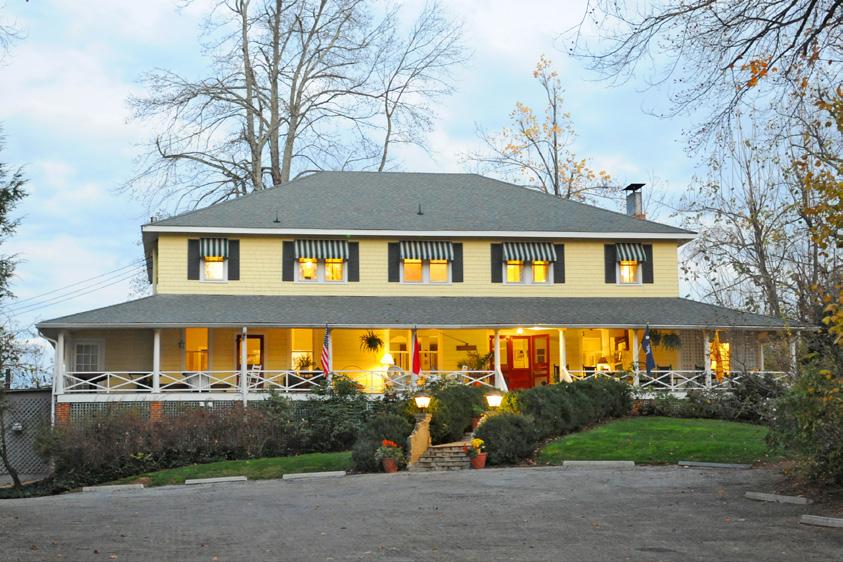





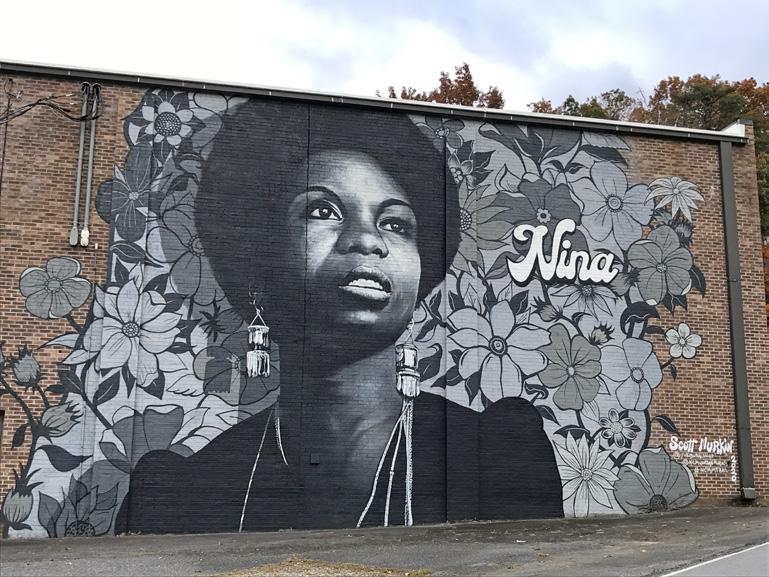

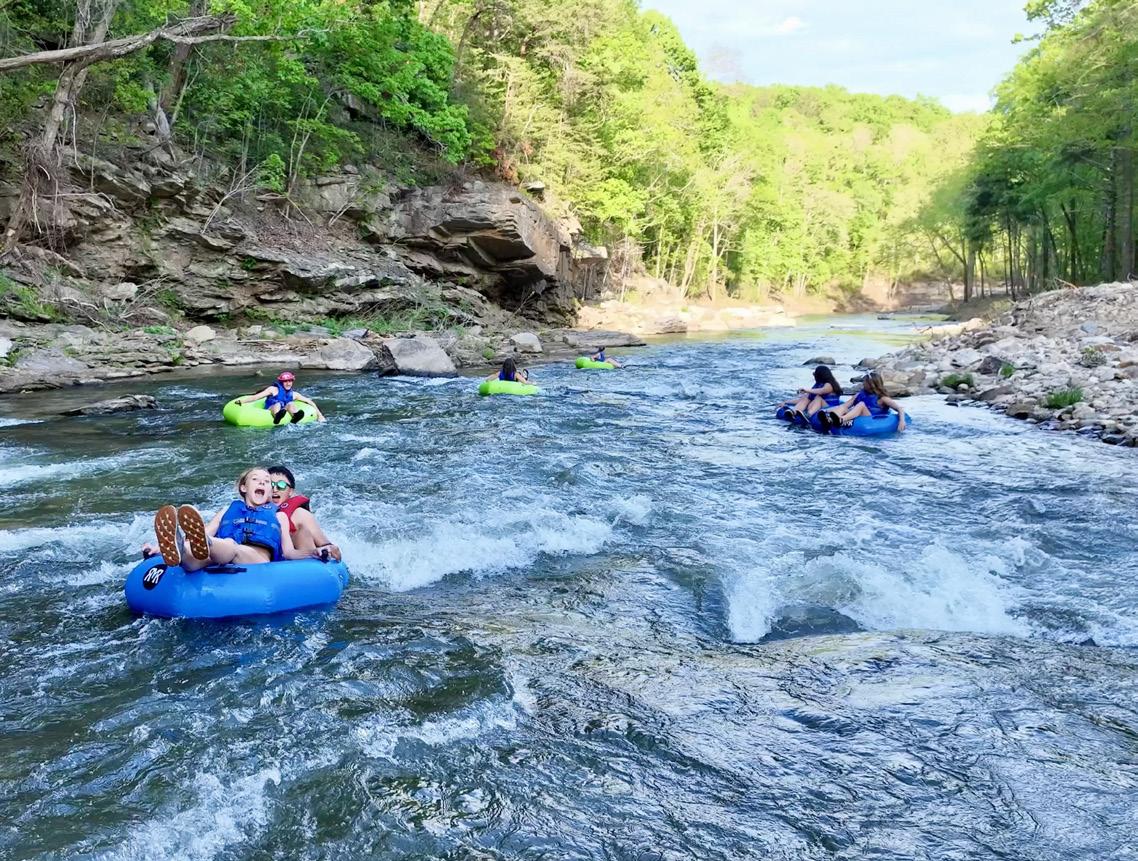




From tranquil paddles on mountain lakes to adrenaline-pumping whitewater runs, the Blue Ridge region and Southeast are bursting with water adventures for every kind of explorer. Whether you’re chasing waterfalls, casting a line, or cooling off in a hidden swimming hole, there’s no better way to beat the heat and connect with nature than by diving into the waterways that exist in these stunning landscapes
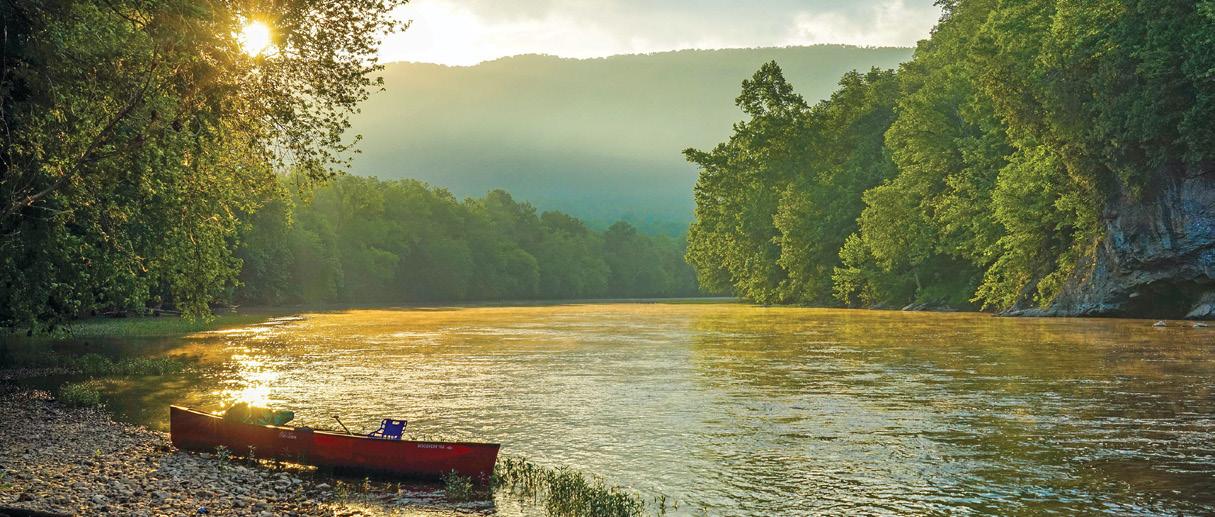

2025 marks a special milestone for the Upper James River Water Trail: 15 years of stewardship and promotion of this stunning natural resource.
The Upper James River Water Trail team invites paddlers, anglers, campers, and tubers to join in the celebration by spending time on the river and showing their appreciation for this natural treasure through responsible and safe practices!
The terms Water Trail and Blueway are often used interchangeably to describe designated routes on waterways for nonmotorized recreation. The Upper James River Water Trail, established in 2010, promotes and protects the river by uniting landowners, businesses, and community members. It also markets recreational opportunities and educates the public about responsible practices.
The Upper James, part of Virginia’s longest river contained entirely within the state, begins at the confluence of the Jackson and Cowpasture Rivers. This means paddlers can experience the river from its very start. At normal water levels, the river features class I and II rapids, making it great for beginners, families, and intermediate paddlers. In addition to canoeing and kayaking, tubing is popular, with outfitters accommodating family and group trips.
The entire 65+ mile stretch of the Upper James is designated a Virginia Scenic
River, offering options for both day and multi-day trips, including riverfront camping. The river flows through Botetourt and Rockbridge counties, both of which offer plenty of lodging, dining, and supply options for visitors.
Celebrate the Upper James River in 2025 with these fun and meaningful ways to connect to this scenic water trail:
• Explore a new stretch of the Upper James River Water Trail that you’ve never experienced before! Some areas are lively, while others offer peaceful solitude and abundant wildlife.
• Introduce a friend to the river! Spend a day paddling, fishing, or simply soaking in the fresh air, then relax in one of the nearby water trail towns— your friend will thank you.
• Plan a group paddle or tubing float with family and friends. It’s a great way to share the river’s natural beauty with those you care about.
• Embrace the river in every season. Spring brings wildflowers, summer is perfect for beating the heat, and fall offers stunning foliage views. Treat yourself to three amazing weekends in 2025! WAYS TO CELEBRATE

If you’re looking to escape and embrace the water, Hopewell, VA, offers the perfect setting to float your boat—literally. With its scenic riverfront and easy access to both the Appomattox and James Rivers, this charming riverside city is a haven for water lovers.

The Hopewell Marina is the go-to spot for launching all kinds of water vessels, from sleek kayaks and peaceful canoes to paddle boats and small motorboats ready for adventure. Whether you’re out for a relaxing paddle, casting a line in a quiet cove, or cruising with friends under the open sky, the marina makes it easy to get on the water and explore some of the region’s most beautiful and tranquil waterways. If swimming is more your speed, head to City Park for a refreshing dip and a relaxing day by the water. Before you go, check out the city’s Recreation and Parks website for a full list of parks and water activity spots: hopewellva.gov/158/Recreation-Parks.
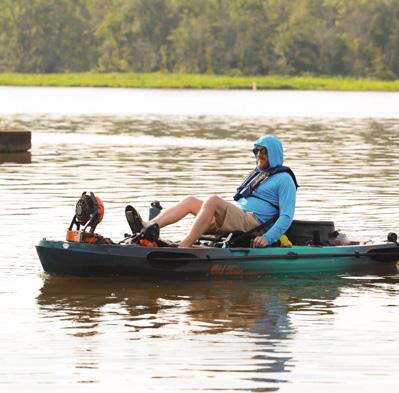
recreation opportunities, including the scenic River Walk and city-wide bike lanes perfect for a leisurely ride or brisk workout before a refreshing dip.
After a day spent paddling or biking, the fun doesn’t have to end. Treat yourself to delicious meals at one of Hopewell’s many local restaurants or catch live shows at the historic Beacon Theatre, known for its diverse lineup of musical acts. For those interested in history and family-friendly activities, there’s plenty to explore, from the elegant Appomattox Manor and Weston Manor to the charming downtown historic district and City Point National Cemetery
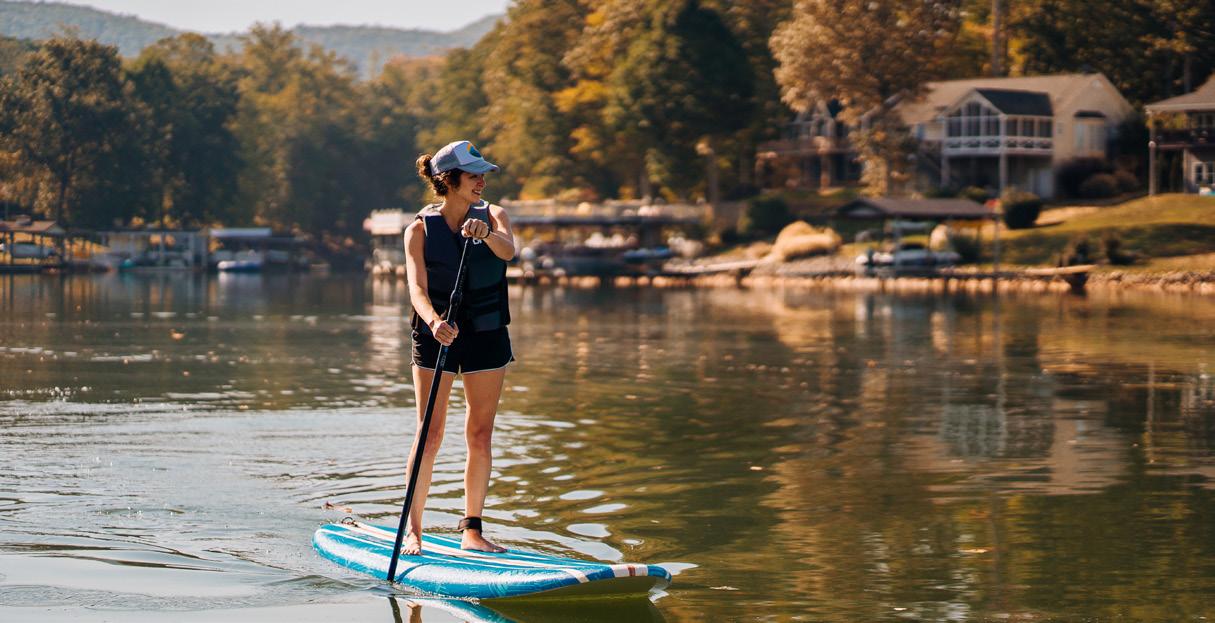

Start your aquatic adventure in SoSi with a visit to the historic Dan River , which flows 214 miles through North Carolina and Virginia. Head to the Abreu-Grogan Boat House to pick up a canoe, kayak or stand-up paddleboard and begin your float! This section of river is perfect for all ages and experience levels, and the Parks and Recreation Department even offers Moonlit Paddles to take in the night sky on the water! If you prefer to stay on land, the Riverwalk Trail is over 12 miles long and runs along the Dan River. It offers scenic views and is perfect for a leisurely walk, bike, or run.
For the anglers, consider stopping by local outfitters like Fish Tales & Bait Tackle—a family-owned business serving the community since 2007—and James River Tackle, both of which provide quality gear, bait, and expert advice. Hopewell also offers plenty of outdoor
Whether you’re seeking outdoor adventure, cultural experiences, or a relaxing day by the water, Hopewell, VA, has something for everyone.
Contact Hopewell tourism at 804-541-2270
visithpg.com
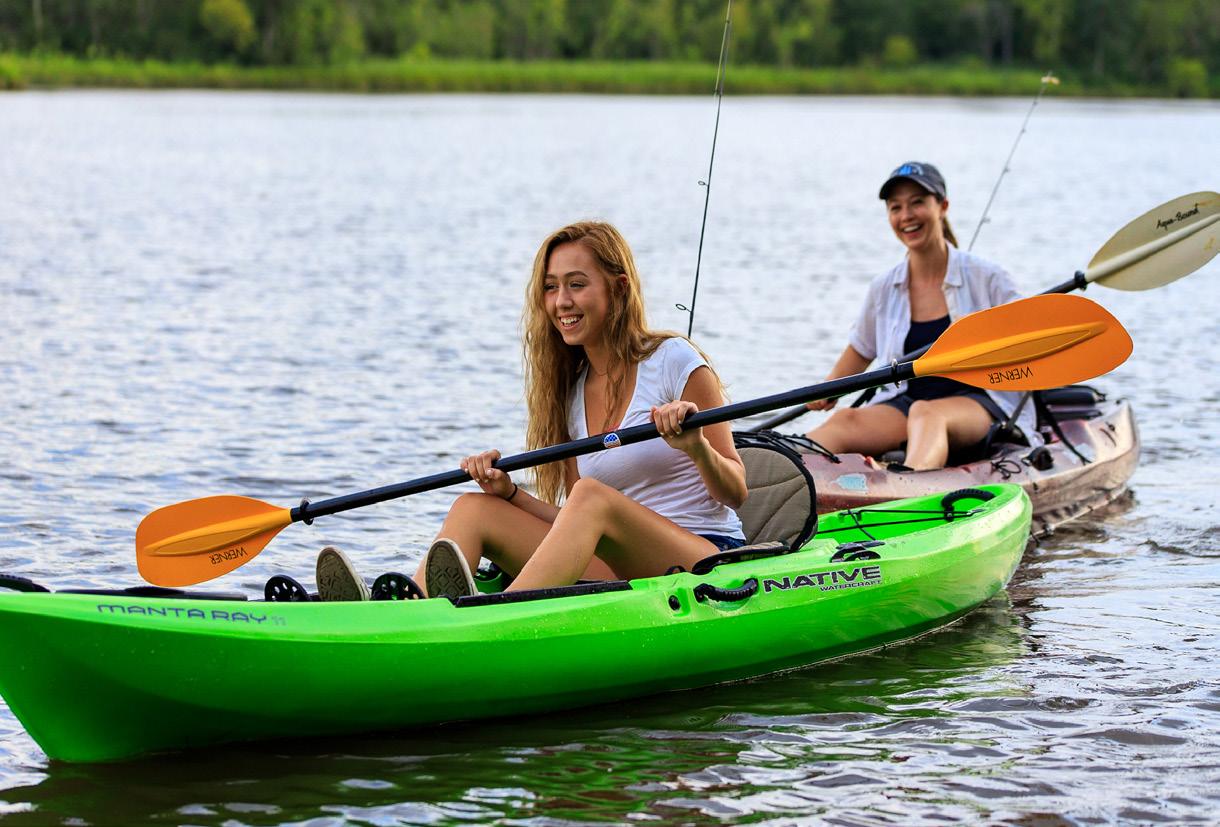
Craving a day on still water? Head to Smith Mountain Lake ! Whether you’re swimming, boating, fishing, or diving into water sports, this lake is the ultimate spot for a family getaway. With a public park and breathtaking natural beauty, it’s the perfect place to relax and recharge. For more family fun, Wayside Park is a great place to fish along Sycamore Creek, and has more than 50 acres, including a playground, LOVEworks sign, and pickleball court.
It’s no secret that SoSi, Virginia, is a playground for outdoor enthusiasts—especially those who love to be on the water. From the rivers and lakes of Danville to the scenic spots in Pittsylvania County, the region is full of aquatic adventures waiting to be explored! VisitSoSi.com
For activities off of the water, consider stopping at one of the local outfitters to pick up some gear! Moss Mountain Outfitters, located in the River District, offers kayaking gear as well as other outdoor items. If you’re looking to run the Riverwalk Trail, The Brick Running & Tri Store has the shoes and athletic apparel you need to keep cool. Not done exploring? Make your way to Anglers Ridge to ride over 30 miles of mountain biking trails for all experience levels. Be sure to check out Funky Fleece Farm, an Alpaca farm in Gretna, Virginia, or take the family to a Danville Otterbots minor league baseball game in Dan Daniels Memorial Park. Head indoors to explore interactive exhibits, a Digital Dome Theater, and butterfly garden at the Danville Science Center Wind down with wine slushies and live music at 2 Witches Winery and Brewing Company, or treat the kids to a sweet scoop at Bubba’s Ice Cream. Refuel at Me’s Burgers and Brews — don’t miss their signature sweet potato fries! Sports lovers will find their fix at River District Social, a vibrant sports bar with virtual golf, bowling, arcade games, karaoke, and live music. So, What Are You Waiting For? VisitSoSi.com!

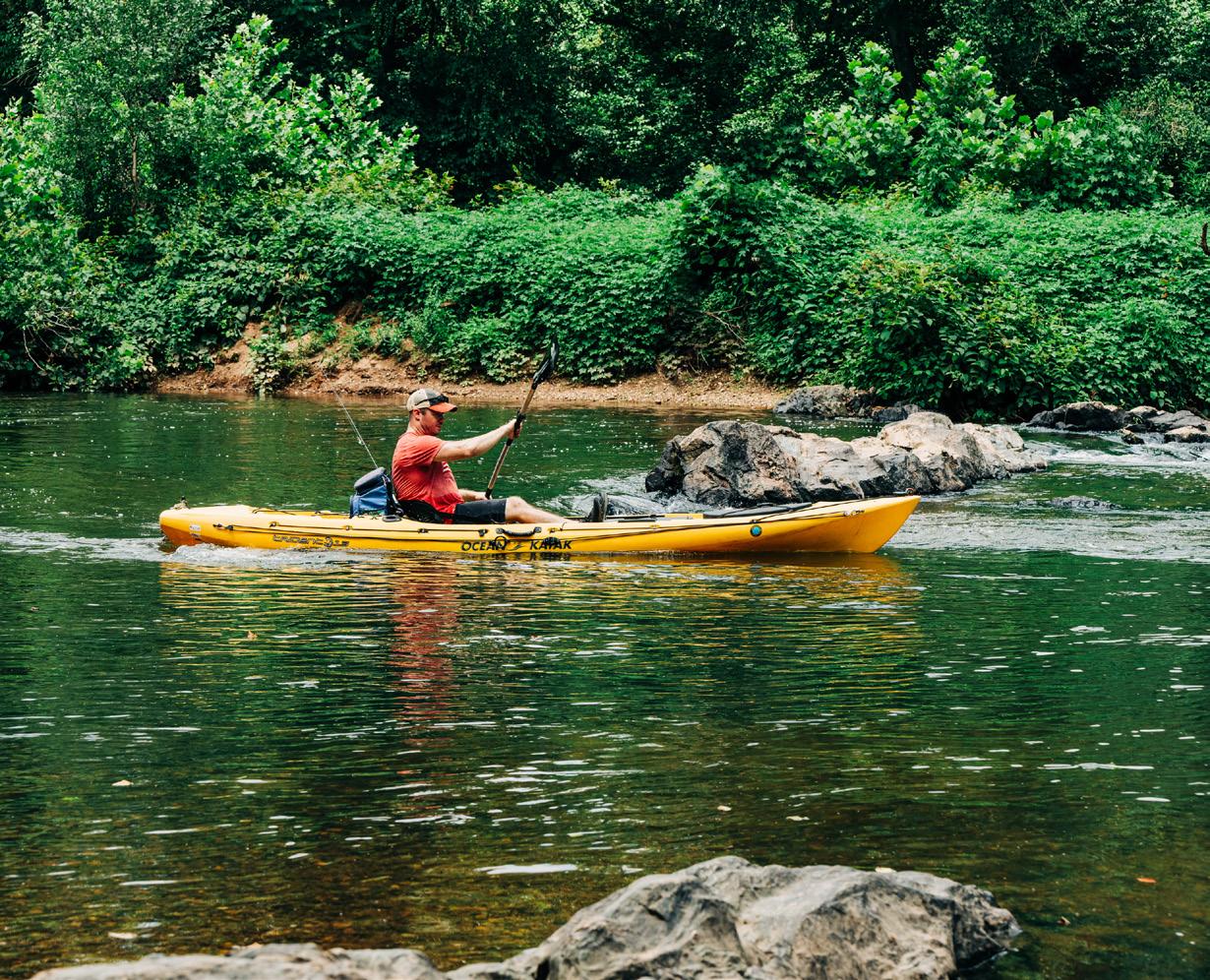
Just a short drive down I-64 from Richmond or Charlottesville, Fluvanna County is your gateway to water adventures and riverfront history. Paddle past remnants of old locks, dams, and mills—echoes of the region’s past. Find Fluvanna, find your flow, and let the water set the pace for your next escape.
A must-do adventure in Fluvanna is the self-guided Rivanna River paddle, which is accessible for all levels of kayakers. This 6.5-mile paddle ends at Pleasant Grove Park, Fluvanna’s premier outdoor destination. Spanning more than 925 acres along the river with 22 miles of hiking and biking trails, Pleasant Grove is also home to the state mountain biking championship— making it a true outdoor gem.
The Rivanna River itself has a rich history—it’s Virginia’s first Designated Scenic River and the largest tributary of the Upper James. Thomas Jefferson’s public service career took shape right here, beginning with efforts to improve navigation on this vital waterway. In fact, the Fluvanna County Historical Society even captured its significance in the book Mr. Jefferson’s River Dams, locks, sluices, and other
improvements manipulated water levels, allowing canoes, batteaux, and canal boats to make their way up and down the shallow river. While most of those features have disappeared over time, some are still visible.
To share the river’s history and beauty, a group of locals developed a GPS-enabled map. The paddle route notes more than a dozen points of interest where you may find the remnants of improvements—adding a fascinating historical layer to your adventure. Plans are now underway to build on this resource.
Take the educational piece further with a visit to the Pleasant Grove Museum, which offers exhibits and artifacts of the history of the river in Fluvanna. Right next door is the Farm Heritage Museum, where visitors can learn about the agricultural traditions of the area.
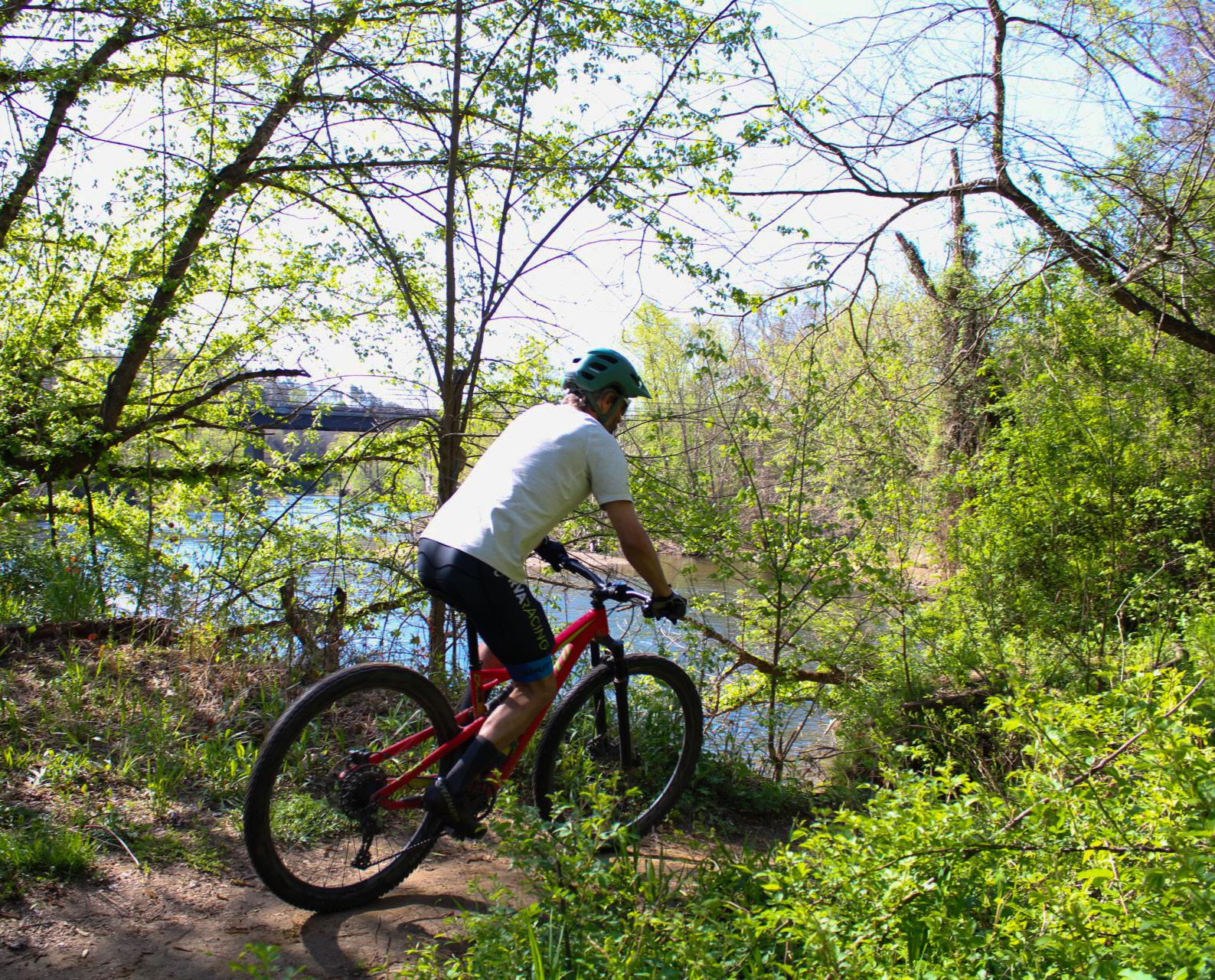
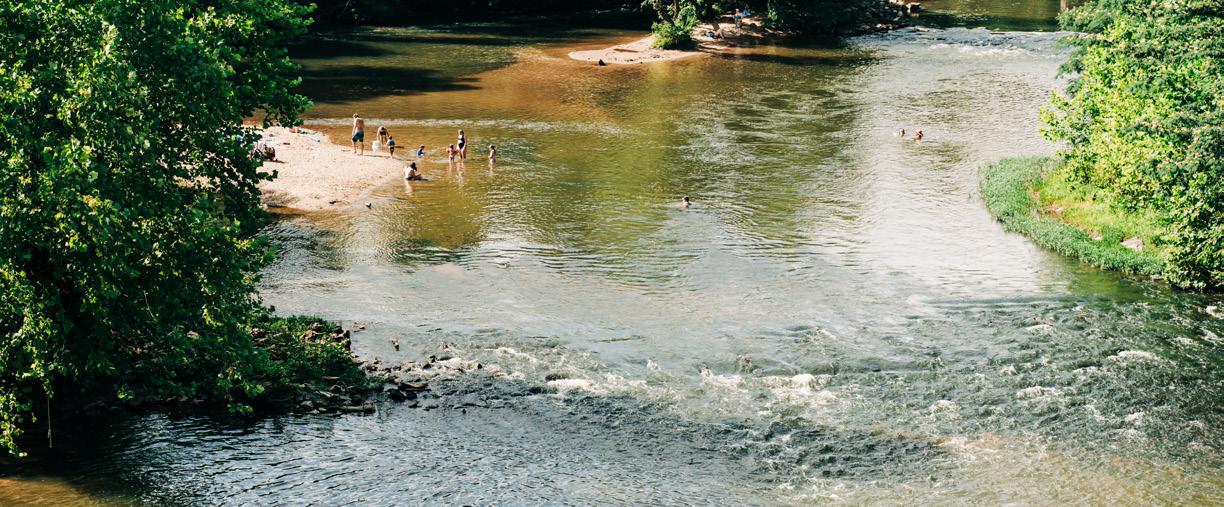
Cunningham Creek Winery is located just minutes from the park, in the renowned Monticello AVA — widely celebrated as one of the best wine-growing regions in the world. Their wines have been earning accolades at the prestigious Monticello Cup, and a recent article in Wine Enthusiast places Cunningham Creek near the top with the industry’s most celebrated names. Cunningham Creek has now added beer, making it Fluvanna County’s first brewery.
Their impressive lineup of craft beers is well worth a visit. It’s part cozy short-order kitchen, with delicious, locally-sourced meals; part local-only retail food market that sells those same fresh ingredients– and many more. Across the street from Pleasant Grove is Fruit Hill Orchard, a top regional draw during apple season. But this family-run farm market is a gem all year long, with plenty of activities for kids and a friendly, welcoming vibe.
FIND FRESH THIS SUMMER
Fluvanna is ready to feed hungry paddlers and hikers, no matter their dietary preferences. Meat lovers will want to check out Wahoo BBQ, where the smoker is always cranking, or Grass and Grain, where you can experience farmfresh meat cooked to perfection.
Take your post-paddle meal in a different direction with Local Eats, a unique and vegan-friendly spot.
Vacation Starts With VA FindFluvanna.org
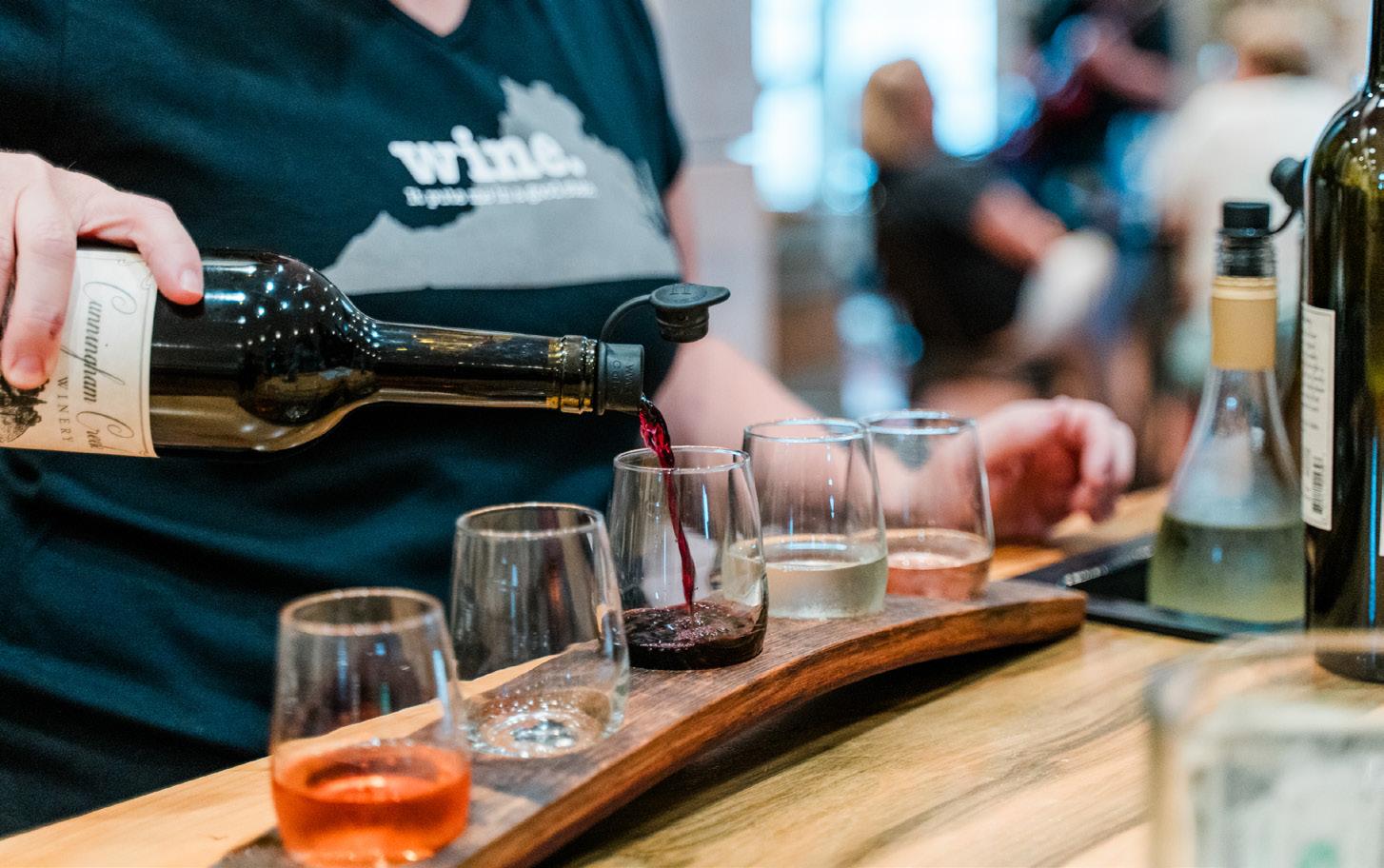
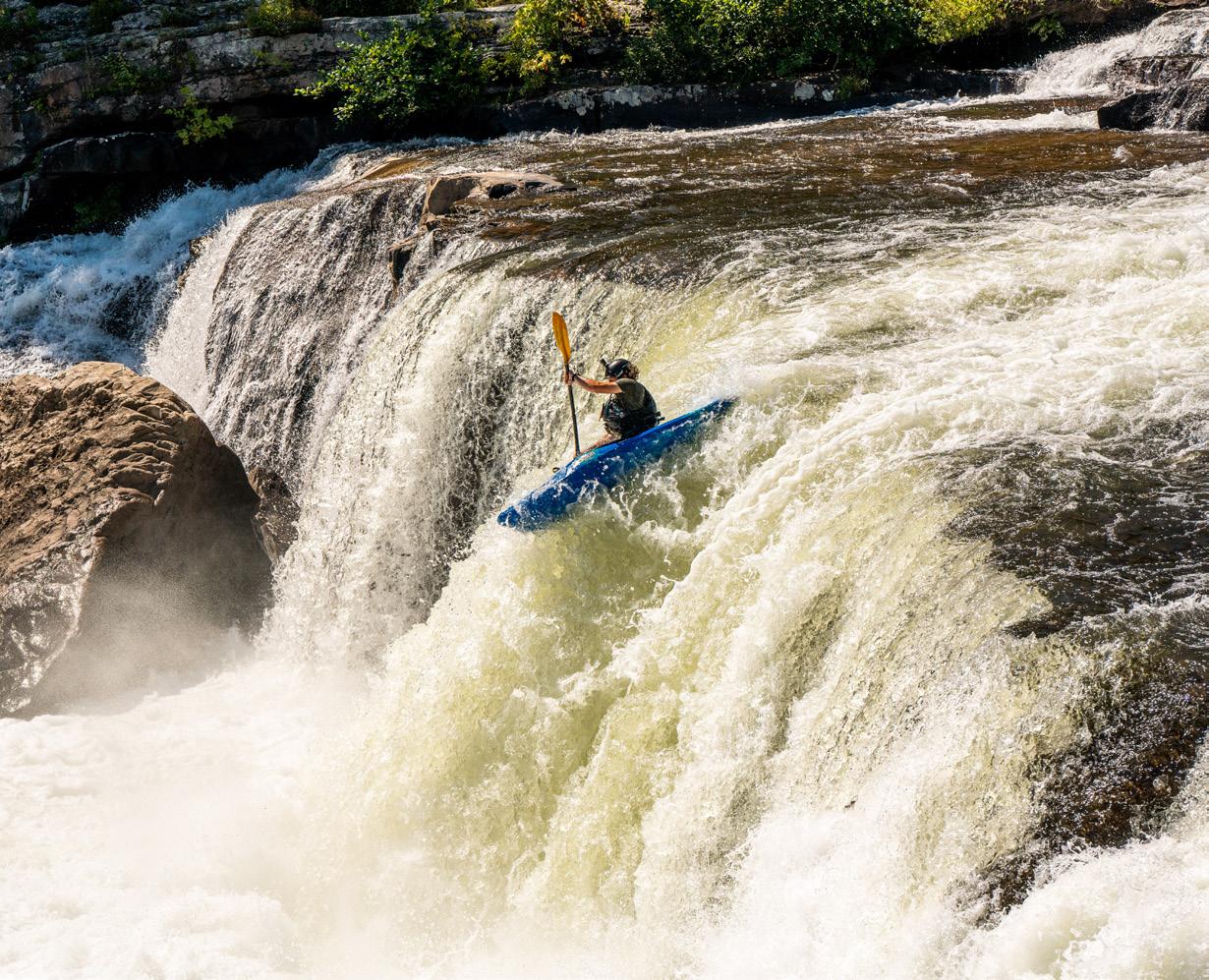
If your idea of a perfect summer day includes paddling through cool waters or watching your kids cannonball while you sip something cold nearby—well, friend, you’re in for a treat. Welcome to Pennsylvania’s Laurel Highlands, where the rivers run wild, the lakes are laid back, and the adventures flow freely.
Start with the crown jewel: the Youghiogheny River (that’s “YOCK-uh-gain-ee” to the uninitiated - and yes, the locals are patient with first-timers). In Ohiopyle State Park, one of the most popular whitewater destinations in the country, it splits into three distinct personalities. The Middle Yough (Class I–II) is a gentle ride— ideal for families, first-timers, or anyone craving a peaceful float with the occasional ripple. Think of it as a glass of Pinot Grigio on a porch swing.
Craving something a little wilder? The Lower Yough brings Class III and IV rapids and a guaranteed shot of adrenaline. Rafters and kayakers travel from everywhere for this stretch. Just remember to plan ahead: risk increases with river class, so go with pros like White Water Adventurers, Wilderness Voyagers, Ohiopyle Trading Post, or Laurel Highlands River
Tours & Outdoor Center. And for those who lean into the extreme, the Upper Yough is just a stone’s throw away and offers a tight, technical gorge with Class IV–V rapids. If calm waters are more your speed, Laurel Hill Lake in Somerset County offers 63 acres of pure serenity—perfect for paddleboarding, kayaking, or floating like a well-hydrated manatee. Nearby Kooser Lake and Keystone State Park feature beginner-friendly waters and scenic swimming areas great for kids and sun-seekers alike.
Keep in mind that these rivers and lakes are wild and wonderful, so please check weather and water levels, respect currents, and leave no trace. Visitor Centers offer trail maps, resources, and helpful staff to keep your adventure safe. And yes, bring the water shoes!
Don’t worry if you forgot your

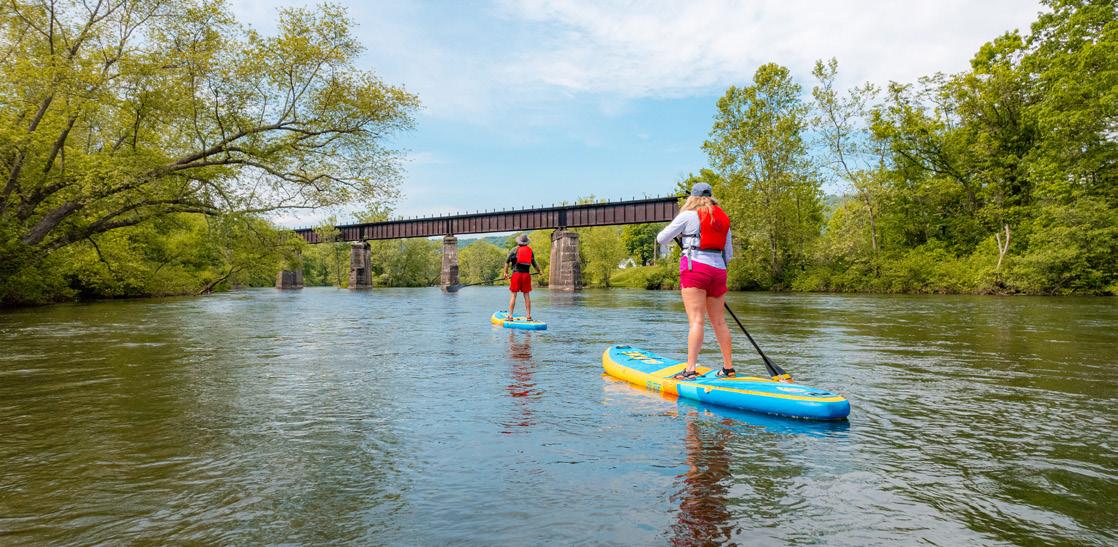
gear. Local outfitters are ready with rentals, guided trips, and advice that’s equal parts practical and often humorous. Their guides are part river whisperer and part entertainer, but full-on fun.
Once you’ve dried off, settle in for the evening with a cold pint at Falls City Pub, a delicious meal at nearby Out of the Fire Café, or a refreshing drink at one of Laurel Highlands’ many craft
beverage purveyors. Small towns like Ligonier and Somerset offer charming shops, live music, and casual summer vibes. The region is as family-friendly as it gets. Watch the falls in Ohiopyle from an accessible overlook, race go-karts at Caddie Shak, pet and feed wildlife at Living Treasures, or dive into full-on splash mode at Idlewild & SoakZone. With water slides,
lazy rivers, and a wave pool, enjoy a mix of theme park thrills and cool-down fun. Whether you’re chasing whitewater adventure, lazy lake breezes, or just classic summer magic, you’ll make the coolest splash in Pennsylvania’s Laurel Highlands.
GoLaurelHighlands.com
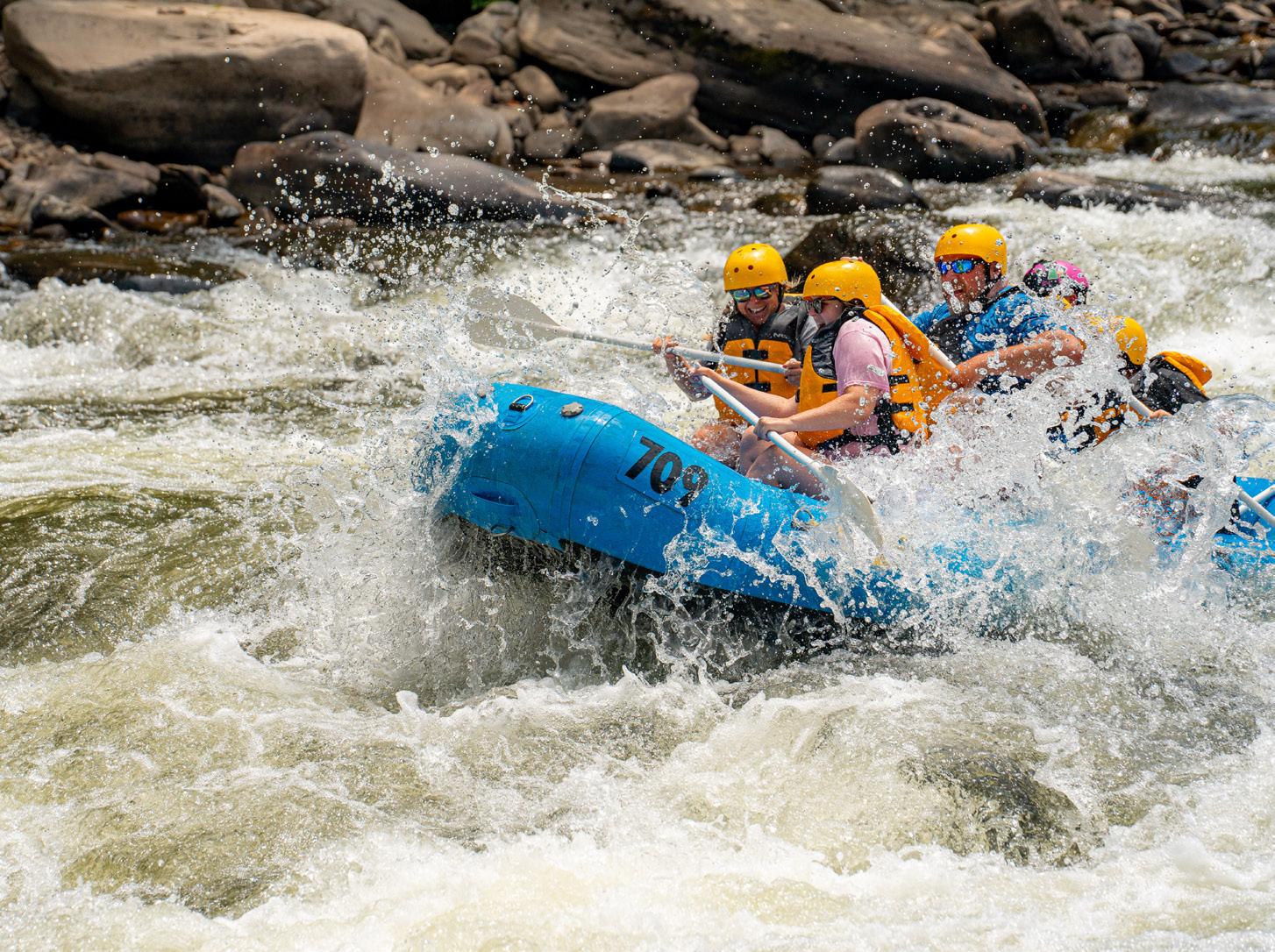
Carving its way through the heart of southern West Virginia, the New River Gorge is more than just a scenic wonder—it’s a playground for water adventurers of all kinds. From adrenaline-pumping whitewater rafting to peaceful paddleboarding and swimming holes, the Gorge offers something for every kind of water lover. Get ready to make waves in one of the country’s premier outdoor playgrounds.

KNOW BEFORE YOU GO
Safety is key when enjoying water adventures in the New River Gorge. Always wear a personal flotation device (PFD)! For the best experience, consider heading out with a local outfitter and professional guides who know the river inside and out. If you’re an experienced paddler looking to explore on your own, shuttle services like Hills to Hills can help you access river routes with ease. Not sure where to start? The New River Gorge CVB’s whitewater page features a list of trusted local outfitters offering guided rafting trips for all experience levels. These experts provide the gear, know-how, and safety support to help you make the most of your time on the river. Mountain Surf Paddle Sports also offers guided stand-up paddleboard trips and gear rentals on the New and Gauley rivers, perfect for exploring the Gorge’s serene side.
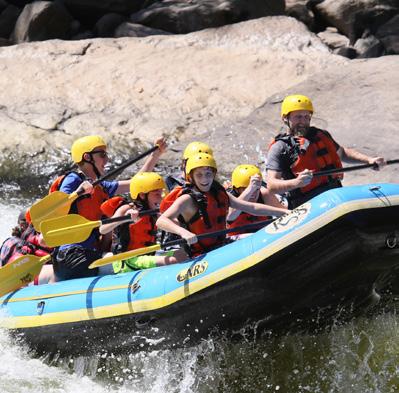
Falls offers a scenic swimming hole and waterfall along the Glade Creek Trail, while The Dries near Cotton Hill provides a more adventurous option—just be sure to check water levels! At Babcock State Park, the pool below the Gristmill makes for a peaceful place to cool off. Families and beginners will enjoy ACE Adventure Water Park, the AOTG Canyon Falls Pool, Summersville Lake, and Hawks Nest, all offering safe, beginner-friendly fun. For experienced paddlers and swimmers, head to Fayette Station, Stone Cliff, Army Camp, or Grandview Sandbar for more challenging water adventures. No matter your pace, the Gorge has the perfect spot to dive in.
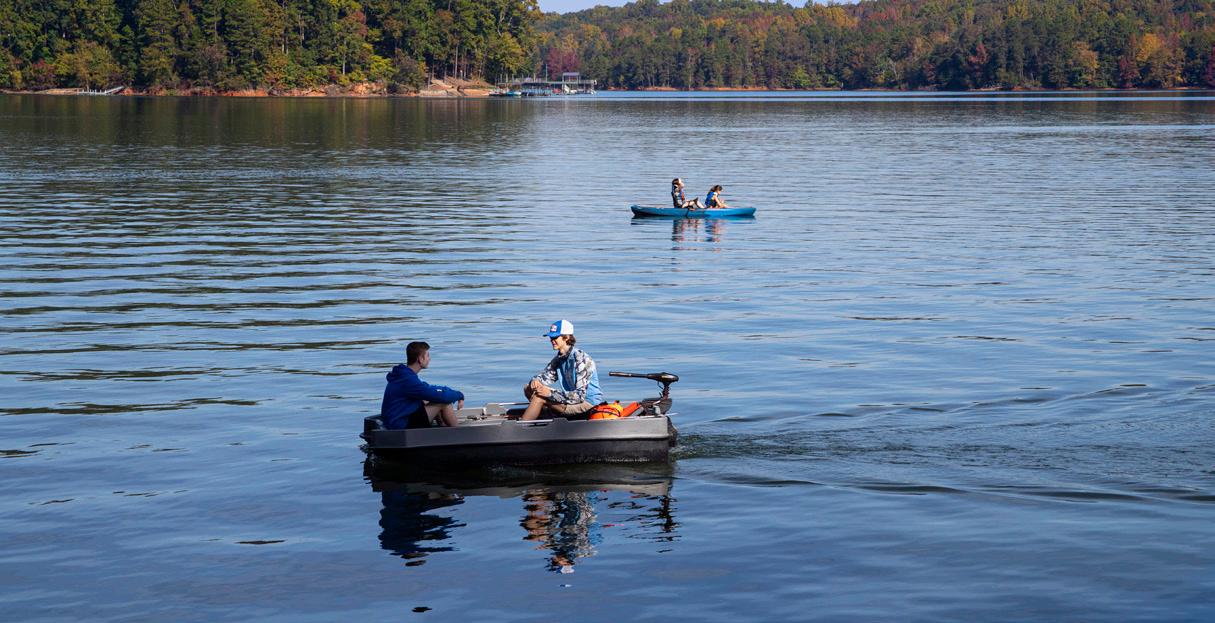
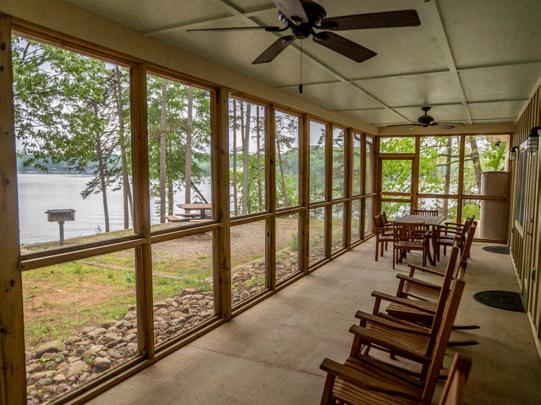
Franklin County is your go-to destination for water-filled fun—from sprawling lakes to serene rivers and refreshing pools. Paddle Lake Hartwell, float the Broad River, or unwind at a shaded swimming spot. With family-friendly parks, local outfitters, and small-town charm, it’s easy to turn a day on the water into a weekend getaway.
Lake Hartwell, a massive 56,000-acre reservoir, is the crown jewel for aquatic fun—perfect for kayaking, swimming, jet-skiing, or casting a line. Public access points, including Tugaloo State Park, make it easy to launch your day on the water. Tugaloo is also a great basecamp for outdoor fun, with a sandy beach, shady picnic spots, and newly renovated waterfront cabins offering unbeatable lake views and direct access to the shoreline.
Whether you’re an experienced paddler or just dipping your toes into the world of water sports, Franklin County has the perfect spot to dive into adventure.
THE FULL OUTDOOR EXPERIENCE
The New River Gorge is home to a variety of water spots for every skill level. Glade
Fayette County is full of outdoor adventure, but there’s no shortage of indoor fun. Enjoy local eats, craft breweries, escape rooms, bowling, or a Bridge Walk tour. You can also take on the #TrailsLessTraveledNRG challenge— explore hidden trails and earn a sticker by visiting just three scenic trailheads!
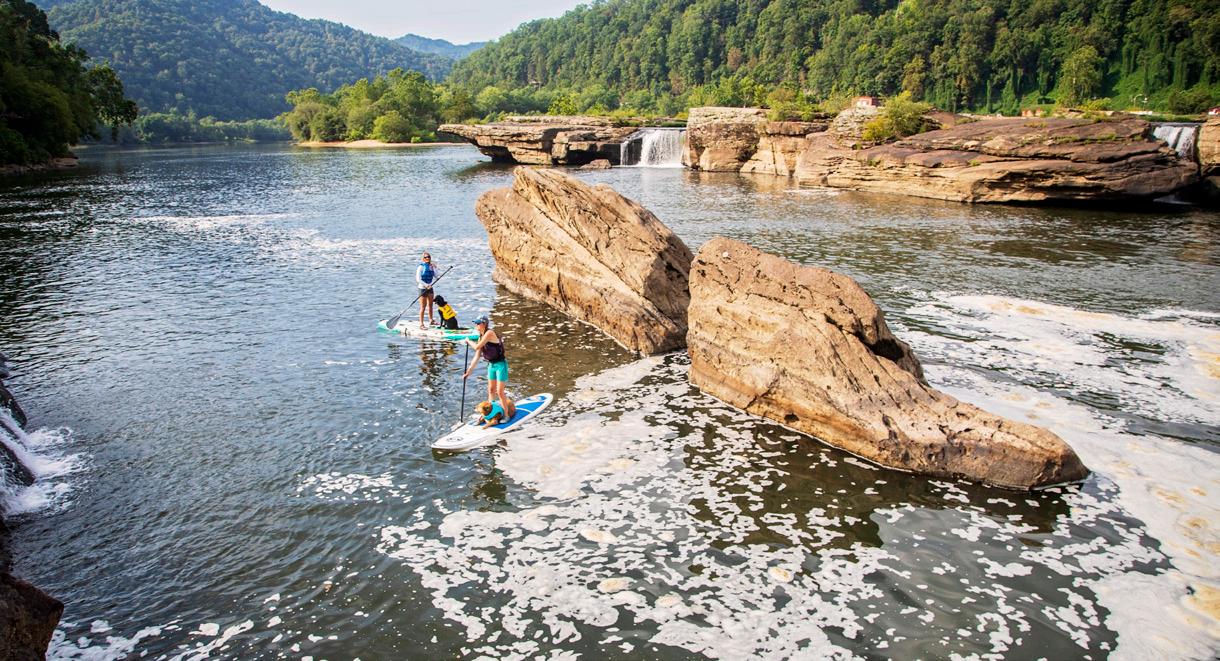
For a more relaxed paddling experience, head to the Broad River. Slow Water, a local outfitter, offers kayak and canoe rentals along scenic stretches featuring gentle Class I and II rapids—ideal for beginners, families, or anyone craving a peaceful float. If you’re looking to cool off without the river current, Victoria Bryant State Park features a seasonal swimming pool, peaceful streams, and stocked fishing ponds tucked into the rolling foothills.
Franklin County has everything you need for a full outdoor escape. C&E Marine in Lavonia offers boat and jet ski rentals, marine services, and storage on Lake Hartwell, while Slow Water provides canoe and kayak rentals with shuttle service on the scenic Broad River. Local shops in Lavonia, Royston, and Carnesville are great stops for snacks, gear, and gas!
The fun continues on land at Tugaloo and Victoria Bryant State Parks—offering hiking, biking, and more. Families can cool off at splash pads in Lavonia and Carnesville, and golfers can tee off at Highland Walk, one of North Georgia’s top courses. After your adventure, enjoy a local brew, mead, or a great meal at 211 Main Street in Lavonia.
Franklin-County.com
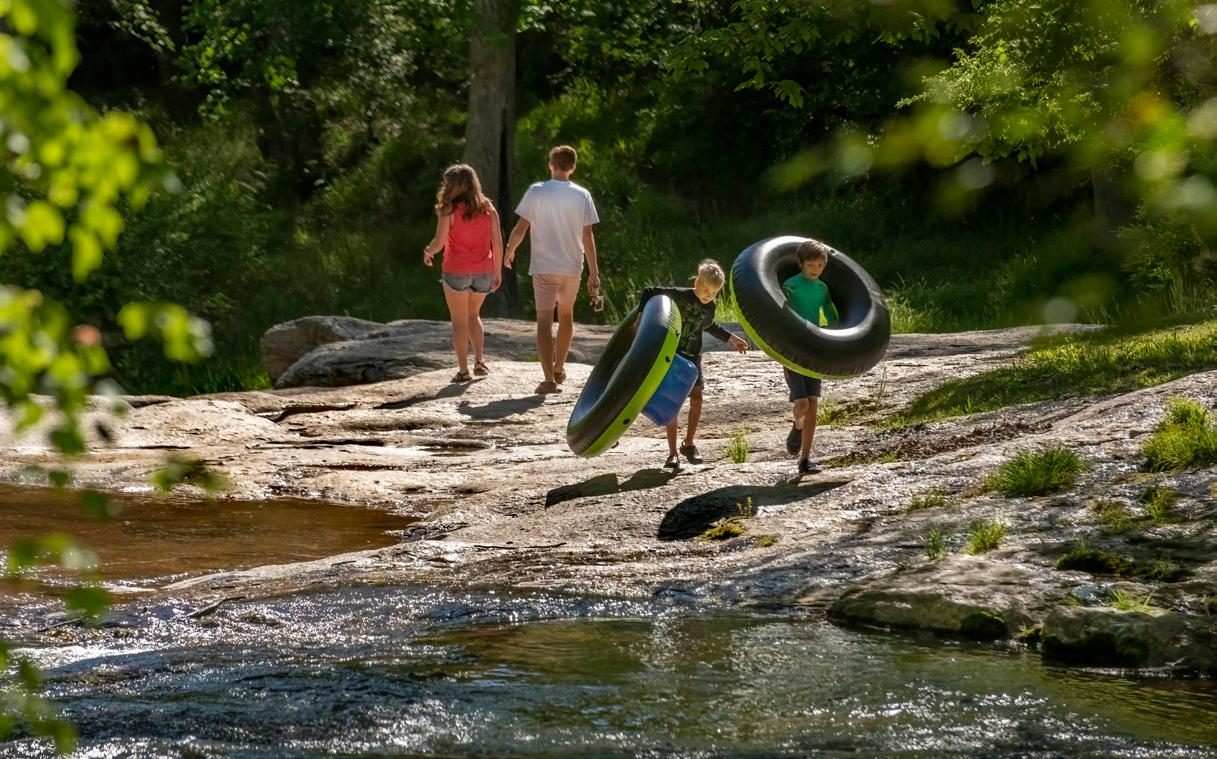
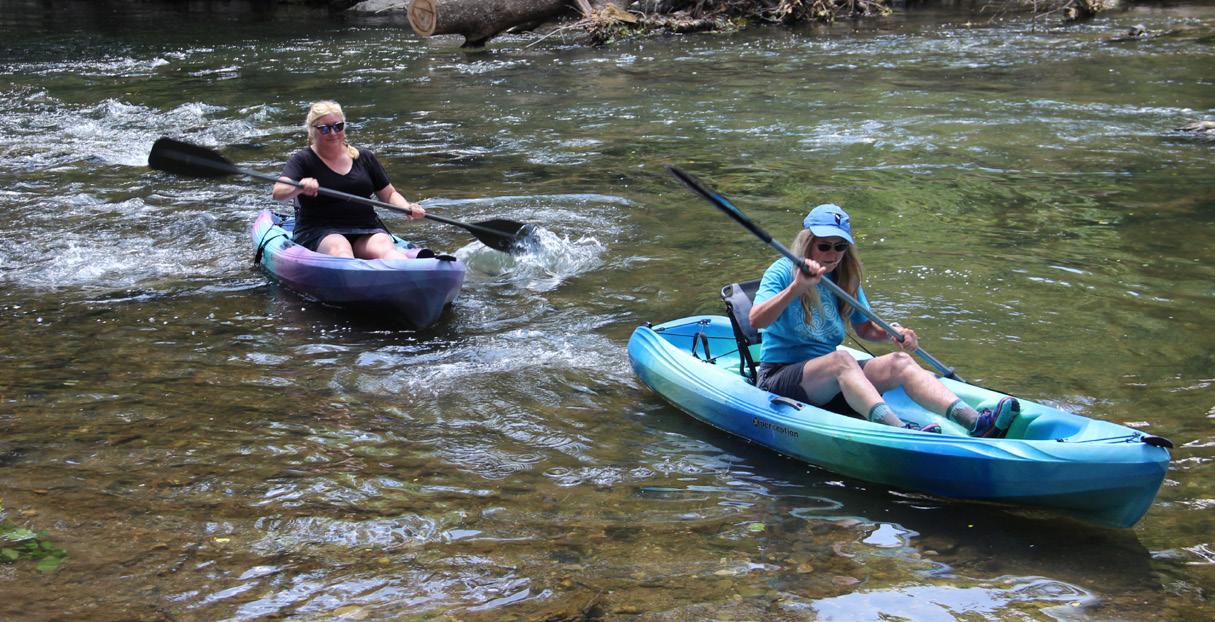

With two scenic rivers and plenty of lakes and creeks, Wythe County is a hidden gem for water lovers in Southwest Virginia. Whether you’re paddling the gentle bends of the New River, casting a line in Rural Retreat Lake, or cooling off in one of the area’s quiet swimming holes, there’s no shortage of ways to make a splash this summer.
Wythe County is home to a variety of waterways perfect for paddling, fishing, and relaxing on the water. The Reed Creek Blueway features two new portage parks—Kents Lane and Millers Creek—making it easier than ever for beginners, families, and anglers to explore this hidden gem. Nearby, Cripple Creek and Dry Run Creek offer great options for kayaking, canoeing, and fishing in a quiet, scenic setting. Rural Retreat Lake is another popular paddling destination, with family-friendly amenities like a campground, pool, and playground—though swimming isn’t allowed. For a broader water adventure, head to the New River at Foster Falls in New River Trail State Park, where tubing, kayaking, and boating are available for all skill levels amid rich historical surroundings.
While the area offers more relaxed water experiences, it’s just a short drive
to the more intense waters of Claytor Lake. For those looking to stay and play, Paddlers Creekside Campground along Reed Creek offers primitive camping along with kayak and tube rentals— perfect for a weekend on the water.
Wythe County offers great post-paddling options, from lodging at the Inn at Foster Falls to camping at Rural Retreat Lake Park, which features RV and tent sites, a heated pool, trails, and birdwatching. Explore nearby National Forest land, grab a coffee at Java Blend Café, or enjoy local drinks and live entertainment at West Wind Winery and 7 Dogs BrewPub
Family fun abounds with the Fort Chiswell Animal Park safari ride, scenic views and ice cream at Big Walker Lookout, and games at Ager Park’s ADA-accessible playground. For year-round events and hockey action, check out the Hitachi Energy Arena—home to the Blue Ridge Bobcats!
wytheco.org
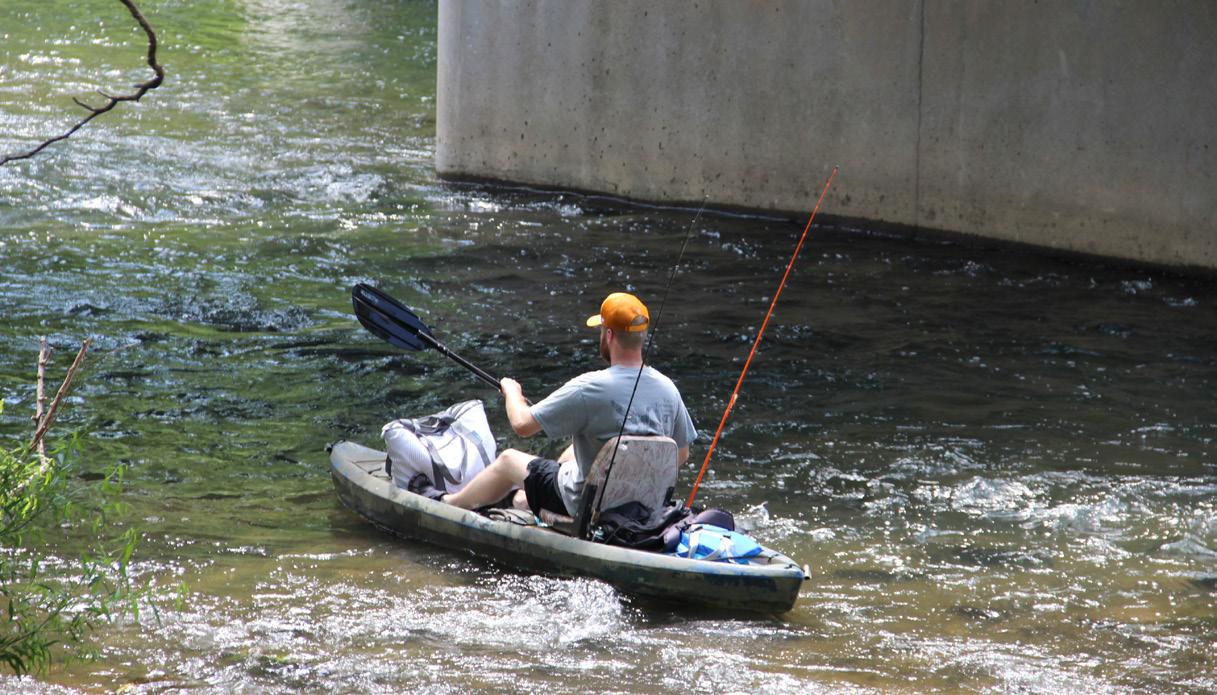
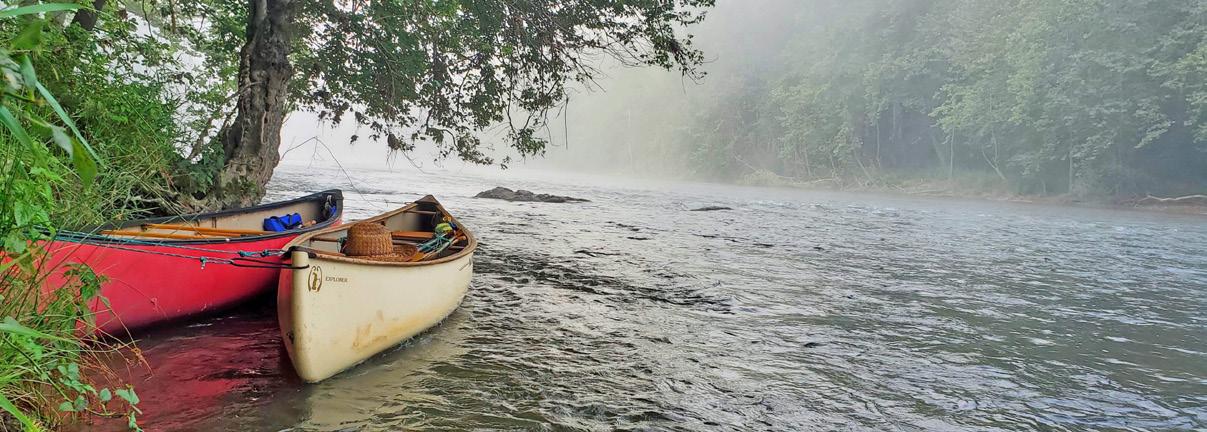
Located on the southwestern border of Virginia, Grayson County boasts 46 miles of the ancient New River and its many mountain tributaries, perfect for outdoor enthusiasts.
To help visitors plan their river adventure, the New River Float Calculator is a free tool offering detailed maps of boat launches, rapids, and obstacles, plus estimated float times, water levels, and safety tips. Seven boat launches span from Mouth of Wilson to Galax, making it easy to tailor your experience.
While river WiFi hotspots are out of commission following Hurricane Helene, temporary signs are posted at each launch with important information. Exercise caution and be aware of submerged debris as the river recovers. Or, join a River Clean-up to help restore the river to its natural glory!
Popular spots like Fries Riverside Park offer amenities for after your paddle—try the Caboose Cafe for ice cream or Fries Dam Steakhouse for a hearty meal. Enjoy live Appalachian music at the Historic Fries Theatre every Thursday or monthly concerts at the Depot.
August is Clean River Month —join locals and visitors to remove debris and restore the river. Organized by the New River Wildlife Conservation Club , New River Conservancy , and Grayson County Tourism , it’s a great way to give back. Explore fishing hotspots below Fries Dam, mountain trout streams, and riverside campgrounds for the ultimate river experience!
GraysonCountyVA.com
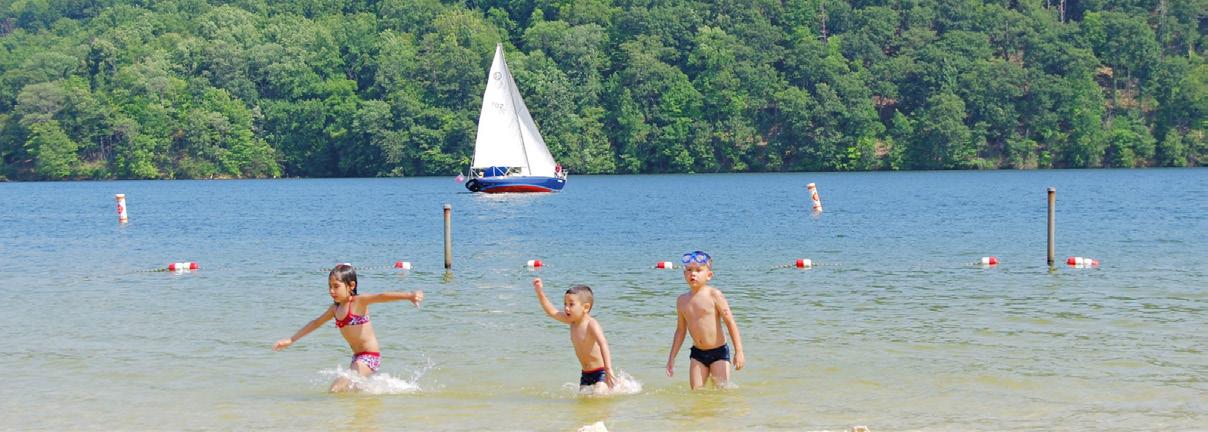
Explore the abundant water wonders of Pulaski County, offering refreshing swimming spots and tranquil paddling adventures.
Dive into relaxation at Claytor Lake State Park Beach Swimming Area or Harry DeHaven Park Swim Area, perfect for cooling off on hot summer days. For paddling enthusiasts, embark on scenic journeys with Mountain 2 Island at Rockhouse Marina and Gatewood Park. Families and beginners can enjoy leisurely paddling at Claytor Lake State Park or explore the family-friendly stretches of the New River
Highlighting local outfitters and partners like Mountain 2 Island, Claytor Lake Water Sports, Conrad Brothers Marina, and New River Sports ensures visitors have access to quality equipment and services. Additional
outdoor activities include hiking and biking along the New River Trail State Park and camping at Claytor Lake State Park and Gatewood Park. Take your furry friend with you, as Pulaski County is very pet-friendly. It is also an ideal destination for couples seeking a relaxing retreat!
Off the water, indulge in delicious dining options, and discover local gems like Thee Draper Village, wineries such as Iron Heart Winery and New River Vineyard and Winery, and the unique Salty Stash distillery. Don’t miss family-friendly attractions like Draper Community Park, Randolph Park, and the Wilderness Road Regional Museum In Pulaski County, the possibilities for fun on and off the water are endless, reflecting the community’s ethos to “Play Outside.” VisitPulaskiVA.org
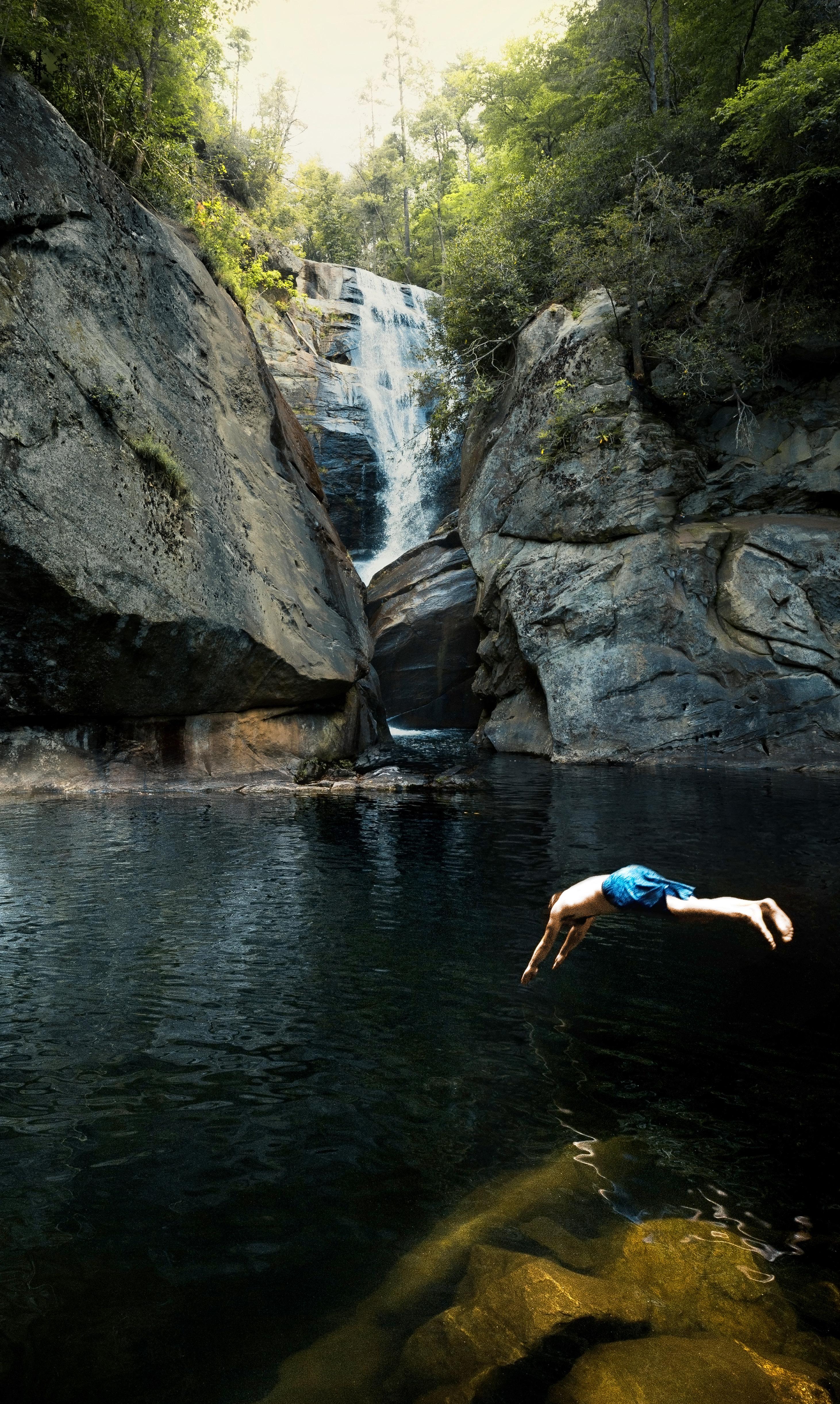
4 Must-Visit Waterfalls in the Blue Ridge (Plus, 4 Safety Tips for Your Next Adventure)
BY LAUREN STEPP
FROM ROARING GIANTS TO mossy trickles, the Blue Ridge is packed with waterfalls worth the hike (and the mosquito bites). Just in time for summer, we’ve rounded up four unforgettable cascades— plus expert tips to keep your adventure smart and safe.
At a whopping 729 feet, Amicalola Falls isn’t the least bit bashful. In fact, this cascade has earned quite a few superlatives over the years: tallest waterfall in Georgia, the third-highest east of the Mississippi, and hands-down the most Instagrammable in the Peach State.
Located in Amicalola Falls State Park near Dawsonville, this natural wonder is a stone’s throw from the southern terminus of the Appalachian Trail. To admire the cascade up close and personal, you can either take a short, scenic drive to the top or climb a 600step staircase. Either way, bring your camera.
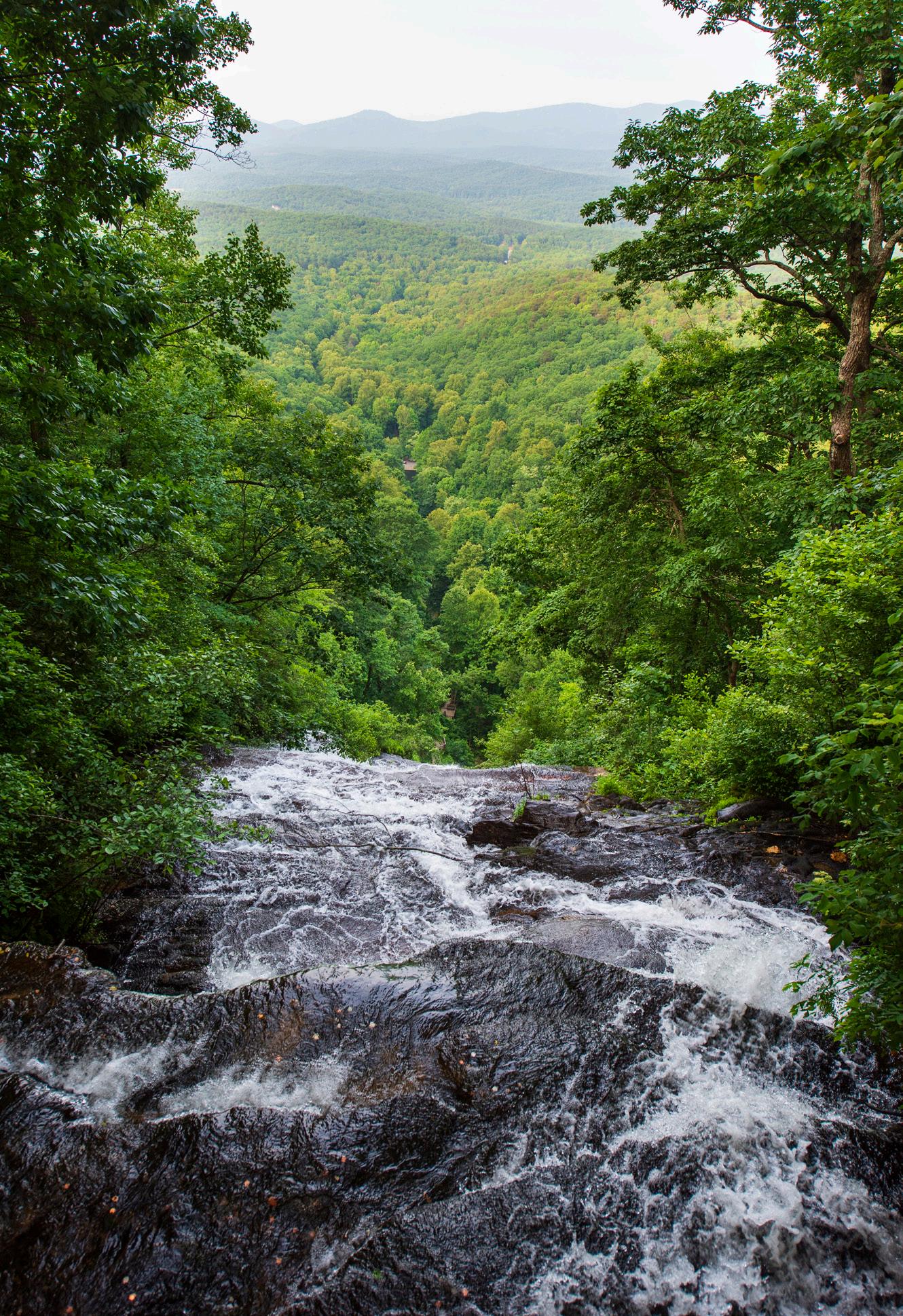
After your waterfall pilgrimage, recharge at The Blue Bicycle, a chef-owned and operated bistro in downtown Dawsonville. Order the North Carolina mountain trout with lemon and herb compound butter, wash it down with a whiskey, and then retire to Amicalola Falls Lodge.
If you’re willing to work for your waterfall, Paradise Falls is hiring.
Hidden deep in North Carolina’s Nantahala National Forest, this 100-foot waterfall marks the spot where Wolf Creek dives headfirst into a mossy slot canyon like it’s got something to prove.
While the hike to the base of the falls is only about half a mile, it packs a punch with gnarly roots, slick stream crossings, and a few steep scrambles aided by ropes. For
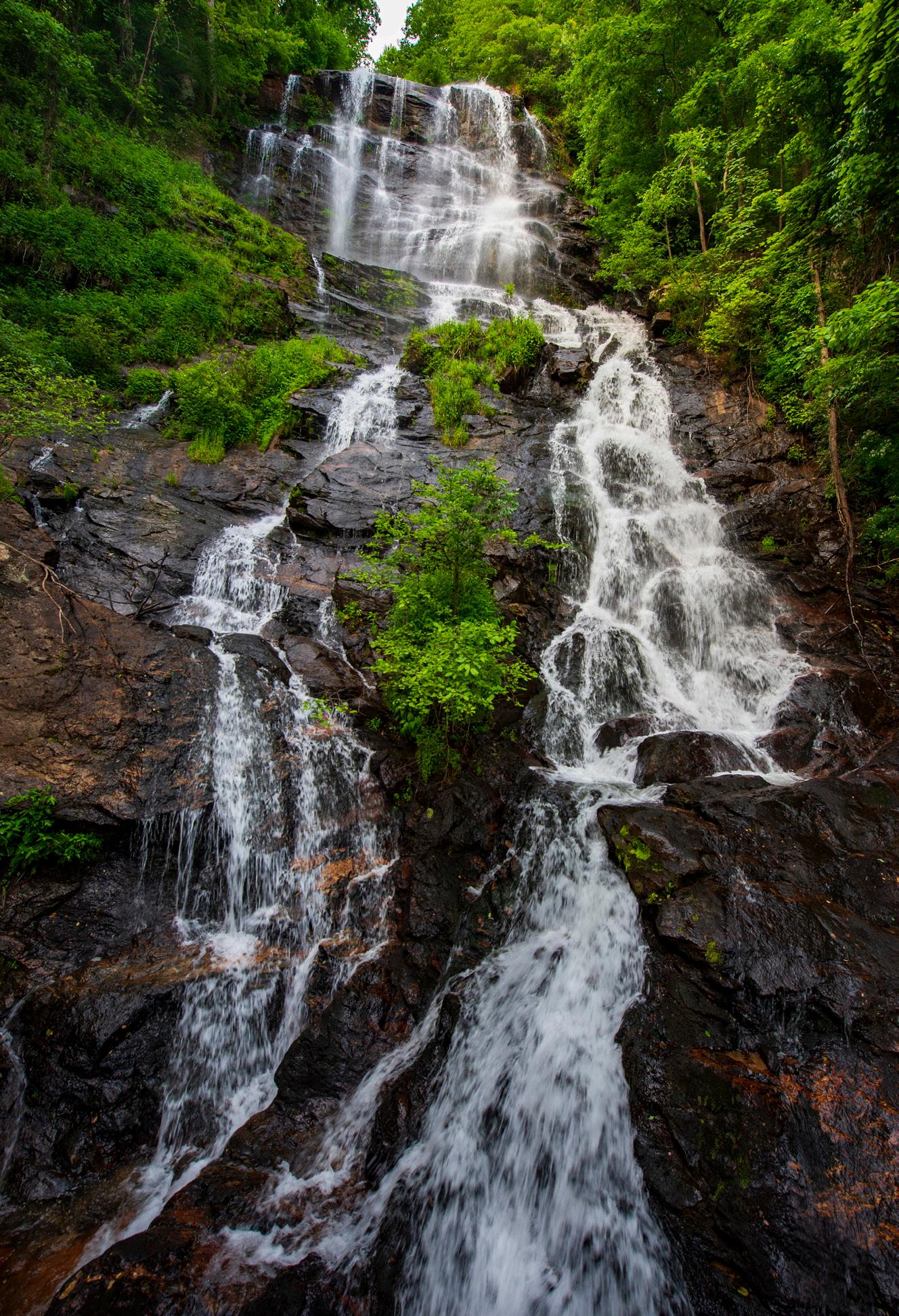
your troubles, you’ll be rewarded with a jaw-dropping swimming hole that’s great for mid-summer dips.
Once you've wrung the wild out of your system, head to nearby Cashiers for a well-earned refuel.
Grab a smash burger and local IPA at Whiteside Brewing Company and finish the day with a scoop at Crossroads Custard.
If you’re looking for some waterfall wow factor without the uphill slog, Kanawha Falls is the perfect pit stop.
Fed by the eponymous Kanawha River in Gauley Bridge, W.Va., this Mountain State stunner tumbles wide and wild over a 15-foot-tall sandstone ledge. To access the cascade, hop off scenic Route 60 at the historic hydroelectric plant (constructed in the late 1800s). From there, a short, flat walkway leads
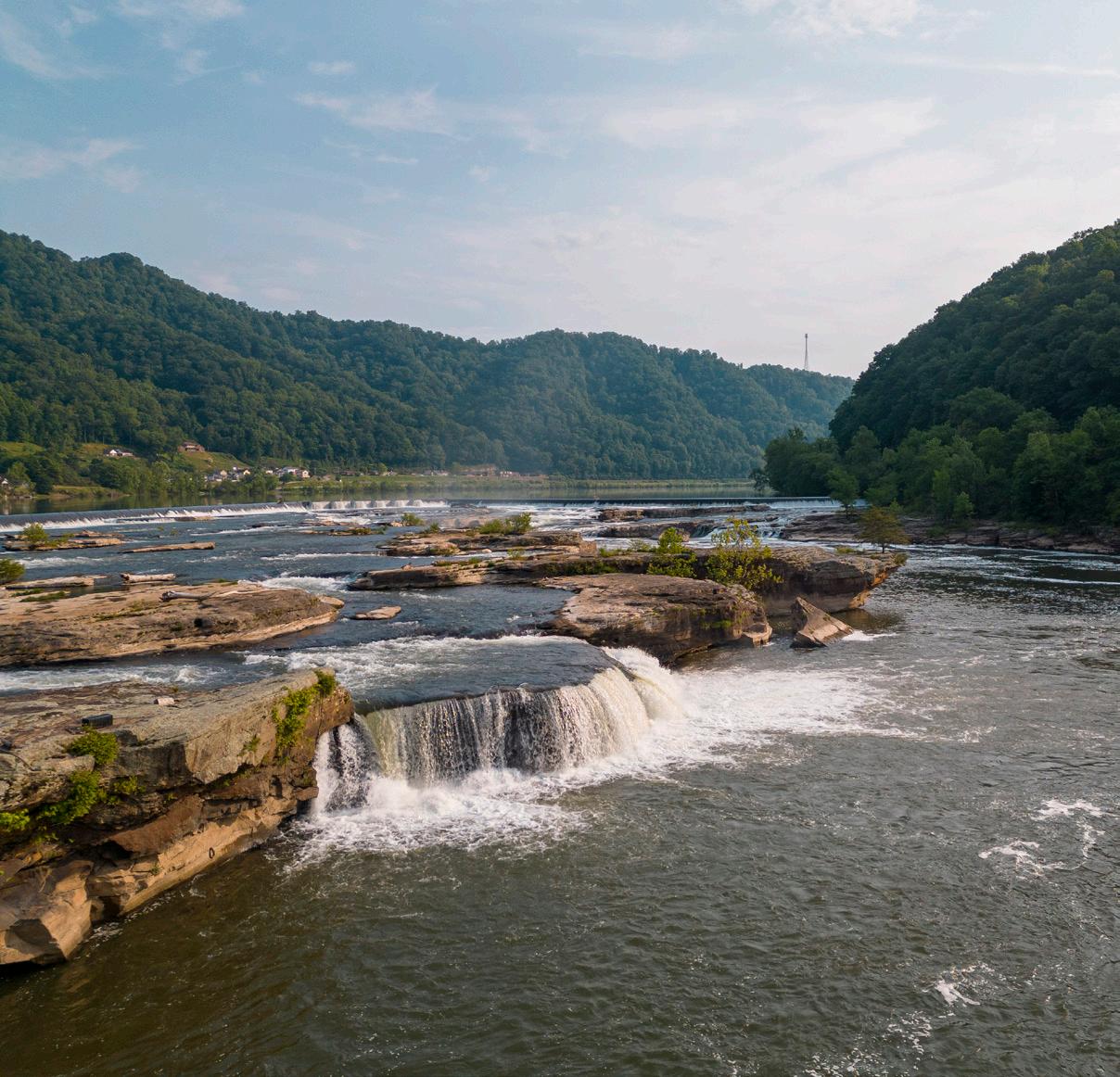
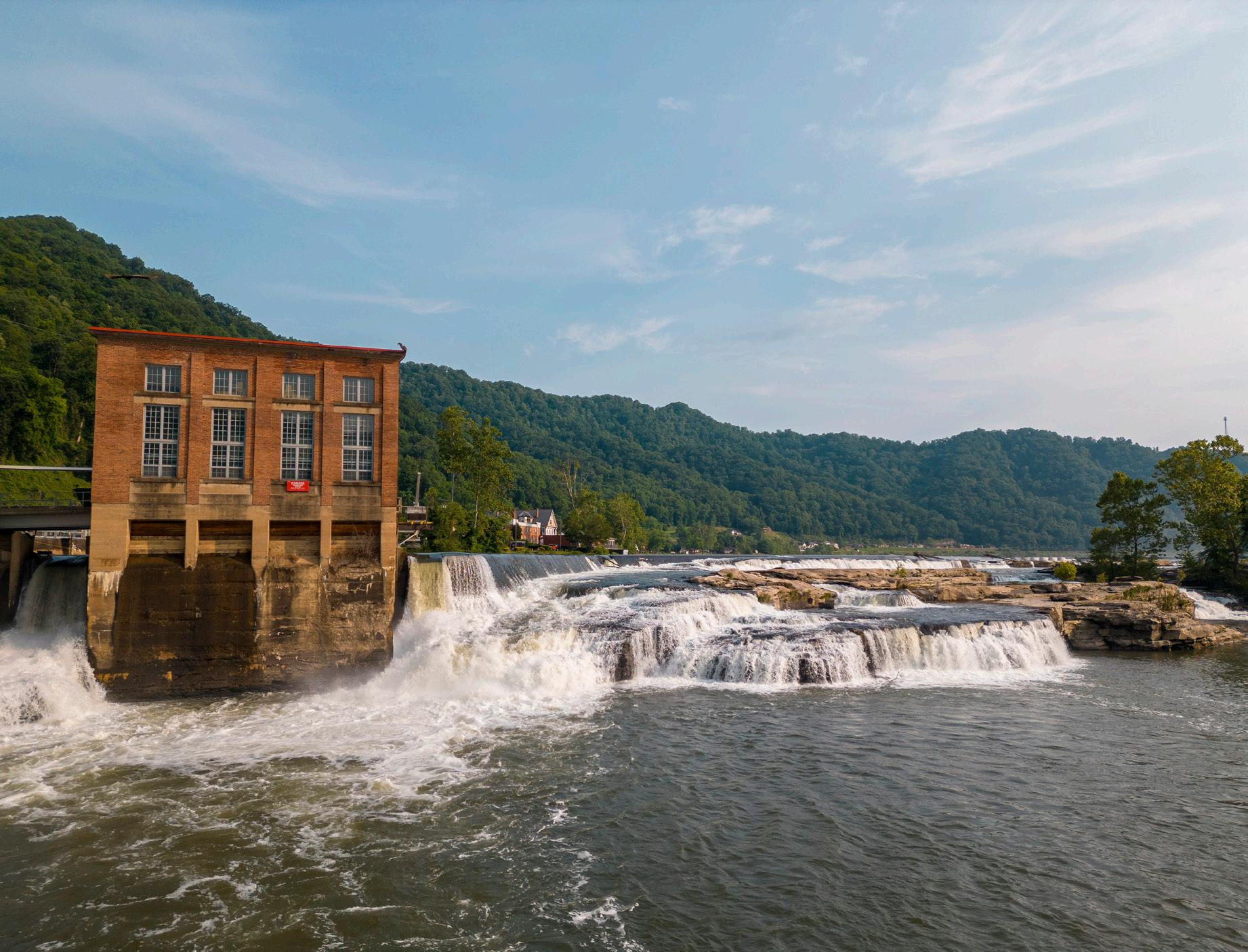
straight to the falls. After soaking up the views, launch a kayak from the public boat ramp and spend the day angling for smallmouth bass, flathead catfish, or freshwater drum. Finish with a downhome dinner at The Glen Ferris Inn. (Local tip: Order the blackberry cobbler for dessert.)
Jones Gap Falls isn’t the tallest or most thunderous cascade on this list. But it just might be the most serene.
Tucked along the Middle Saluda River in Upstate South Carolina, this 50-foot waterfall is accessible via a moderate, three-mile out-and-back trail. The path winds through dense rhododendron thickets, crosses the river several times, and offers glimpses of rugged cliffs before arriving at a short spur trail that
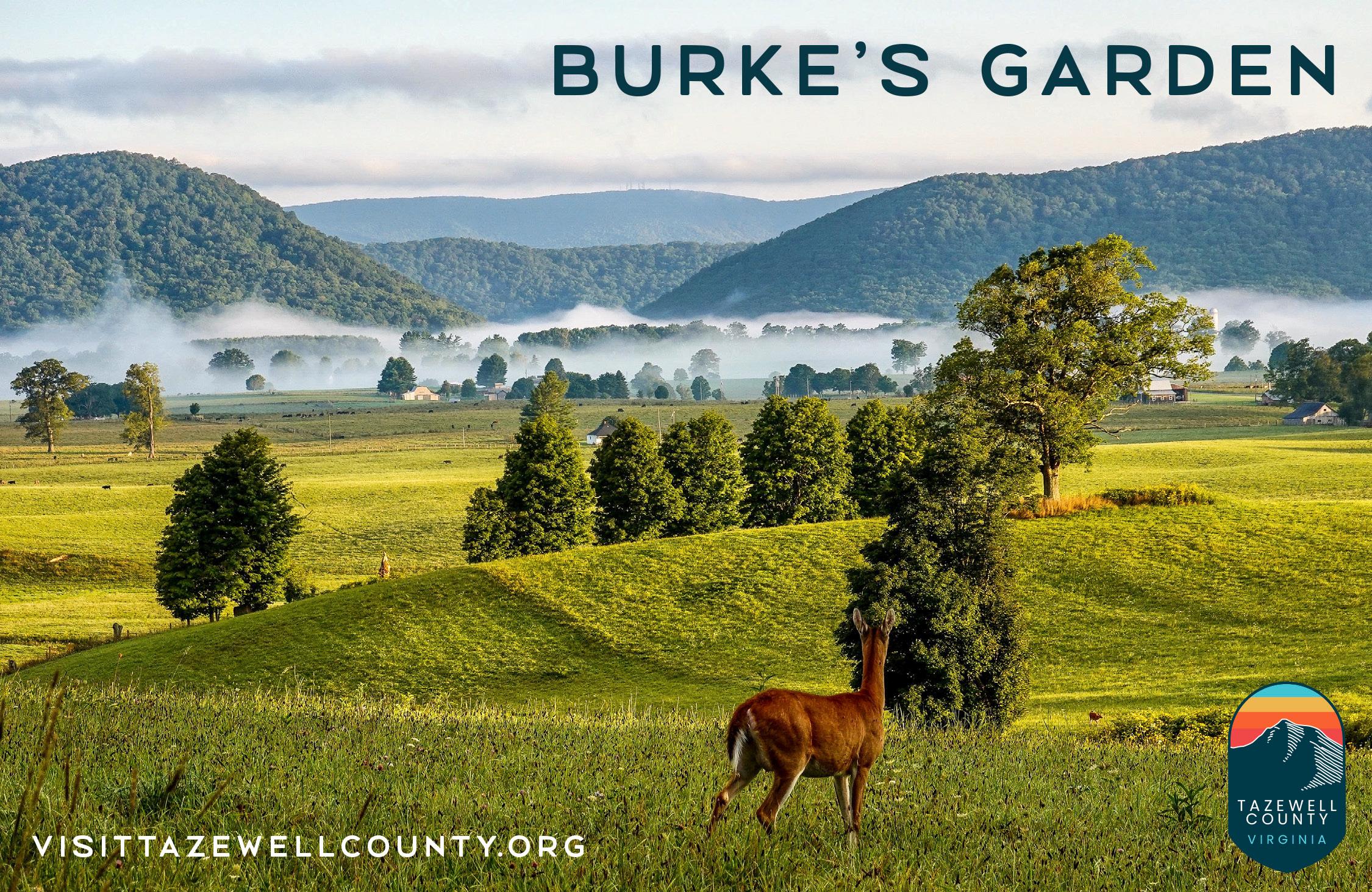



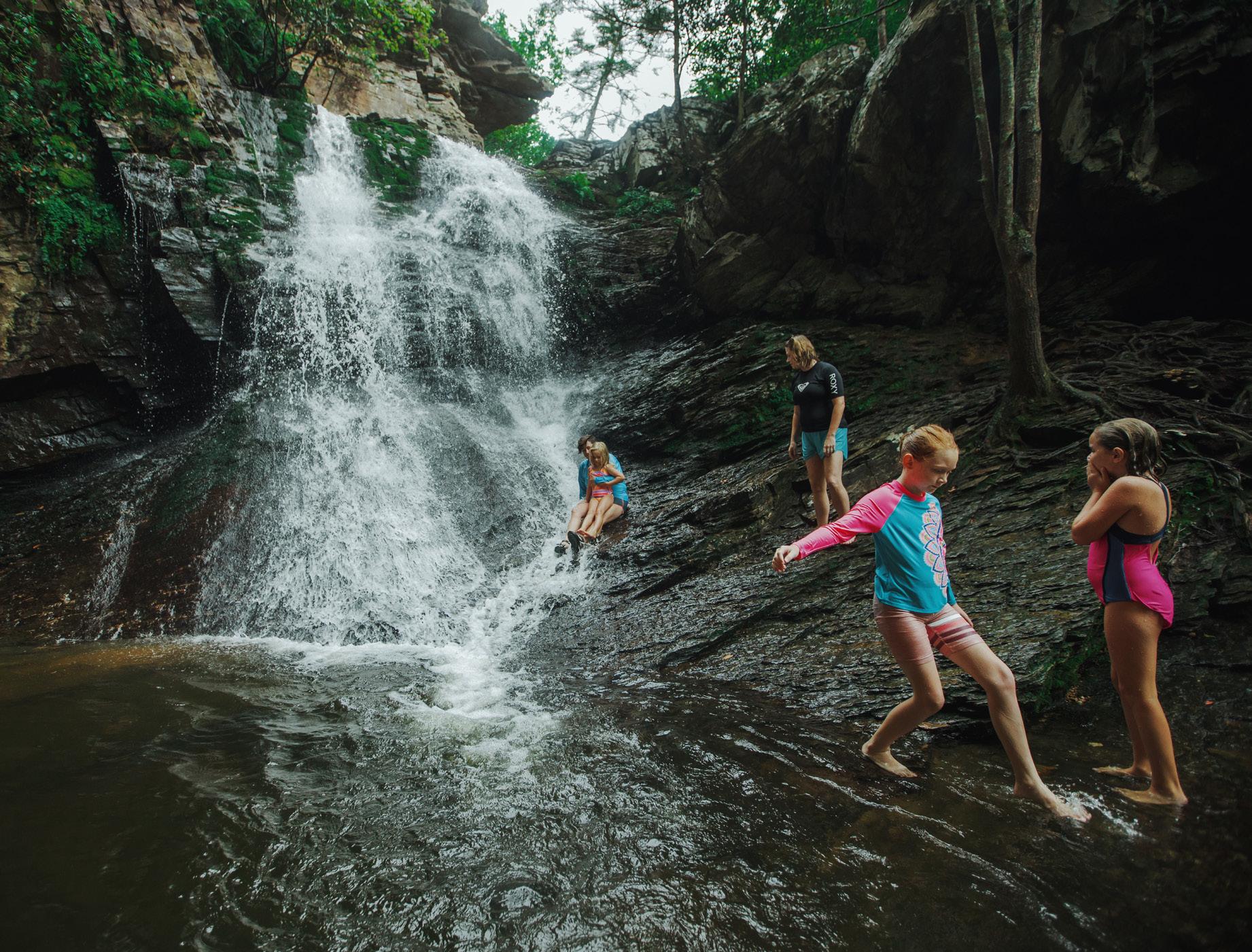
leads to the falls.
Upon arrival, you’ll find a steady stream tumbling over an impressive granite face. While there’s no plunge-worthy swimming hole, it’s a good spot to read a few pages and eat a granola bar before trekking back to the parking lot.
If you’re headed south on your way home, bookend your adventures with a PBCB (peanut butter chocolate banana) smoothie at Swamp Rabbit Cafe and Grocery in Greenville. If you’re headed north, grab a roast beef and cheddar toastie at Cedar Mountain Outpost in Brevard, N.C.
With slick rocks and steep drops, waterfalls demand respect. Here’s what the experts want you to know before you go.
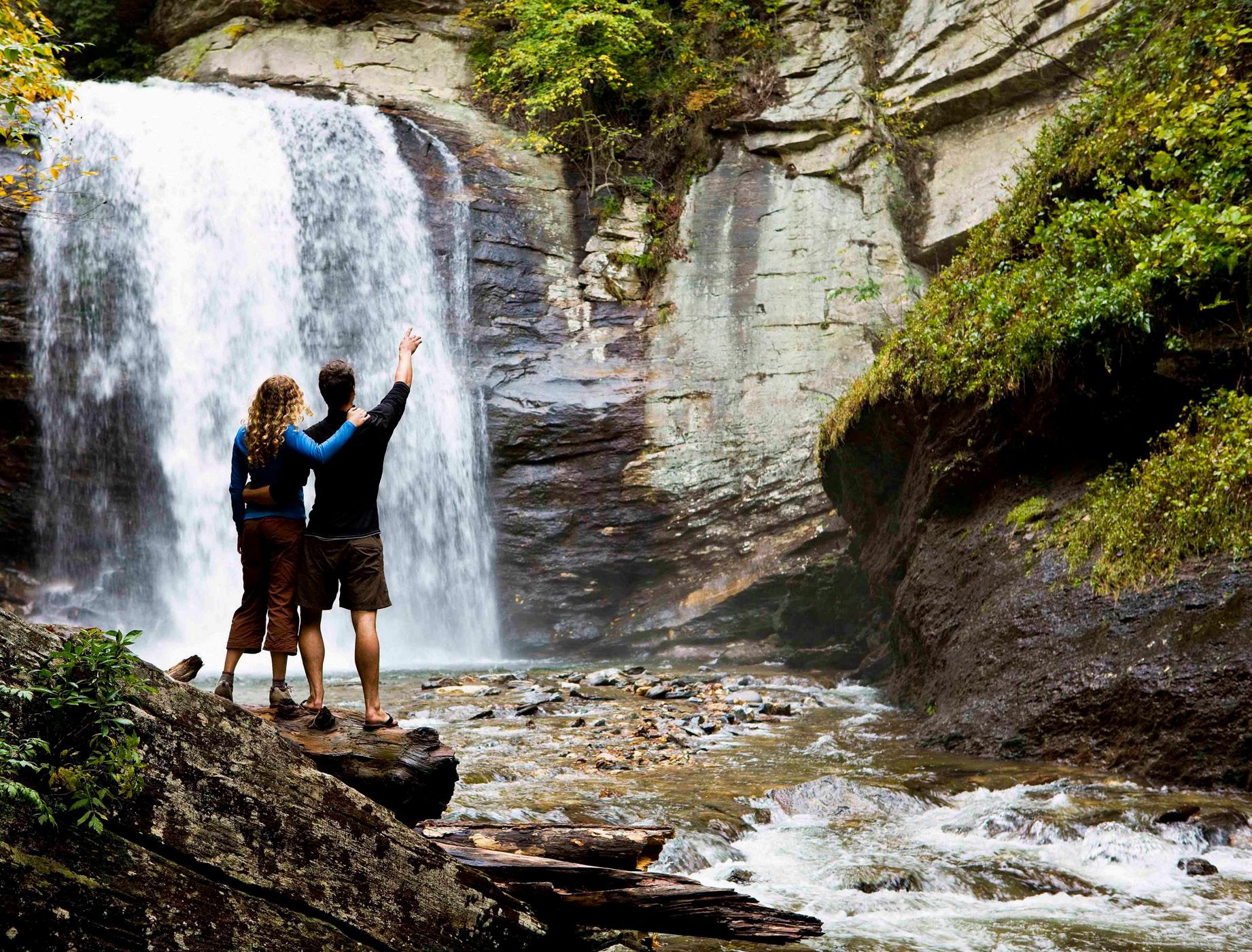
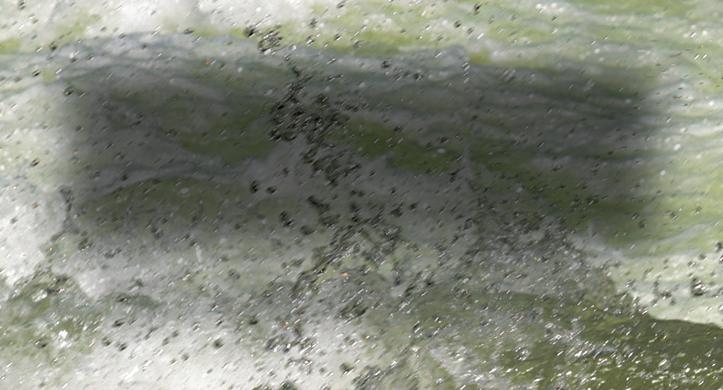

1. Keep a Safe Distance
Sure, the view from above a towering waterfall might make for an epic photo. But no selfie is worth your life.
“Do not walk in a creek right above a waterfall unless safely roped in,” warns Joe Moerschbaecher of Pura Vida Adventures, an outdoor guide company based in Brevard, N.C. “The combination of cliffs, water, and wet rocks can create an extremely unforgiving and dangerous environment to the unaware or overconfident.”
2. Respect the Slickness
The rocks below a cascade can be treacherous, too.
“In our region, fungi and mold grow in these wet environments,
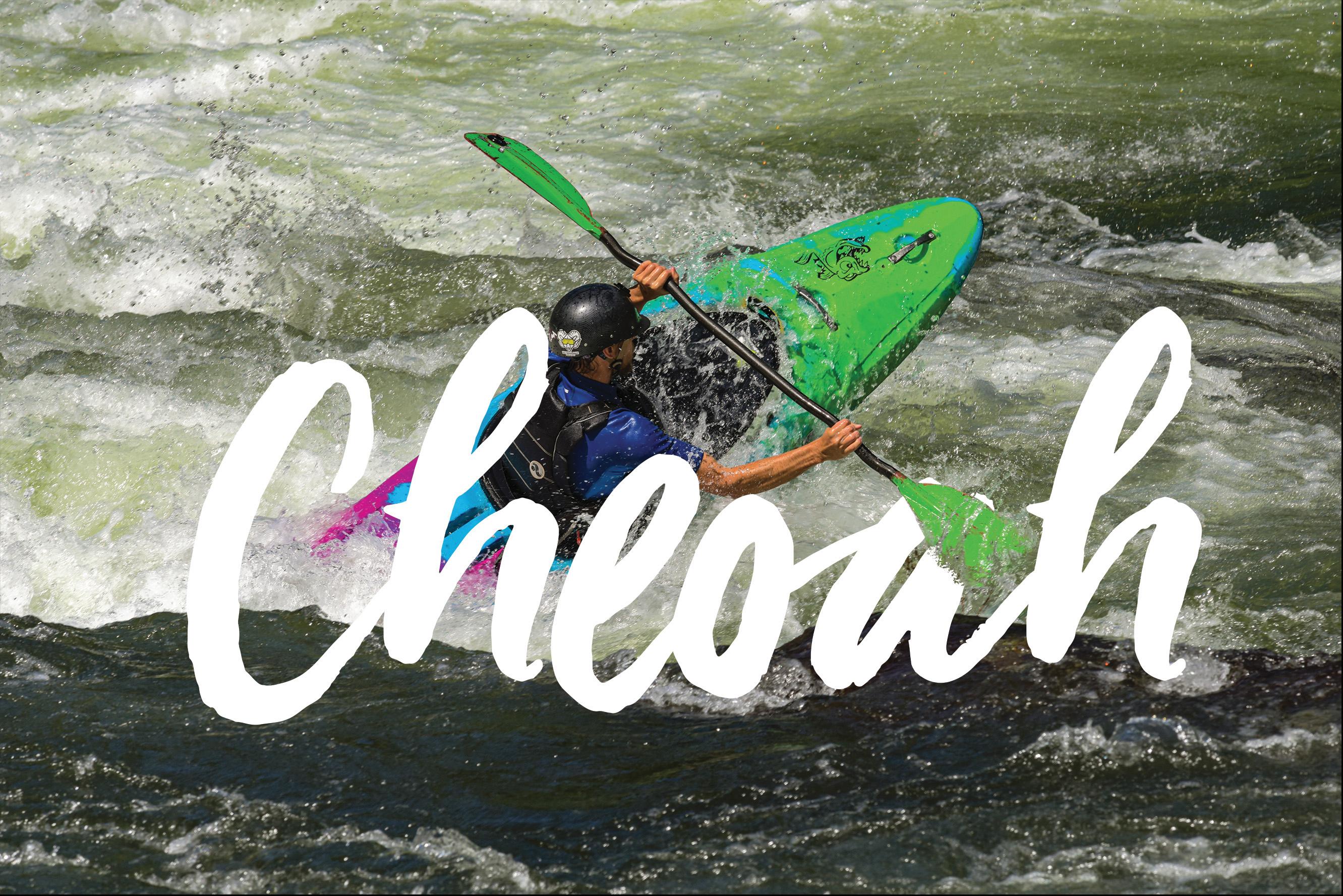
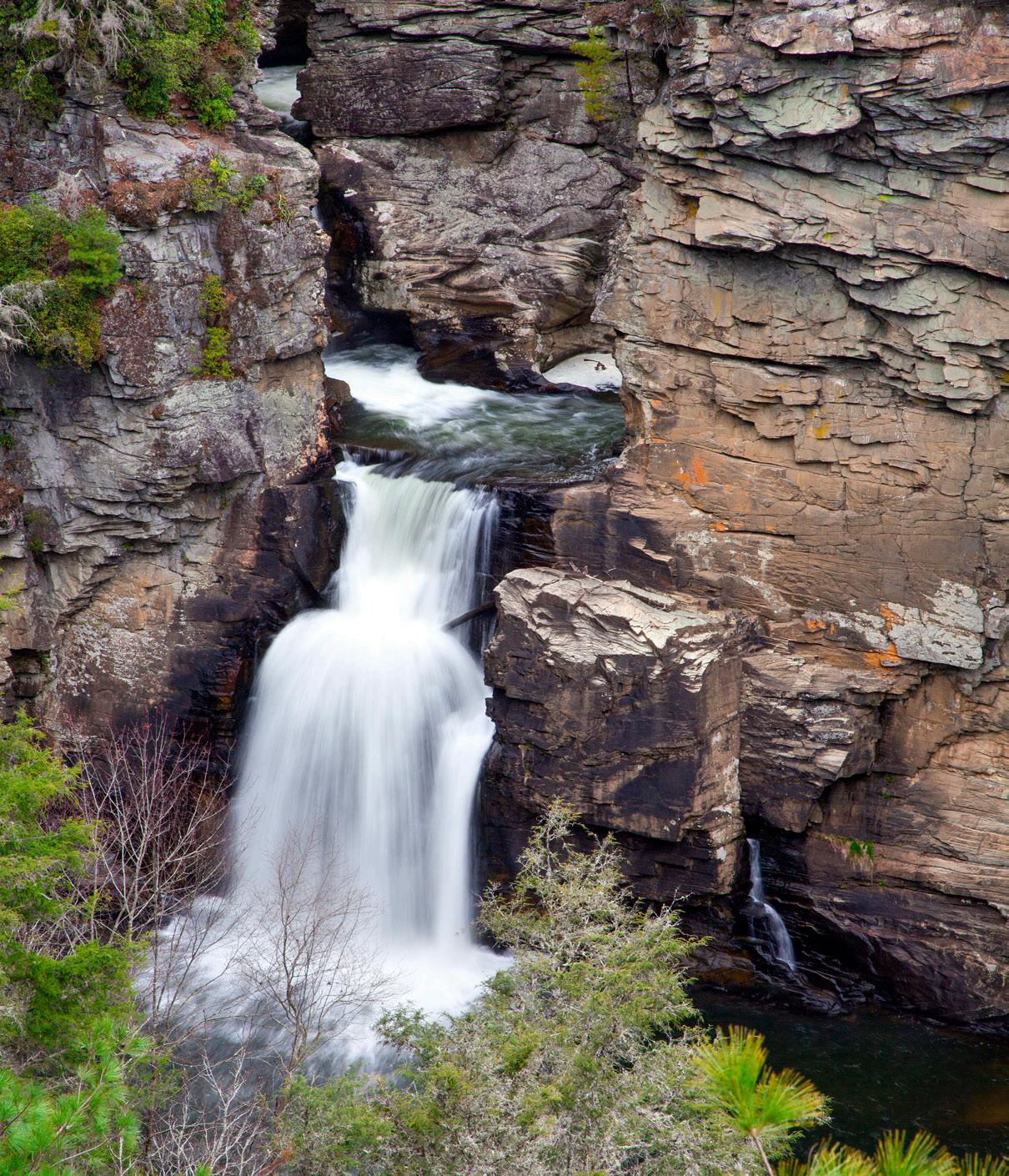
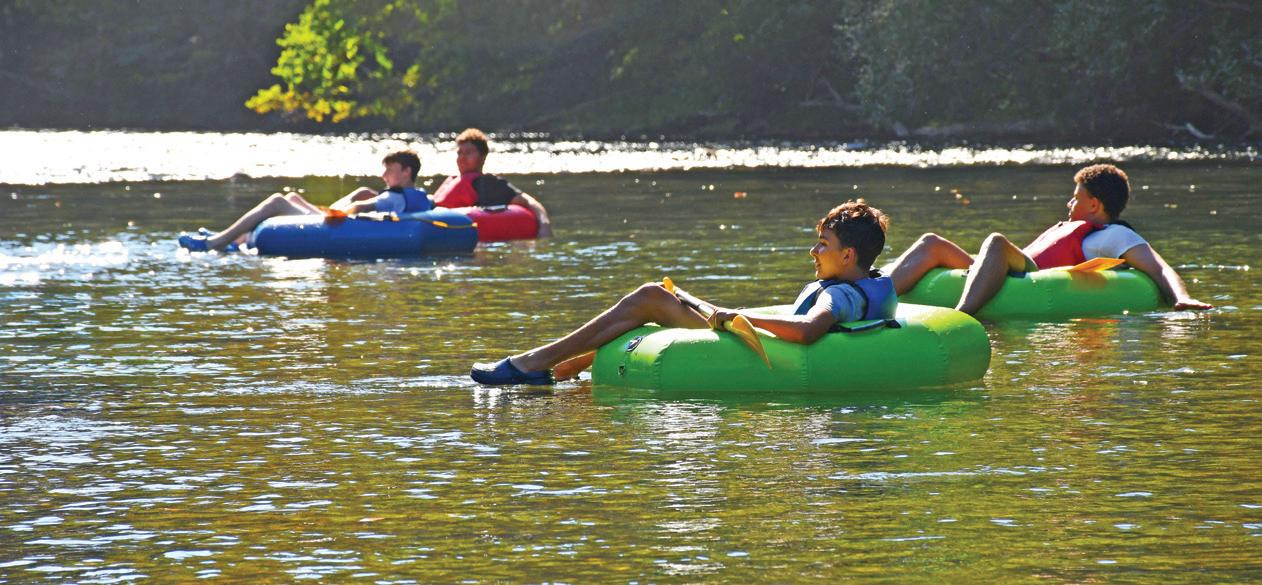

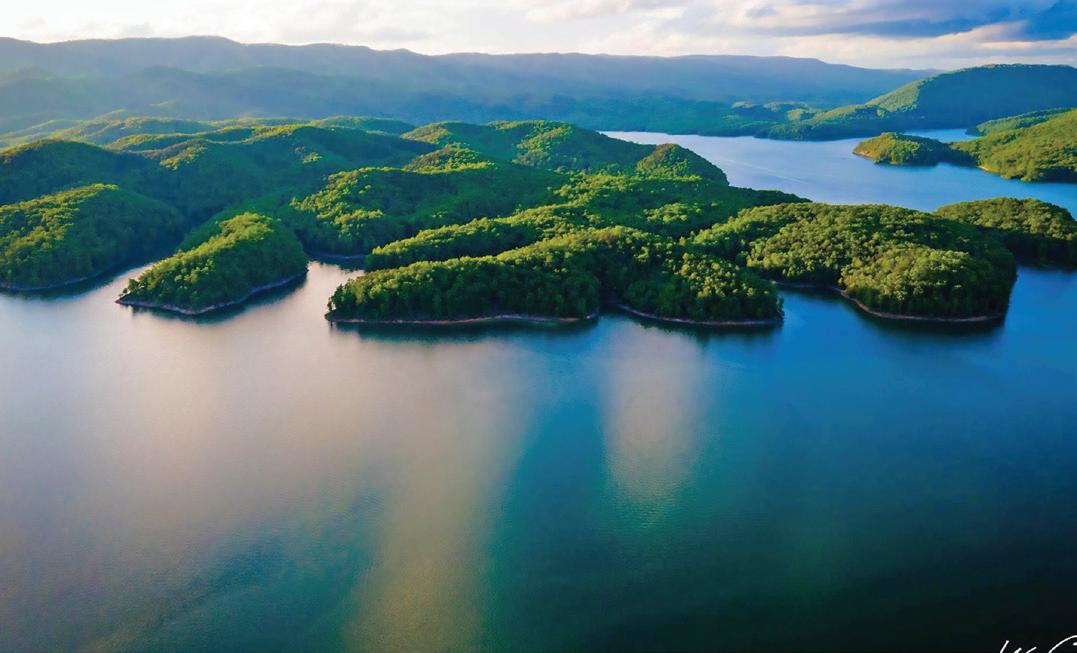
creating slippery conditions, often akin to skating on ice,” says Vesna Plakanis of A Walk in the Woods, a naturalist guide in the Great Smoky Mountains of Tennessee. “Sadly, these slippery conditions contribute to injuries and fatalities each year.” Protect yourself by wearing shoes with nonslip soles. (Sandals and flip-flops won’t cut it.) You may also consider bringing trekking poles for extra stability.
3. Prepare for a Challenge There’s no denying the allure of a waterfall—the mist on your face, the roar in your ears, the cooling water on your feet. But getting there isn’t always easy.
“The [hike] might be two miles one way,” says Plakanis, “but mountain miles are very different from city miles.”
That said, know your limits. Only take on trails that match your fitness level, give yourself plenty of daylight for the trip, and bring the essentials (think water, snacks, layers, and rain gear).
4. Know Your Route
Not all waterfall trails are well-marked, and a missed turn can quickly devolve into a dangerous detour.
“Plan ahead,” says Moerschbaecher. “Make sure you know the trail and how to safely navigate the trail to the base of the waterfall.”
Before you venture into the forest, research your route and download a map to your phone (better yet, bring a paper one). Pay attention to signage and stick to established trails, both for your safety and to prevent damaging fragile ecosystems.



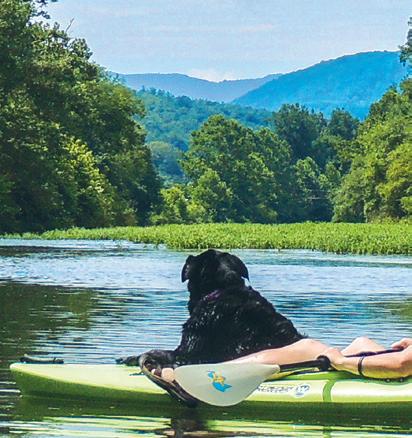
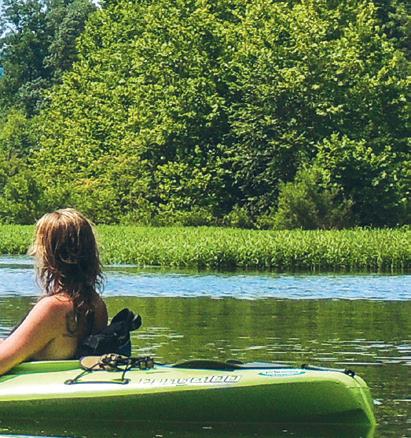




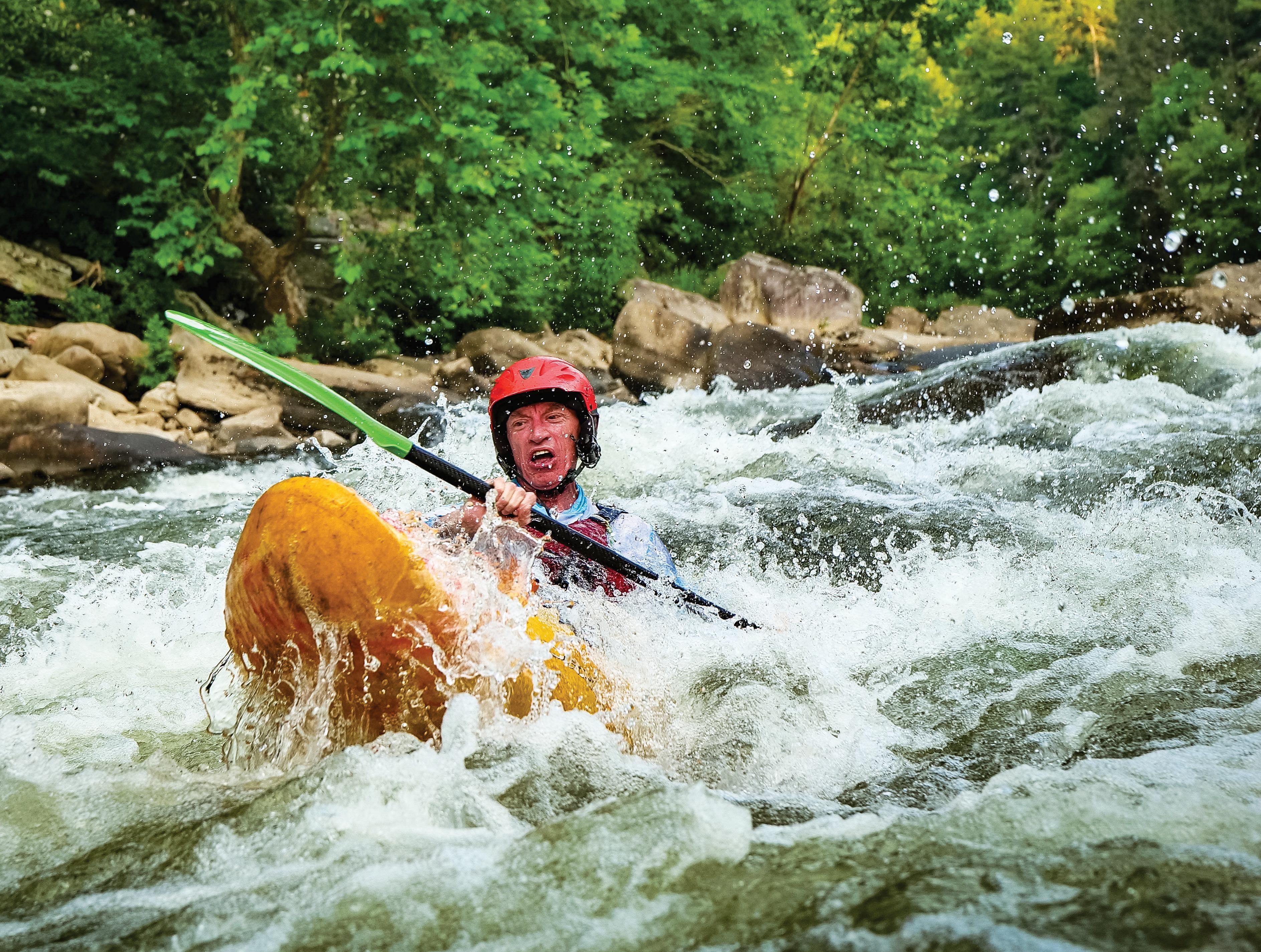
In Pennsylvania’s Laurel Highlands, “out of office” means outdoors, cool waters, and mountain air. Raft the “Yough”, brave a natural slide, and hike rugged trails through breathtaking landscapes that lead to spectacular waterfalls -- all not far off of the Great Allegheny Passage. Squeeze every last drop of excitement out of a long weekend soaked in adventure! Dry off, wind down and settle in for a restful night in a cozy cabin, treehouse, glamping site, or luxury resort.
Go with the flow! Ditch the inbox and dive into your ideal escape in Pennsylvania’s Laurel Highlands! golaurelhighlands.com

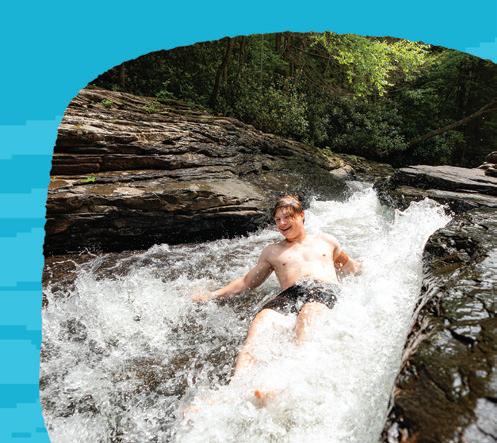


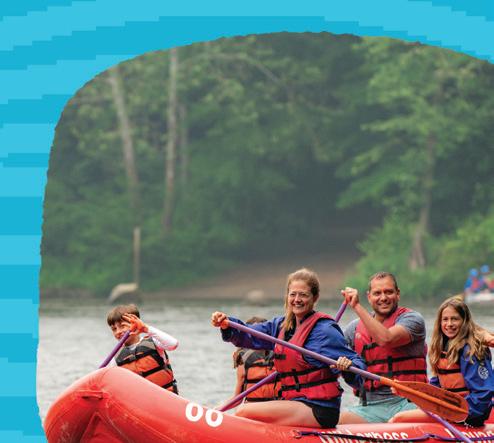


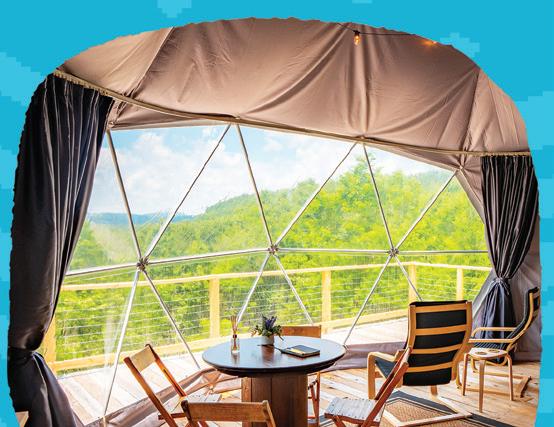



BY MIKE BEZEMEK
After a self-supported trip on a rugged Southern river, an adventurer reveals tips and best practices for overnight kayaking and rafting trips
AFTER DRIVING FOR HOURS

INTO the night, each of us coming from different parts of the country, my buddy Curtis and I awoke in the hard beds of our pickup trucks. Without cell service, we weren’t even sure which state we were in—Tennessee or Kentucky. It was a cold morning in mid-March, and we already felt sore before we’d even started kayaking the Big South Fork of the Cumberland River.
“What the hell?” said Curtis.
While stretching our legs in the fog-filled parking lot, we realized we
were surrounded by unimpressed people with empty stares. Luckily, this wasn’t some anti-paddler cult, just an outdoor mining museum filled with creepy cutouts of 1940s residents. We were at the wooded Blue Heron river access—on the Kentucky side, I checked, of Big South Fork National River and Recreation Area—about to run shuttle for a 34-mile river trip.
There was a time when Curtis and I traveled around the country to kayak and raft whitewater rivers through mountains and desert
canyons. Between us, we had paddled dozens of overnights. Some were easier or harder than this one, and some trips lasted several weeks. Then family and work responsibilities got in the way. After an unexpected break lasting five years, we were finally resuming our multiday whitewater adventures. Cue the rusty mistakes and hardknock lessons. For example, despite talking a big game about practicepacking at home, both of us had arrived without having paddled our fully loaded boats. A classic error
that I’d come to regret soon enough.
There’s something particularly exciting about multiday paddling trips. You leave the developed world behind and probe deeply into backcountry waters. Since learning to paddle can be challenging enough, it’s best to feel confident on the water before you embark on your first self-guided overnight. Alternatively, joining a guided multiday raft, kayak, or canoe trip
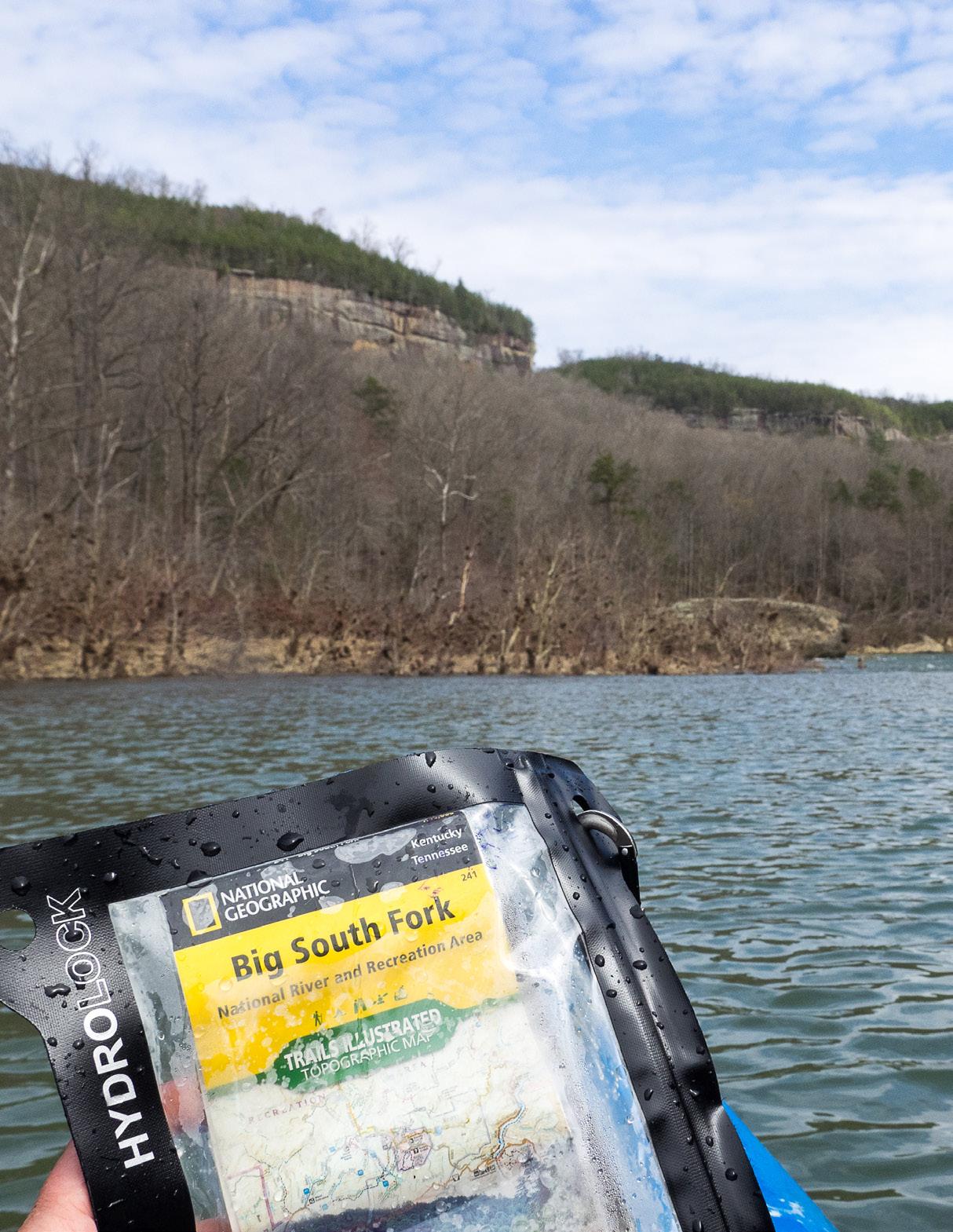
can be a good way to start, helping you learn the skills for future DIY adventures.
In general, rafts hold the most gear, food, and people. When fully loaded, these massive beasts are typically rowed with oars. Rafts are particularly popular for longdistance river trips, especially whitewater classics out west. Many kayakers love to have raft support for obvious reasons. They get their gear and beer hauled down the river, which is the closest a dirtbag kayaker will ever feel to royalty.
Rafting multidays are somewhat like car-camping road trips down a river, while self-support kayaking or canoeing is like backpacking out of a boat. That said, canoes are not too far behind rafts in terms of storage capacity. They’re more common on flatwater and easy whitewater, up to class II, though skilled paddlers will take them on harder whitewater. Meanwhile, decked kayaks are great for self-support whitewater trips but can also be used for flatwater. Regardless of your watercraft choice, overnights make for

heavy boats that are harder to maneuver, meaning you’ll want to be an experienced paddler in good physical condition. Even if you’re comfortable with whitewater rapids, it’s often a good idea to plan your first overnight at an easier river or lake. You can ease into controlling a heavier boat before progressing to harder waters.
Recognizing this, Curtis and I did a two-day trip with friends last summer on the remote Eleven Point, a national scenic river in the Missouri Ozarks. The 19-mile section from Greer Crossing to Riverton is one of the best class I-II overnights in the country. The banks are lined with lush hardwood forests and limestone bluffs. The current is swift with frequent riffles, and numerous springs keep the river running year-round.
From the gravel lot at the end of John Long Rd, Curtis and I dragged our loaded kayaks down a steep
quarter-mile trail to the confluence of New River and Clear Fork, where the Big South Fork starts. This is one of my favorite NPS units in the Southeast, with nearly 200 square miles of semi-wilderness on the Cumberland Plateau. There are dense forests, natural stone arches, and rugged trails for hiking and biking. Sandstone cliffs line a remote river gorge with whitewater rapids and long flatwater stretches. Most of the camping is primitive and there’s limited road access.
Planning is a big part of multiday paddling trips. Today was turning into a warm sunny day, but the water would be chilly, and the coming days were forecast to become colder with possible rain. So we decided to wear full drysuits, which protect paddlers from shifting weather and cold-water immersion. To avoid overheating, we wore hiking clothes while transporting our boats. Then we returned to the shuttle vehicle to change and retrieve PFDs and helmets.
“How’s my trim line?” I asked when we pushed off into the current.
“You’re sitting low, but at least your bow’s down,” replied Curtis.
A loaded kayak that floats evenly or minorly front-weighted is often best. With a stern-heavy boat, you’ll catch edges on the back-deck, which can flip you over. Thus, I’d packed some heavier items like a backpacking chair, camp fuel, and extra drinking water into a bowbag in front of my feet. That way, I’d hopefully plow over the tops of waves and holes.
Despite this, my kayak still felt over-loaded, uncomfortably tight, and somewhat imbalanced from side to side. In the past, I’d mostly used my long boat for summer overnights when minimal gear was needed. I’d been meaning to upgrade to a larger size with more volume, and a higher weight capacity for colder seasons, but never did. Luckily, most of the class III-IV whitewater comes in the uppermost seven-mile section, when we’d hopefully be fresh enough to muscle through.
After nearly a mile of read-andrun class II+, I was feeling confident when we reached the “big three.”
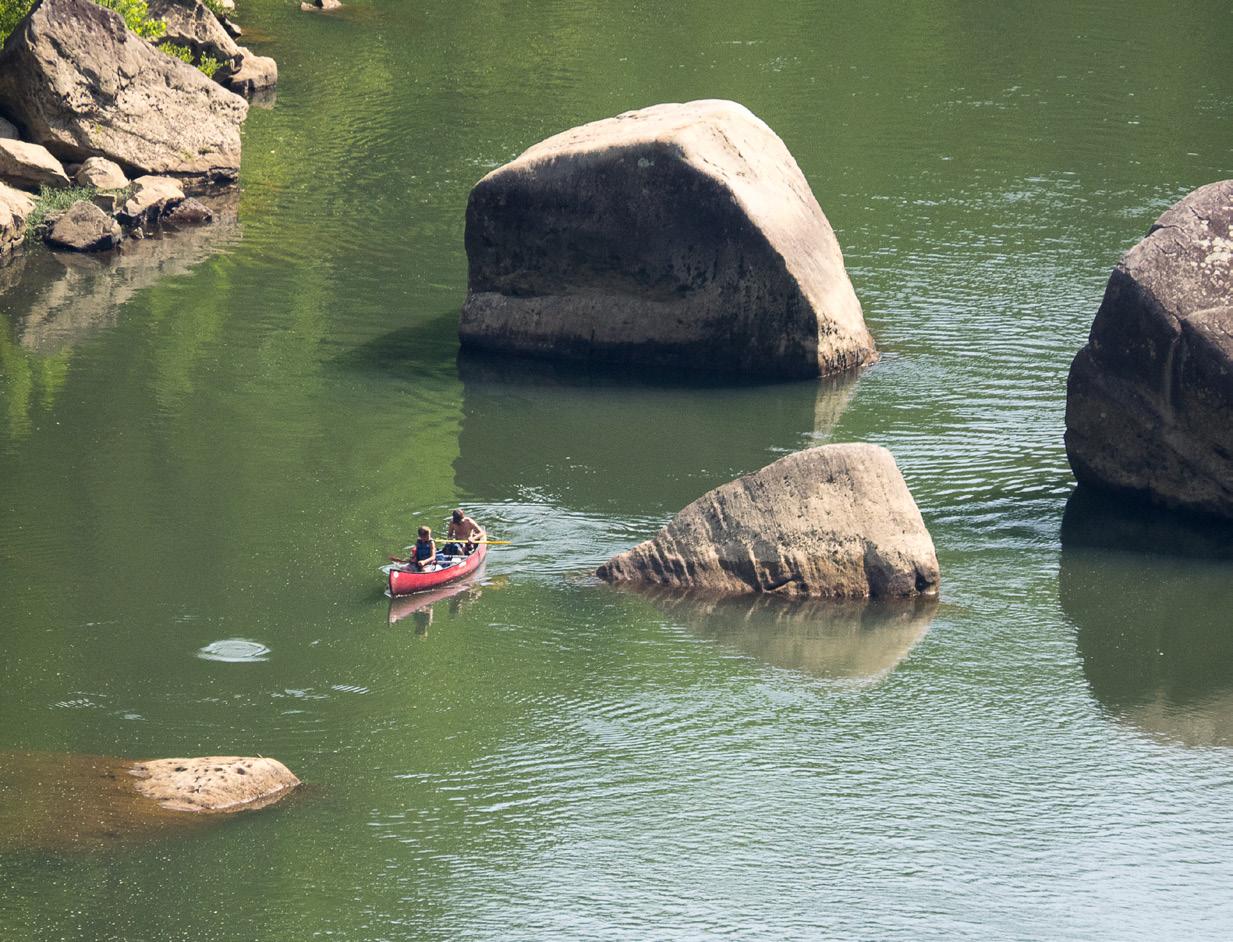
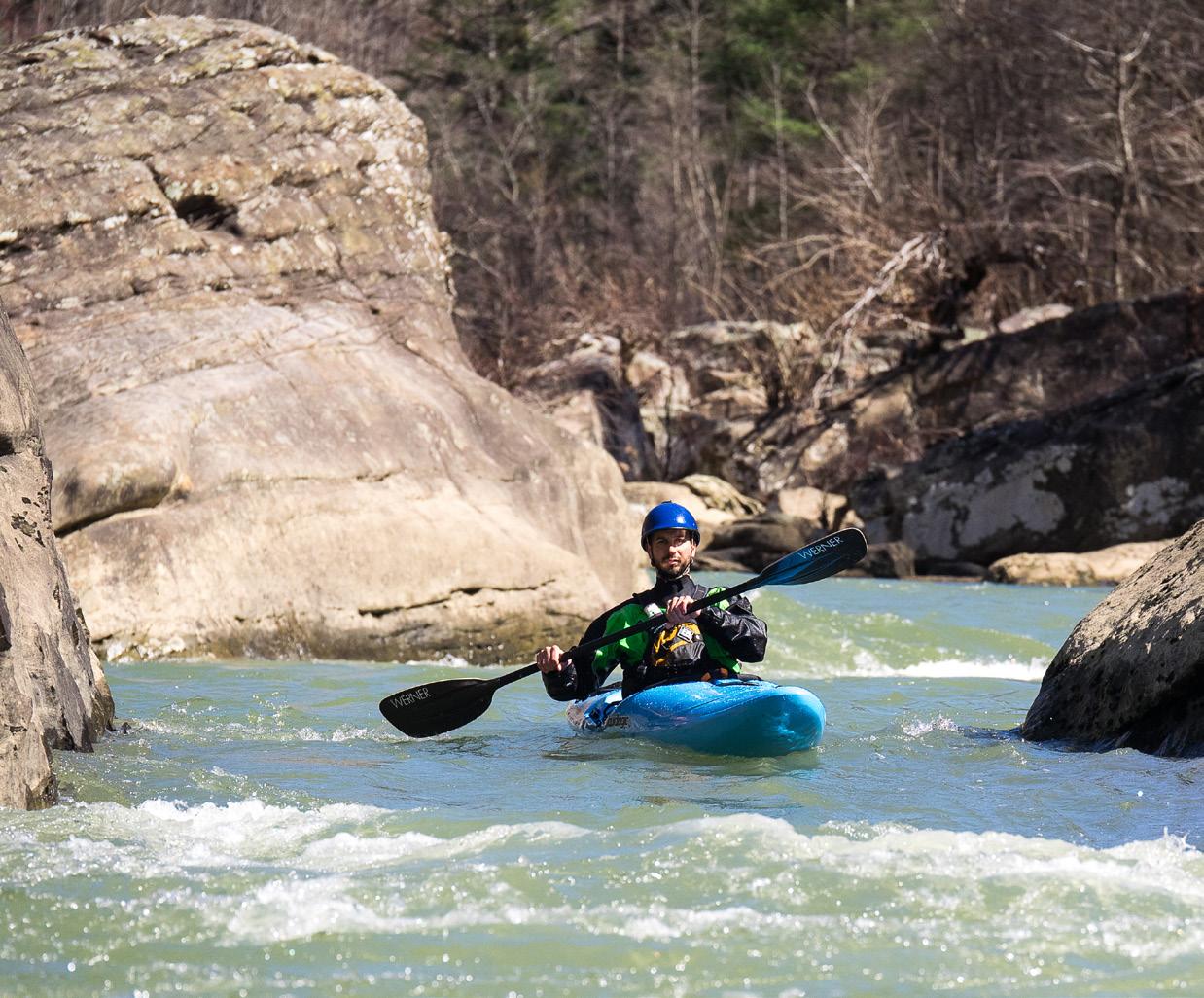
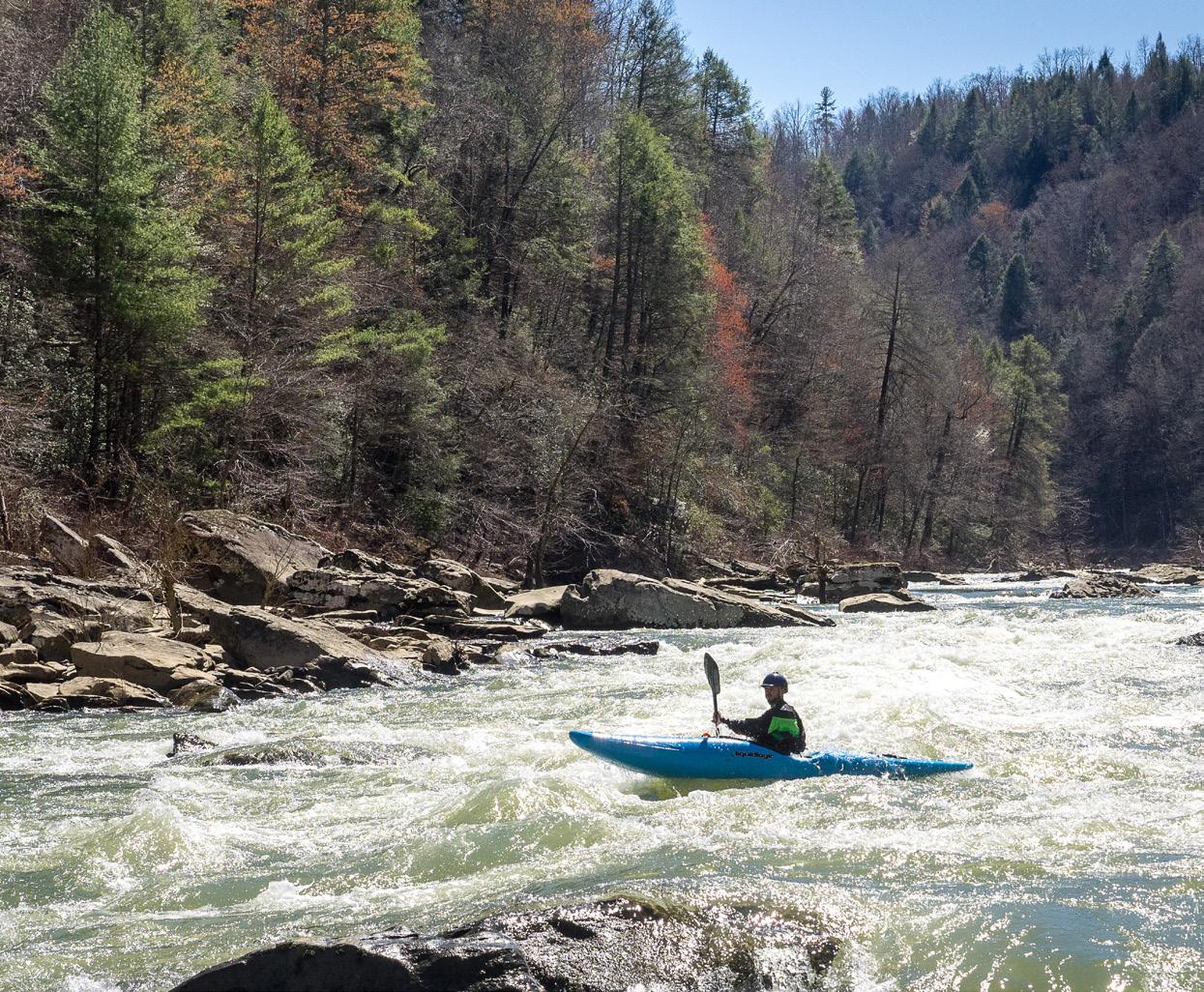

We skirted the steep Double Drop on the far left before punching through holes in Washing Machine and The Ell. My boat was edgy and riding low in aerated water, but by staying straight and paddling hard, I eventually resurfaced.
Most rapids on the scenic Big South Fork are created by massive sandstone boulders that long ago tumbled from the cliffs into the wide channel. As a result, there are hazardous undercuts to avoid, where current passes underneath protruding rocks that can trap a swimmer or pin a kayak. For that reason, this upper run is best for paddlers with class III-IV experience.
Since there’s no dam on the naturally flowing Big South Fork, the primary season is fall to spring, when leafless trees allow more runoff to reach the river. Paddlers should watch for rain in the Oneida, Tenn., area and keep an eye on the USGS gauge
at Leatherwood Ford. While more maneuverable kayaks might scrape past exposed rocks at lower flows, down to around 1,000 CFS (cubic feet per second), we prefer higher flows when running loaded kayaks that are slow to respond. That day we started with 1,800 CFS, and we wouldn’t have wanted much less than that.
With each rapid, we approached gradually, moving from eddy to eddy, while boat-scouting for a safe line through. When we couldn’t get a clear view over the horizon, we beached our boats and stretched our legs while scouting from shore. Some rapids were short and punchy, like Oh Shit. Others, like Honey Creek, were longer and technical. After seven miles of fun whitewater, we had lunch just above Leatherwood Ford, figuring the rest of the trip would be a breeze.
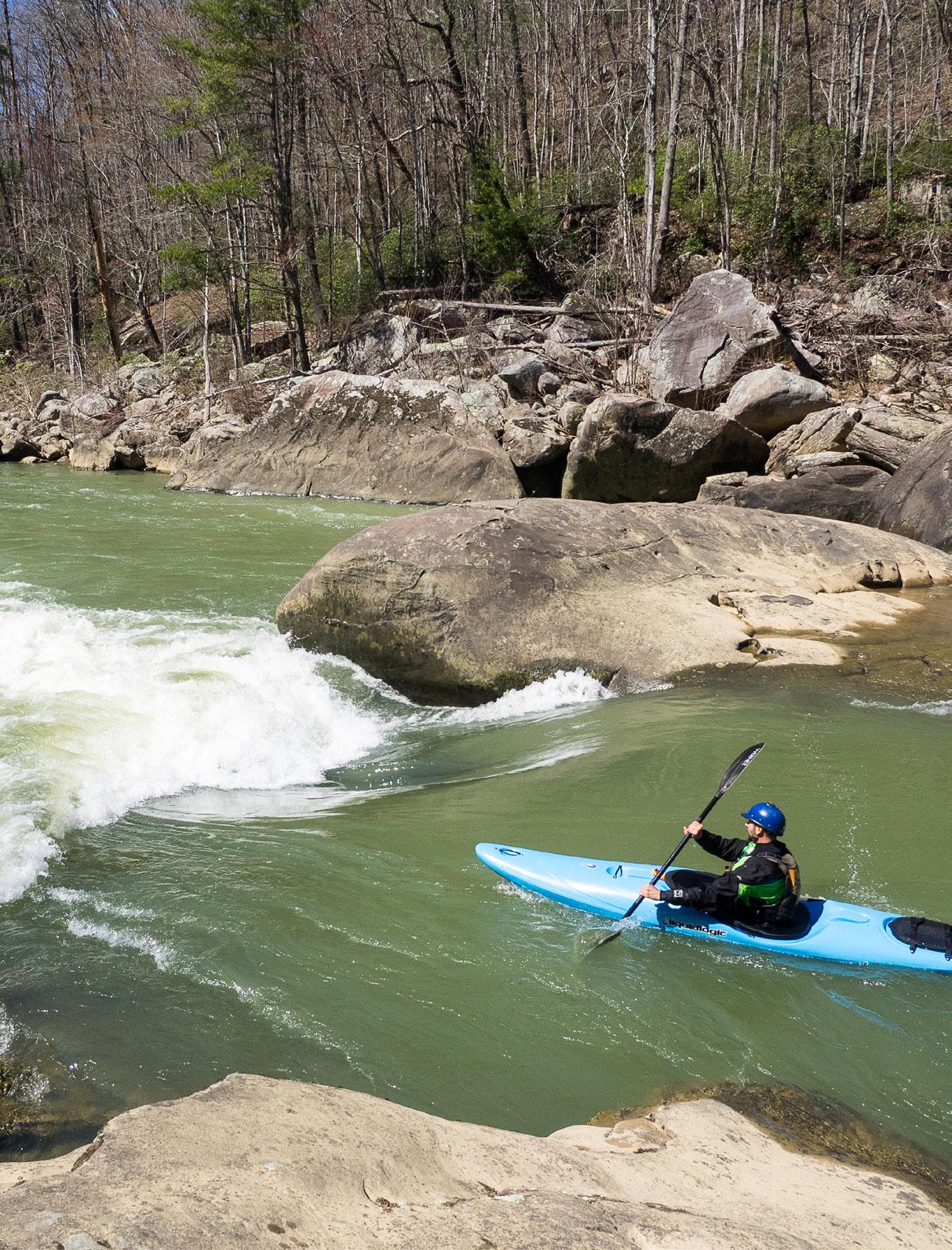

When you look closely, you’ll find multiday paddling trips accessible across the entire country, with the West being the top region. Stunning flatwater trips can be found from the Upper Missouri River Breaks in Montana to the Green and Colorado Rivers in the Canyonlands region of Utah. Whitewater options range widely, including the class III Rogue River in Oregon, the class III-IV Middle Fork or Main Salmon in Idaho, the Class IV-V Grand Canyon in Arizona, and many more.
In the Southeast and Mid-Atlantic, day trips tend to be more popular, given that shorter sections often fall between frequent smaller dams. That said, there are numerous options for overnights. Class I-II multiday trips are possible on the undammed Delaware River, especially upper stretches in New York, Pennsylvania, and New Jersey, including through the Delaware Water Gap National Recreation Area.
A variety of overnights are possible in West Virginia, including the class II-III New River Gorge and the class IV-V Gauley. North Carolina has many class I-II options, from the upper New River to the Lumber River and lower Roanoke River on the coastal plain. Further south, the Okefenokee Swamp in Georgia and Everglades National Park in Florida are popular for flatwater paddling and platform camping.
For our final 27 miles, Curtis and I tacked on two lesser-paddled runs: The eight miles from Leatherwood Ford to Station Camp, followed by 19 miles to Blue Heron, which is mostly long flatwater pools broken occasionally by class I-II riffles. However, there are two exceptions,
two big class IV rapids that are often portaged due to undercuts. Angel Falls, which we ran, is two miles downstream from Leatherwood Ford. Devils Jump, which we later portaged, is one mile upstream from Blue Heron. For this reason, most paddlers seeking class I-II will paddle downstream from Blue Heron.
Above Angel Falls, we beached our boats and hiked a long trail to scout from river-right. At this level, the rapid looked runnable on centerright, a line that avoided the river-left undercut. Sure enough, our lines through Angel Falls started well enough, and we were soon clear of the undercut.
But the moment I relaxed, I caught an edge in the swirling waters at the bottom and flipped. From manhandling my overloaded boat for the past nine miles, my hips felt worn out. When I set up to roll, my poorly packed bow-bag shifted. My right foot slid forward, and my knee slipped out of the thigh-brace. Feeling exhausted, I gave up on rolling and wet-exited. I swam my boat and paddle into the nearest eddy.
They say every kayaker is just between swims, and there’s no shame in that. This was my first swim in years, and it was a good reminder that I needed to spend more time—both on conditioning and outfitting my boat— before future self-supported trips.
That evening, we built our tents at Station Camp. We stared weakly at a fire and broke out some river-cooled (aka warm and skunky) beers. We toasted our successes and failures, to reach this point.
“It’s the end of day one,” I said. “And I can barely lift this can.”
“No joke,” said Curtis. “And we still have nineteen miles left to go.”
We had even longer to go before we’d be ready to resume paddling week-long trips, making 15-20 miles per day. But they do say that selfsupported kayaking isn’t meant to be easy. So, at least we were doing something right.

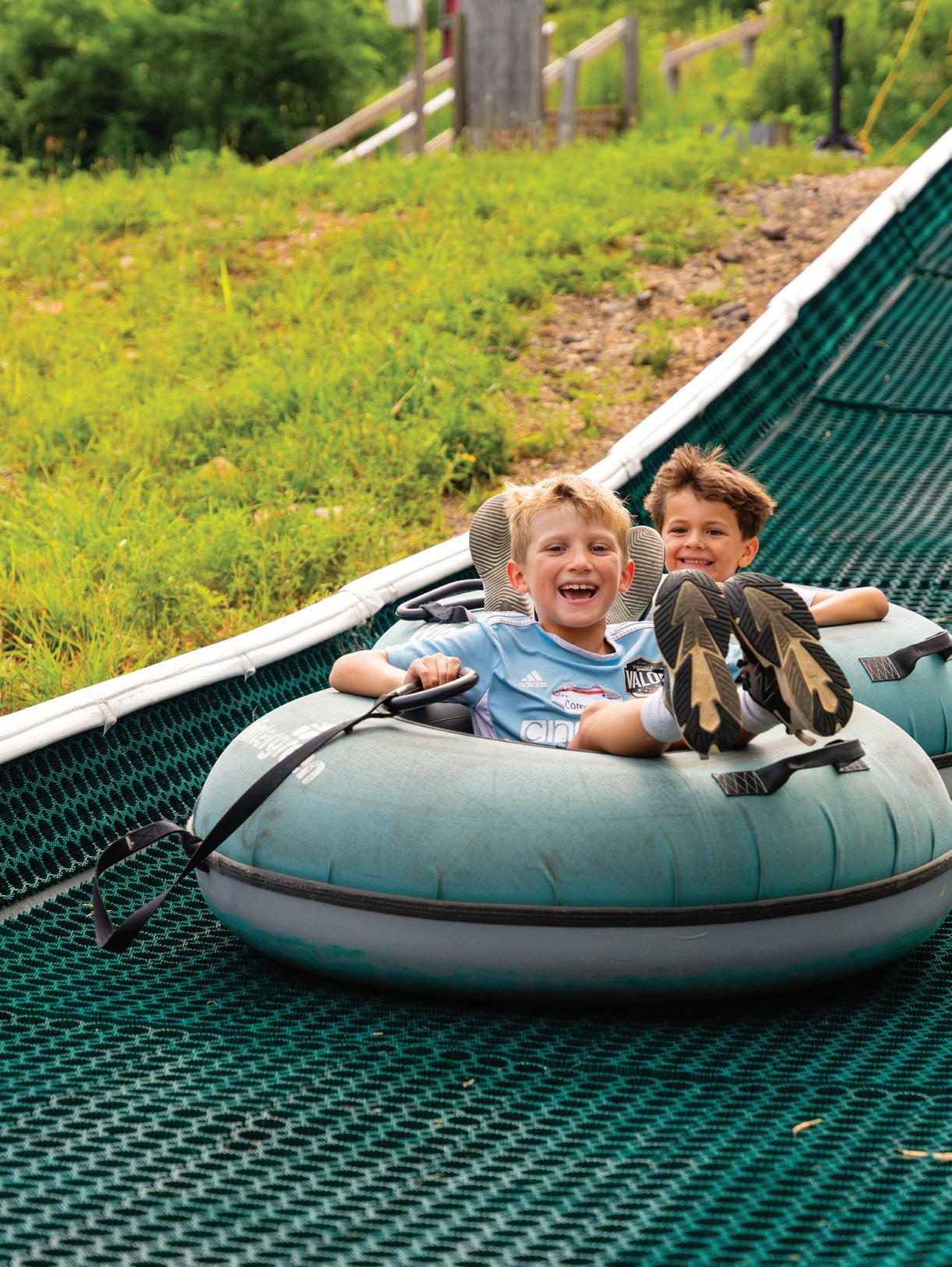
YOUR NEXT FAMILY ADVENTURE STARTS HERE
Celebrate
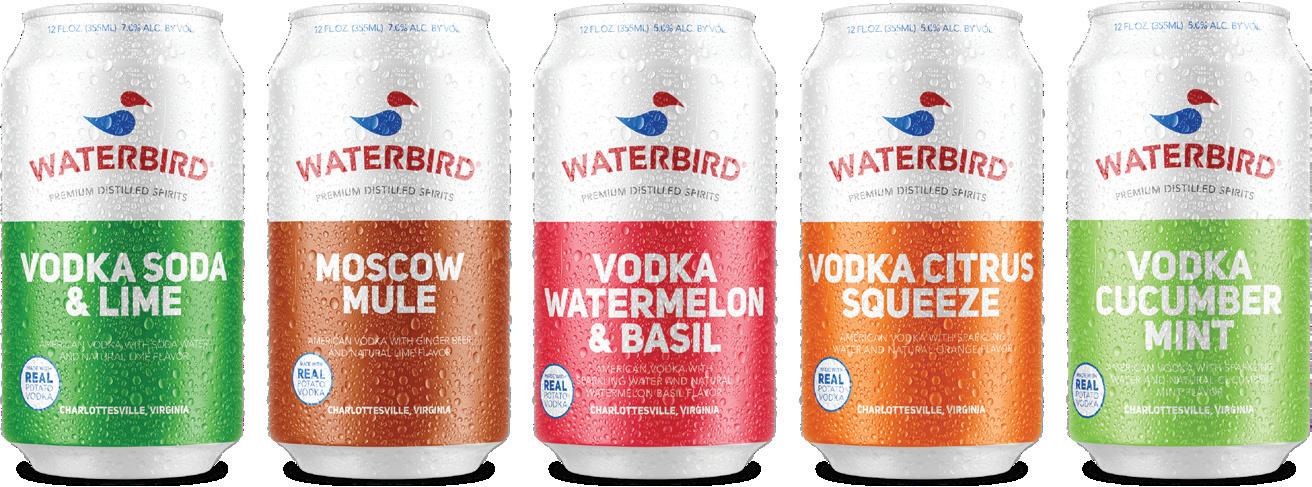
Includes
Book your adventure today.


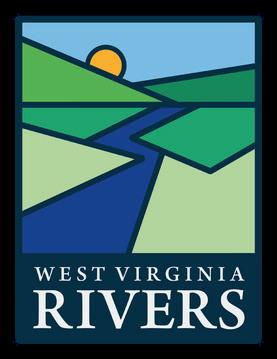

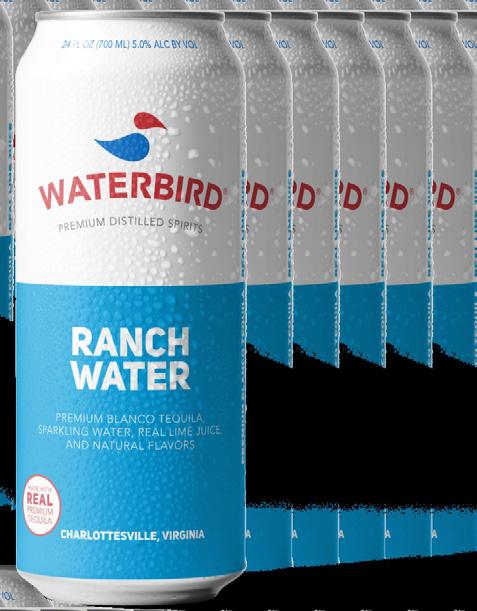



HERE’S THE BEST GEAR WE TESTED TO HIT THE WATER THIS SUMMER.
BY DOUG SCHNITZSPAHN


Here’s the perfect packraft for whitewater enthusiasts seeking big adventure in class III–IV+ rapids. Aggressive rocker and a low-volume center panel stern hull both give the boat more maneuverability and flotation but don’t slow it down. Meanwhile, internal thigh straps and a four-point seat and foot brace system deliver the type of locked-in performance you would expect from a classic hardshell kayak. And the Cargo Fly system lets you store gear (and keep it dry) in the tubes. Best of all, this trustworthy whitewater craft packs down to a 9 pound, 8 ounce package you can strap on your back to hike to your put-in. $1,600; alpackaraft.com
With its retro wood-styled deck and streamlined hull, this is one suave SUP—and the 11-foot inflatable performs just as good as it looks. Soft EVA foam on the deck gives a good grip feel underfoot, and a low-center of gravity delivers stable paddling and smooth, efficient

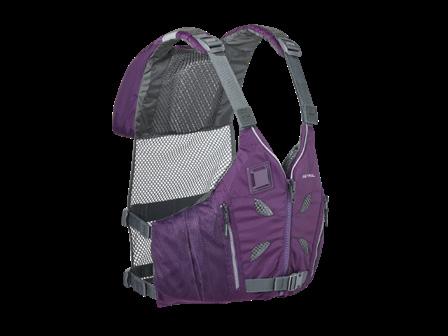


power with each stroke. It’s an ideal board for a summer full of fun and exploration on your favorite flatwater—be it a lake or the ocean. The full kit includes a paddle, pump, repair kit, and roller bag. $1,150; beaulake.com
This is the rec-paddling PFD you need for the full heat of summer.
The breathable EV-Eight features Astral’s Airescape Airflow ventilation system that keeps you from sweating out (even if you are wearing a paddling jacket). Plus, the minimalist profile means your PFD won’t get in the way or chafe when you are digging in. Beyond the comfort, the EV-Eight keeps you confidently afloat should you hit the drink. Bonus: the PDF is Bluesign certified, meaning it meets stringent sustainability and ethical manufacturing requirements. $140; astraldesigns.com
The sun hoodie beats bathing in sunblock when you want to protect
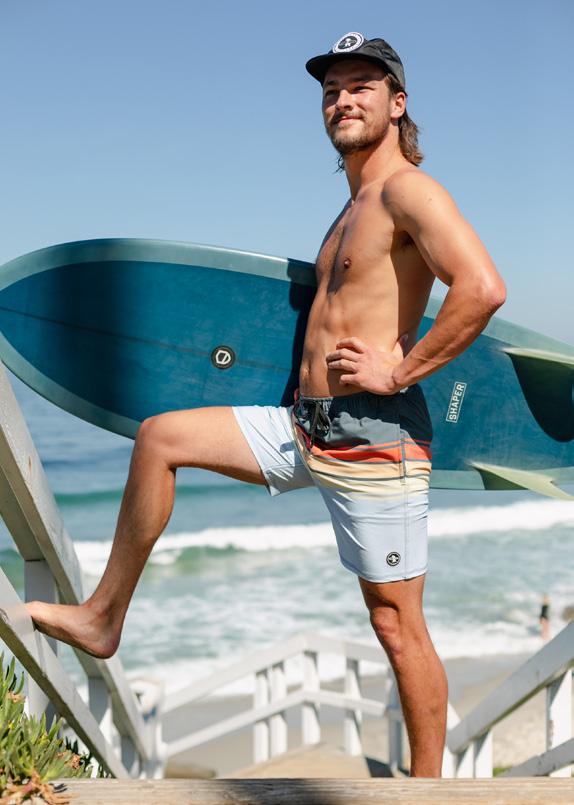
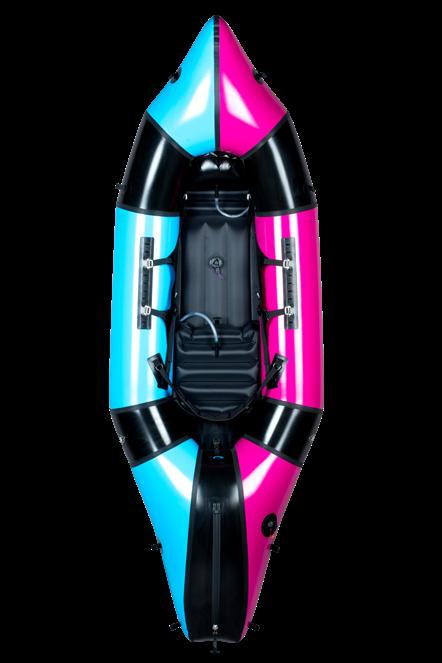
yourself from UV rays during long days on the water—there’s a good reason you see professional fishing guides wearing them. Featuring UPF protection, this baby features four-way stretch, moisture-wicking performance, chlorine and salt resistance, thermal regulation (keeps you warm even when wet but stays cool in the heats), and the fabric will even clean your sunglasses lens without scratching. $70; blackstrap.com
Quick-drying, stretchy, and sturdy, these shorts transition from water to trail without a worry. That makes them the perfect item for a summer full of paddling adventures that take you beyond the boat—or just seeking out fun anywhere you want to roam. $70; outdoorresearch.com
Made with Repreve fabric sourced from recycled plastic bottles, these do-it-all, quick-dry board shorts

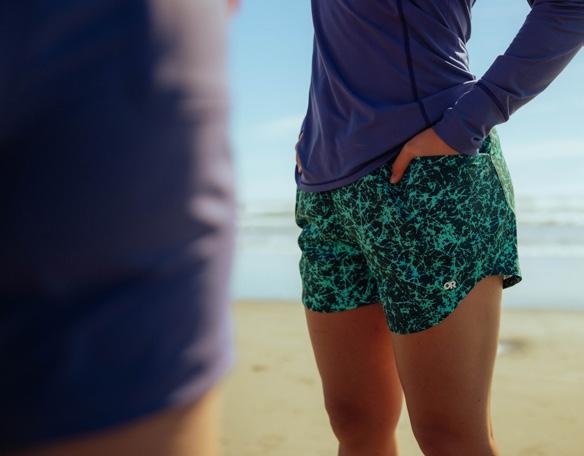
are the ticket for eco-conscious paddlers (and surfers). $58; everydaycalifornia.com
With a wraparound design, these shades are ideal for adventures on the water, from fishing to SUP to serious whitewater. The polarized Ellume lenses cut glare and bring features into sharp focus, and the fit keeps both splashes and perhaps an errantly cast fly out of your eyes. Zeal takes care when it comes to sustainability, as well: The material in those lenses is bio-based and a plant-based Z-resin frame gives these sunglasses green credibility. $189; zealoptics.com
We love the look of Astral’s new boatshoe inspired kicks. With a grippy, siped, non-marking sole, they provide plenty of stability whether you are trying to land a tarpon on a fly rod from a boat or pulling your SUP up to a rocky lakeshore. The breathable mesh upper offers up plenty of ventilation, and a built-in sock liner makes them a tad comfier than the typical boat shoe—in fact, they feel more like a sneaker. (Bonus: They don’t look too shabby in the bar.) Oh, and they are made from 100% recycled materials. $129; astraldesigns.com
BY GRAHAM AVERILL
I’M NOT A CHILL DUDE. A LOT OF people assume I have a laissez faire attitude, probably because of my beard and the fact that I go hiking and ride bikes for work a lot and spend my “office” days wearing slippers. But I am not easygoing. Not anymore. I used to be. There was a time in my life when I drove a VW bus and was prone to stopping in shady spots on the road to play guitar and take naps.
What the hell happened to that guy? Somewhere between my mid-20s and turning 49 years old, I morphed into an uptight, Type A personality who is obsessed with maintaining a schedule and being on time to things nobody expects me to be on time to.
Even the way I spend my free time isn’t very relaxing. My favorite thing to do when I get a morning or afternoon to myself is see how many adventures I can cram into an allotted amount of time. In theory, I could just go for a bike ride, but that doesn’t do it for me. I have to see if I can ride my bike and ski and play some pickleball too. And what if I tried to paddle board between the skiing and the biking?!
I feel compelled to pack as many “fun” activities into a single day to the point where a relaxing day of adventure starts to feel like work. What’s wrong with me? I used to go with the flow, but now I’m like some horny salmon fighting the current. I’m using a metaphor here, but I’m also speaking in literal terms. One of my favorite activities during summer is to put in on the French Broad River with my paddle board and paddle upstream for an hour. I’m literally going against the flow. I do this because it’s an efficient workout. I do this because I’m sick and need help.
I want to blame my kids and parenthood in general for my turn to the dark side. Being responsible for the morality and well-being of small people turns us into efficiency
consultants and task managers obsessed with TPS reports. But if I’m being honest, I was well on the way to Uptight Town long before my kids were born. It’s only gotten worse as I’ve aged. I’ve tried yoga and meditation. I’ve tried drinking, I’ve tried box breathing. I’ve tried not drinking and cold plunges. I’ve even tried drinking excessively…but I just keep winding myself tighter and tighter as I age.
But recently, something beautiful happened. I got the opportunity to spend two long days paddling the French Broad River for the first time since Hurricane Helene hit. It was a work project—MountainTrue, the non-profit that has been leading river restoration, was paddling the length of the river to assess the state of recovery and I was tagging along for an article. If it wasn’t for work, I never would’ve agreed to the adventure. Spending two full workdays sitting in a boat wreaks havoc on a Type A’s daily schedule.
For most of the first day, I was anxious about how much I wasn’t getting done. I had articles to write and kids to micromanage. What was I doing sitting in a rubber raft on a Wednesday? I kept wanting to reach for my phone and check… everything. But over time, I settled into the slow, mellow rhythm of the trip. Most of the river people I know (kayakers, guides, avid canoeists) are not uptight people. One of my best friends is the French Broad River Keeper and he’s the opposite of uptight. Down loose? Is that the opposite of uptight? Cause that describes him pretty well. I think it’s because the river strips away your agenda. You can only move at the speed of the water. You literally must go with the flow.
We hit the whitewater-heavy Section 9 first, bouncing from one class III-IV ledge and wave train to another. There wasn’t much for me to do as I was in a big rubber boat guided by an experienced oarsman,
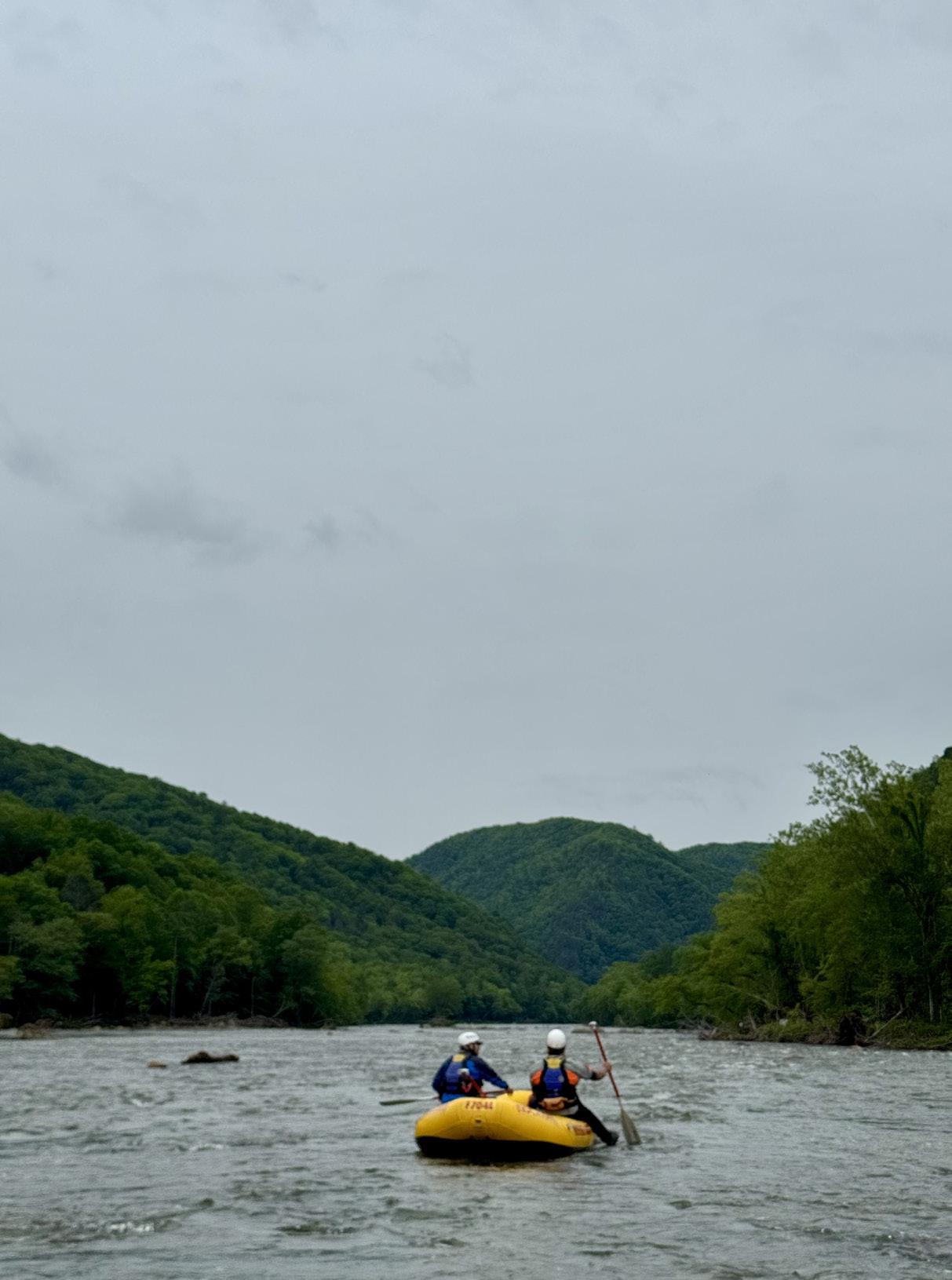
so all I had to do was not fall out of the boat.
I did great at not falling out of the boat.
The second day was a little more mellow as we headed into Tennessee, so I hopped on a standup paddle board and cruised through smaller wave trains and long stretches of flat water. The pace was excruciatingly slow, but there was nothing I could do about it. You can only go as fast as the river wants you to go. You could try to paddle hard and move the boat faster, but you’re just going to wear yourself out and ultimately get to your destination about three minutes sooner than if you just took it easy. So I just took it easy.
You can’t hurry on an extended river trip. You can’t pull your phone out, you can’t send emails, or try to stick to a schedule. It’s like exposure therapy for uptight people. At first, I kept asking my River Keeper buddy how many
miles we had to go, and he would say something like, “I don’t know, maybe 9 miles. Or it could be 12.”
At some point I stopped asking and settled into the experience. It was slow and beautiful. We took lots of breaks (something I normally never do) and hiked to the top of cliffs overlooking the river and ate sandwiches in shady spots. It felt like my younger days, traveling in the VW bus and pulling over just because I wanted to pull over.
With every mile we paddled, my urge to be somewhere else, to do something productive, to check my email and tell my kids an important life lesson, dissipated.
I know it’s not permanent. These two days on the river didn’t cure my Type A personality, but it gave me a glimpse of the younger, more relaxed version of myself. And I liked it. If I work really hard, I might be able to squeeze more relaxation like this into my schedule.

BY JEDD FERRIS AND DAVE STALLARD
curate a playlist of new music, mainly focusing on independent artists from the South. In July, we’re highlighting new tunes from Wednesday and Ryan Davis and the Roadhouse Band, as well as a new solo track from Old Crow Medicine Show’s Ketch Secor.
“Elderberry Wine”
North Carolina indie countryrock band Wednesday follow up the acclaimed 2023 album, “Rat Saw God,” with a new single that tones down some of the group’s usual punk edge. Band leader Karly Hartzman channels Lucinda Williams and Waxahatchee’s Katie Crutchfield in this twangy ramble about how a seemingly sweet relationship can turn toxic if partners can’t find the right balance in their lives together. – J.F.
“Slow Train”
The train that the heartbroken protagonist is riding in Jeremy Garrett’s take on this Larry Sparks classic is the only thing about this tune that is slow. Out of the gate, this is a roaring bluegrass monster. There are notes—lots and lots of notes—delivered by Garrett and his cadre of pickers.
Ryan Cavanaugh’s banjo and Chris Luquette’s guitar vie with Garrett’s fiddle for the fastest breaks, and it’s easy to believe that the legendary Larry Sparks himself would nod his approval and call it a three-way draw. – D.S.
“Go On”
On “Go On,” Minnesota’s rockin’ folkies the Last Revel attack their instruments with punk aplomb as they detail a love gone bad. Focusing the furious energy of an old time Appalachian jam, Lee Henke sings desperately of a life moving forward with or without a lover after the collapse of their relationship. Henke’s raw vocal delivery is matched by Ryan Acker’s clawhammer banjo work and fiddler Vinnie Donatelle’s frenetic runs on this emotive acoustic rager. – D.S.
“Dickerson Road”
Old Crow Medicine Show leader Ketch Secor is prepping his first solo album, “Story the Crow Told Me,” which comes out July 11. In the record’s lead single, Secor pays tribute to a rough stretch of Nashville known for industrial lots and cheap motels where misfits and outcasts congregate. His musical arrangement matches the theme, as stomp-rock beats mingle with edgy banjo licks. – J.F.
“Heavy as Heaven”
After more than ten years of fronting Charlottesville, Virginia’s Lord Nelson, singer/guitarist Kai CroweGetty dropped his first solo album, “The Wreckage,” last month. “Heavy as Heaven” hits just as hard as the title suggests, littered with imagery of damaged souls and lives marred by injury and sadness. With a steady rock beat and haunting pedal steel and organ, Crowe-Getty offers a respite from the pain, delivering an uplifting message of finding hope when all seems lost. – D.S.
“Landlocked Heart”
Virginia tunesmith Will Overman crafts an anthem for touring musicians addicted to the road life. “I drove 20 hours round trip, for an hour-

long hit,” he sings in this sweeping acoustic tune that details plenty of the hardships independent artists face chasing the dream. But even if his descriptions are weary, Overman sounds inspired, reveling in the reality that with his songs in tow he “can’t have a landlocked heart.” – J.F
“New Threats from the Soul”
An emerging voice from Louisville’s eclectic music scene, Ryan Davis specializes in idiosyncratic roots tunes that he sings with a quirky baritone reminiscent of David Berman and Will Oldham. The title track to his new album (out July 25) is a nine-minute, pedal steel-led ramble, full of outsider

features a guest appearance from Catherine Irwin of Kentucky alt-country pioneers Freakwater. – J.F
“Fading Back into the Night”
By his own admission, Ben Nichols, long time guitarist and singer for roots rockers Lucero, has written more than a few songs chronicling his own screw ups. This one fits squarely in that category, with Nichols opining about finding second chances when life’s first chances go squandered. Few voices in roots rock hit like Nichols’, and “Fading Back into the Night” finds him at his raspy finest, gravelly growling about redemption and discovering light when life seems darkest. – D.S
To hear these songs and more, follow the Blue Ridge Outdoors’ Trail Mix playlist on Spotify.

